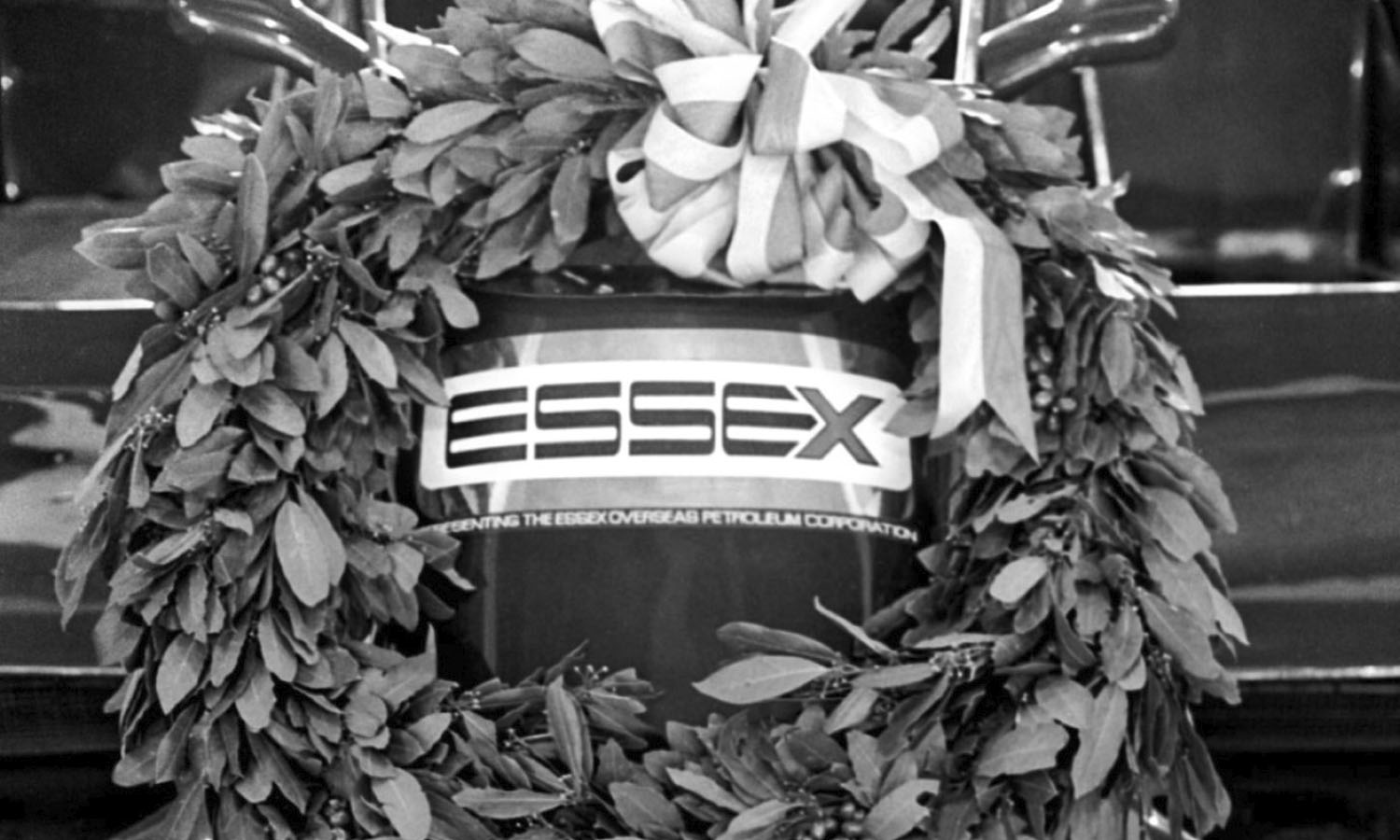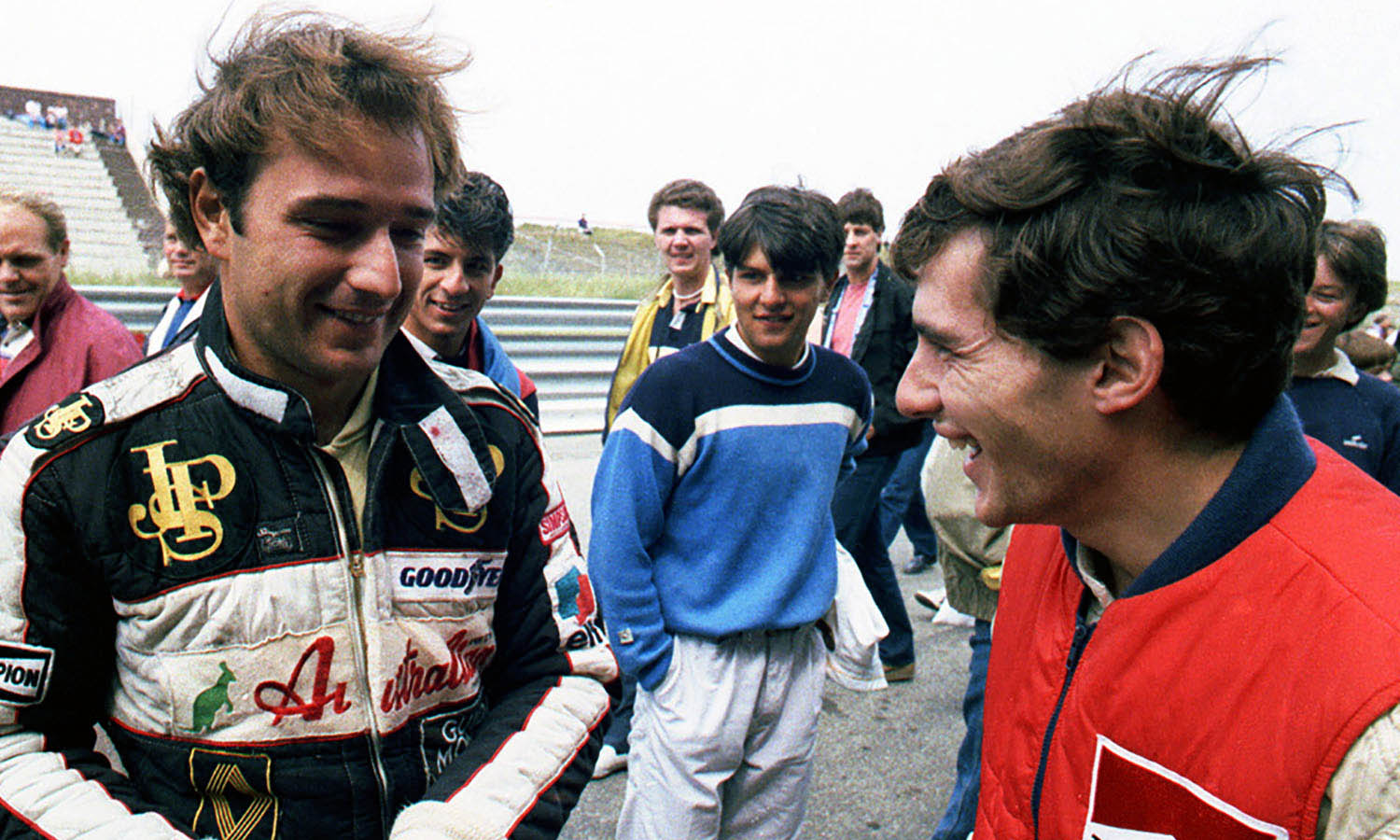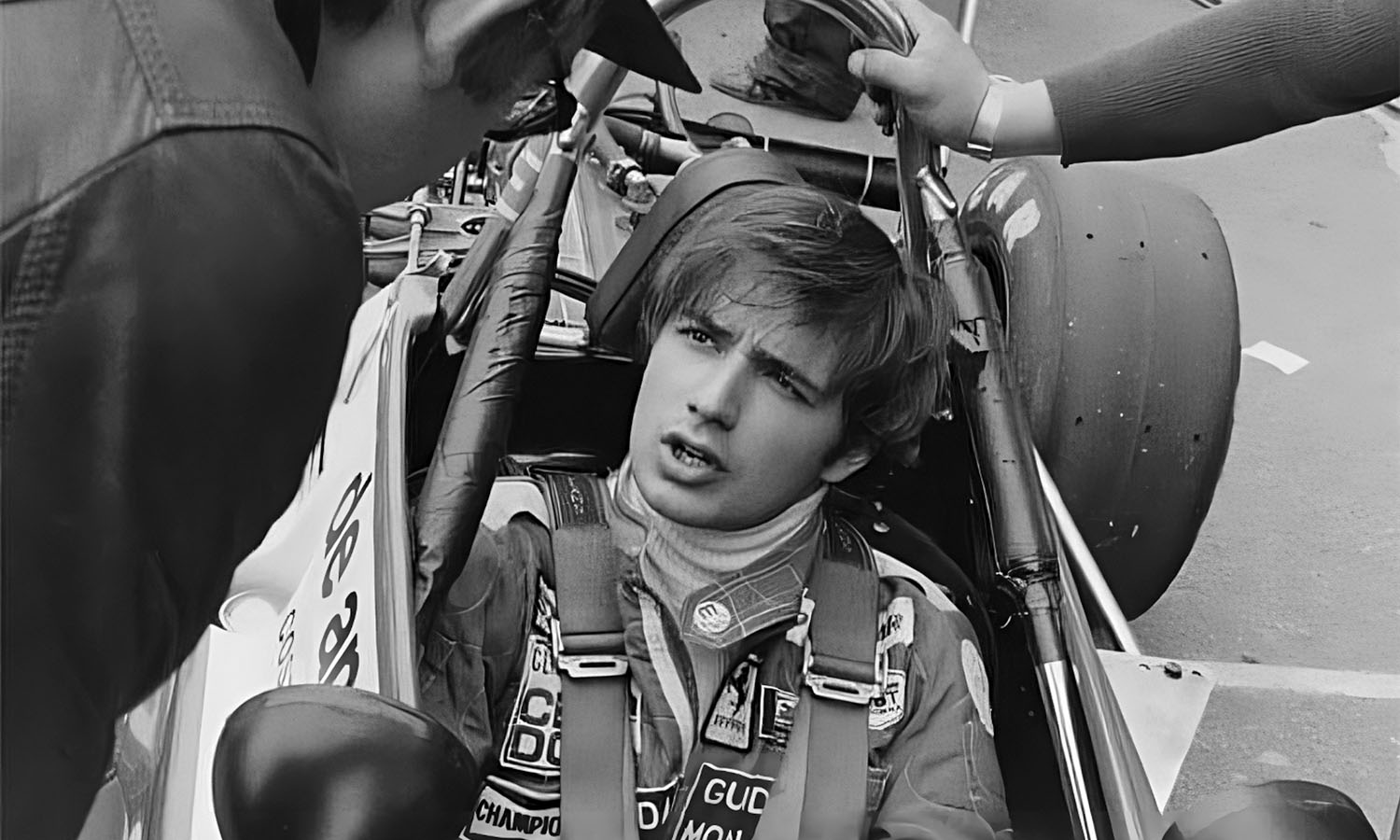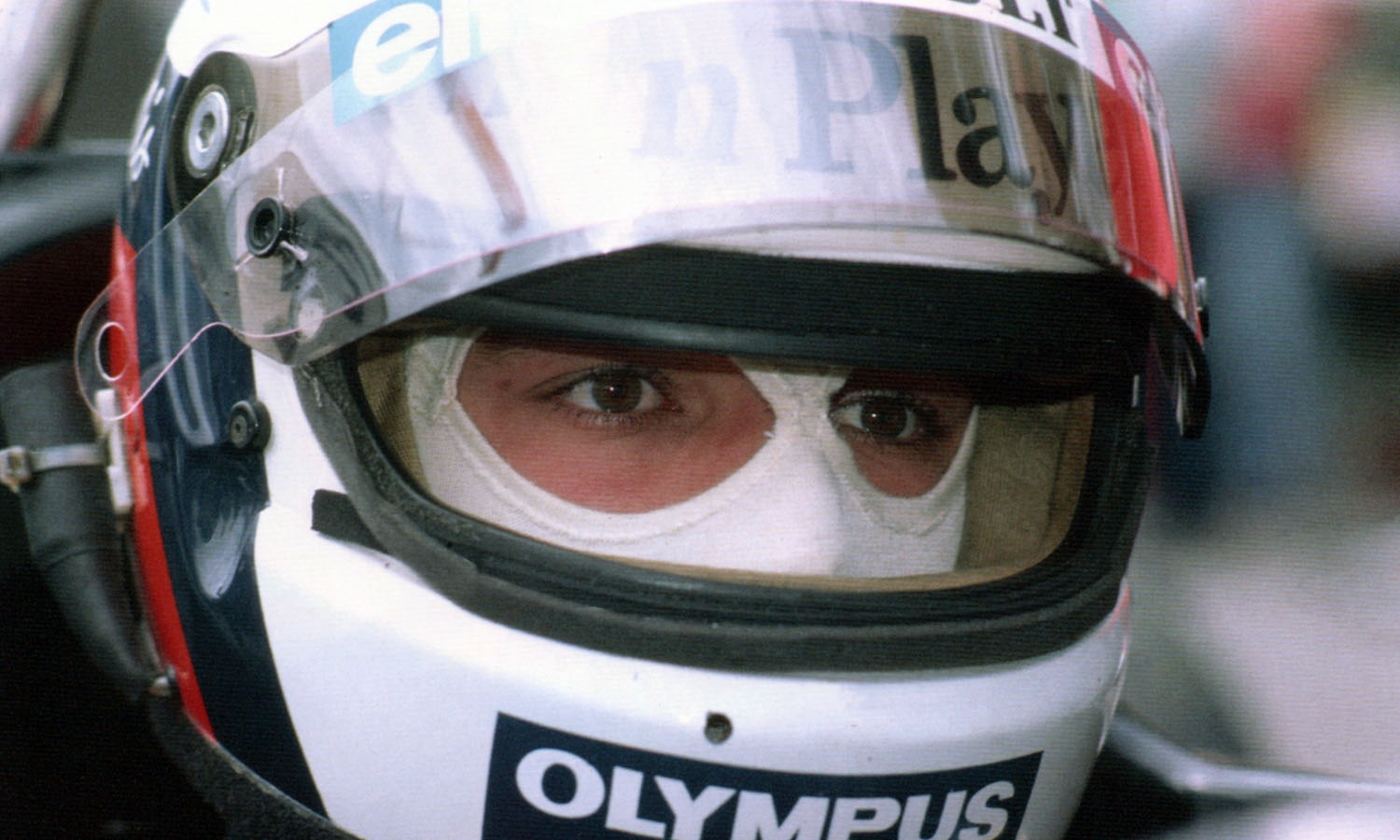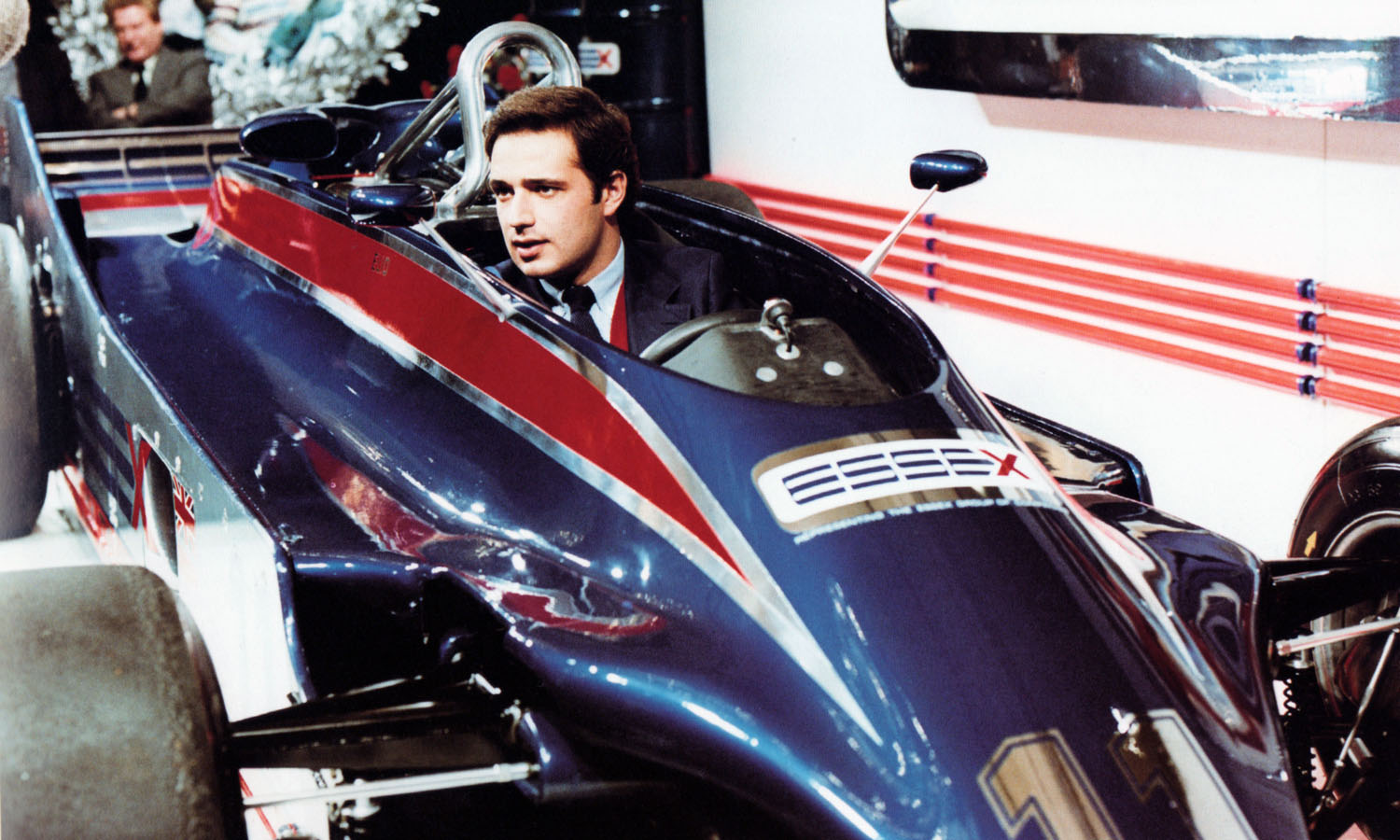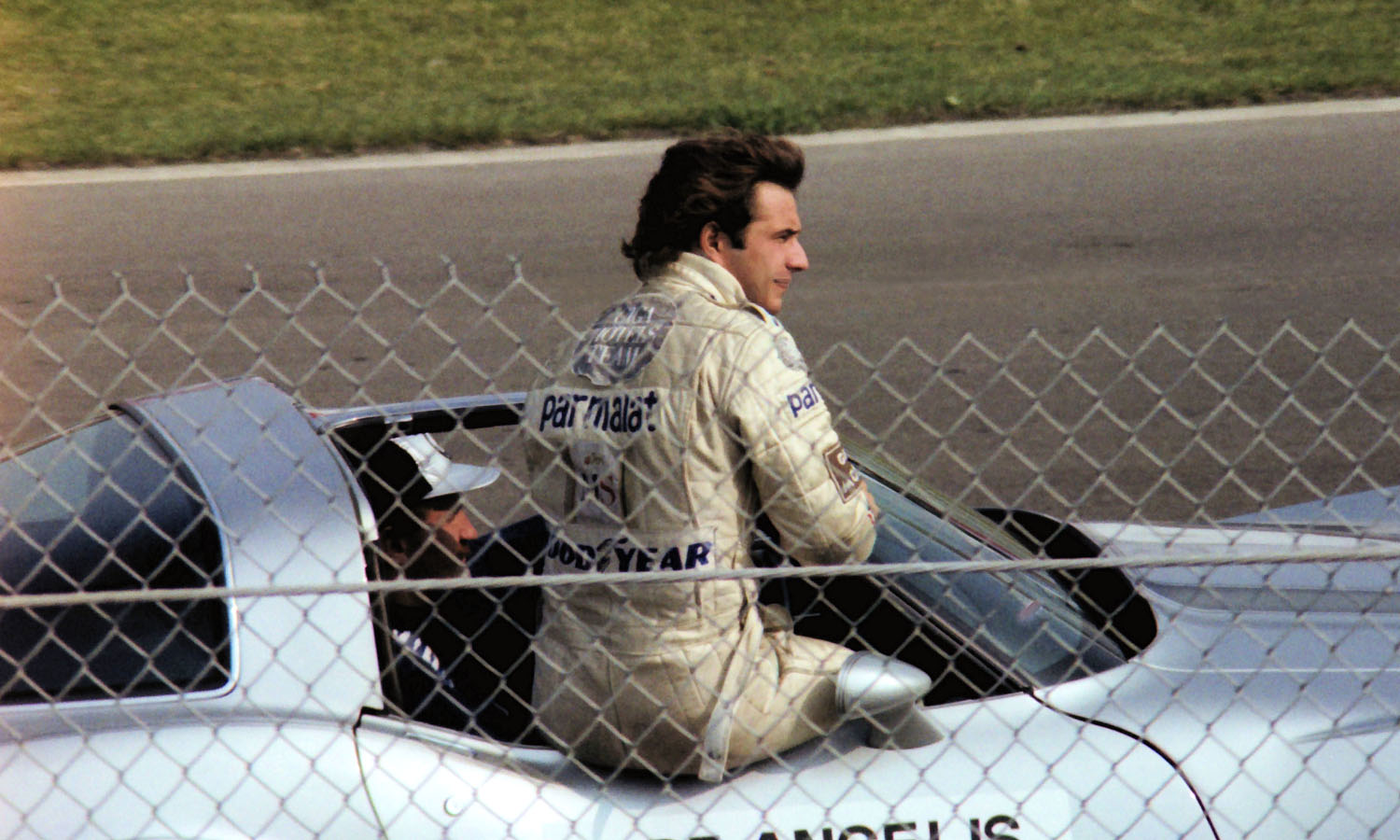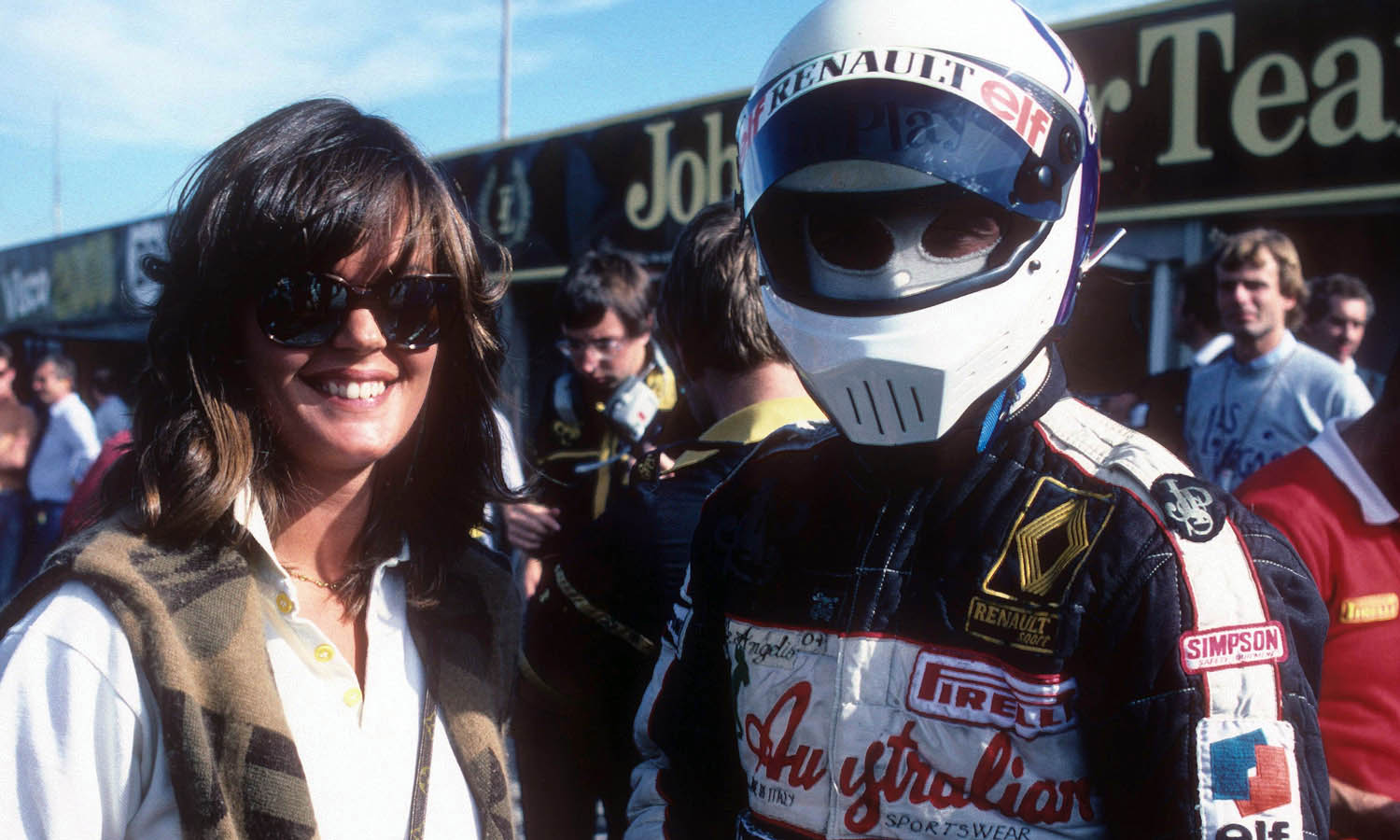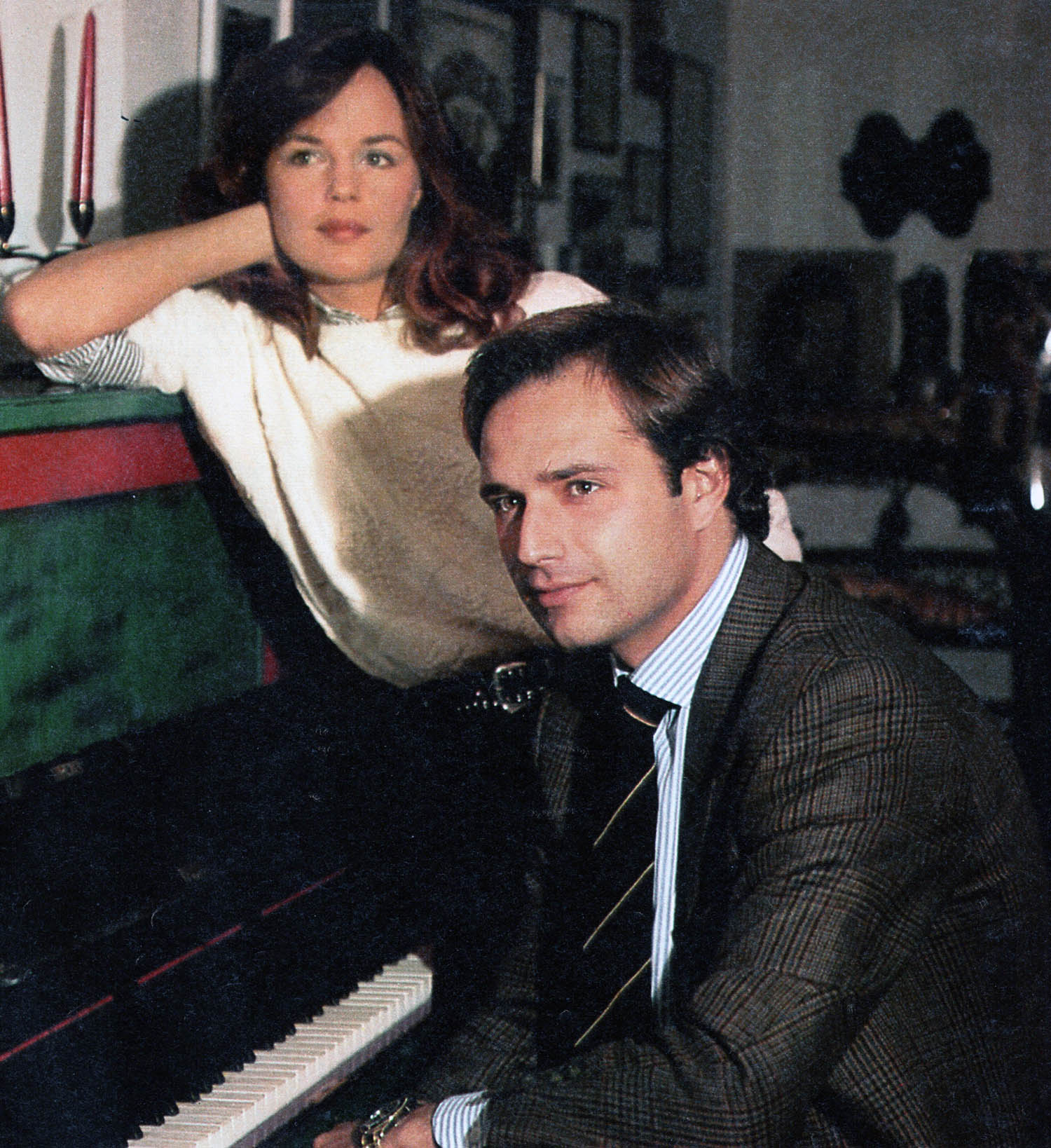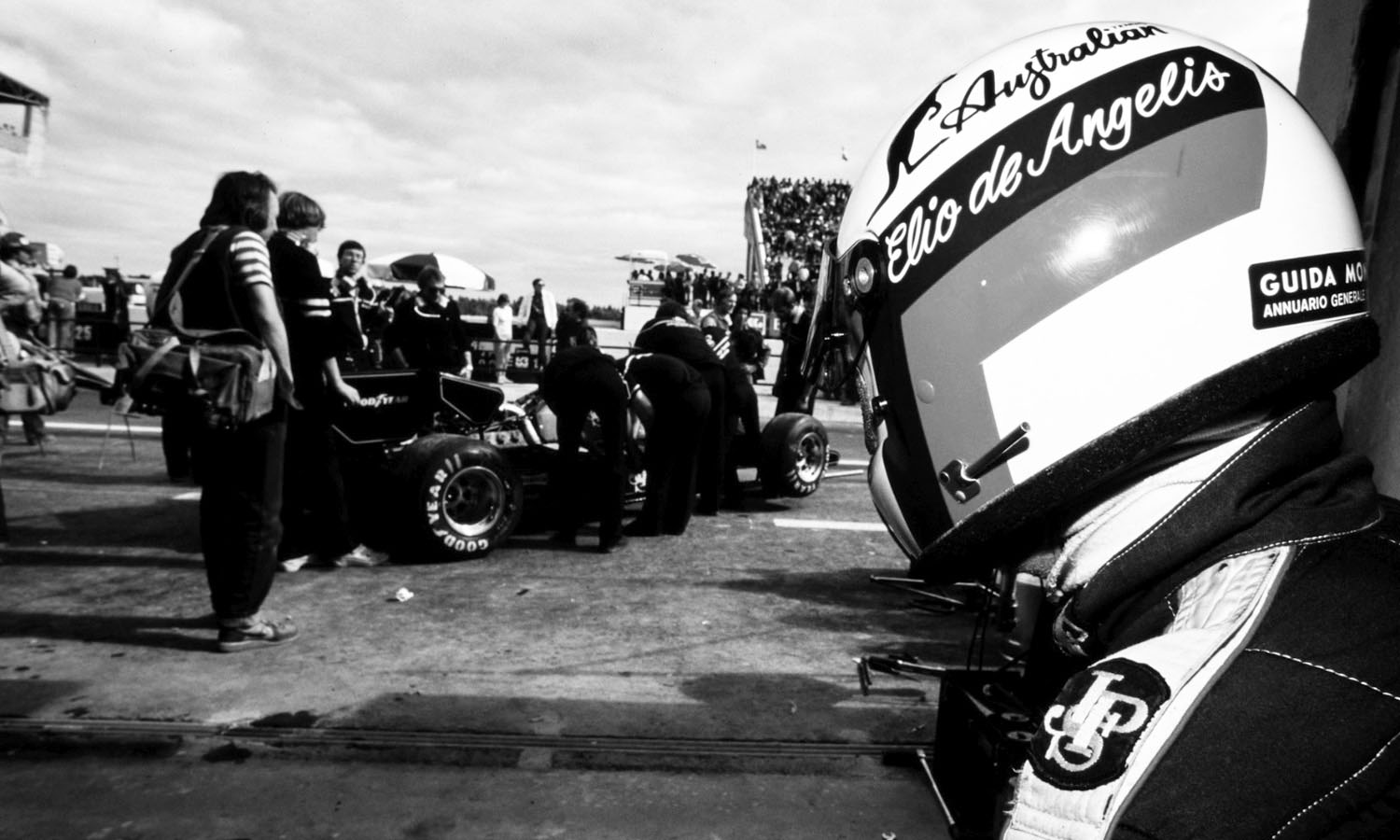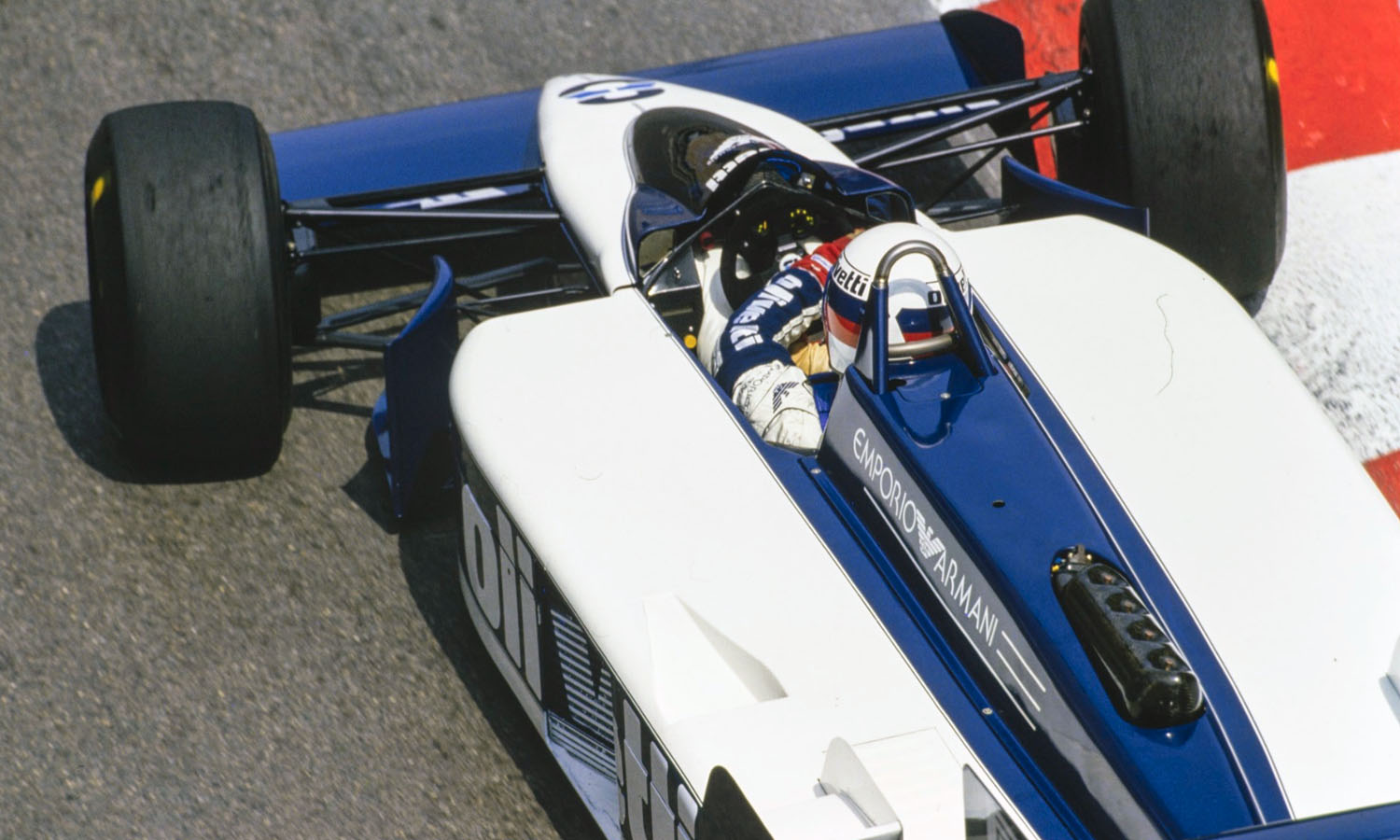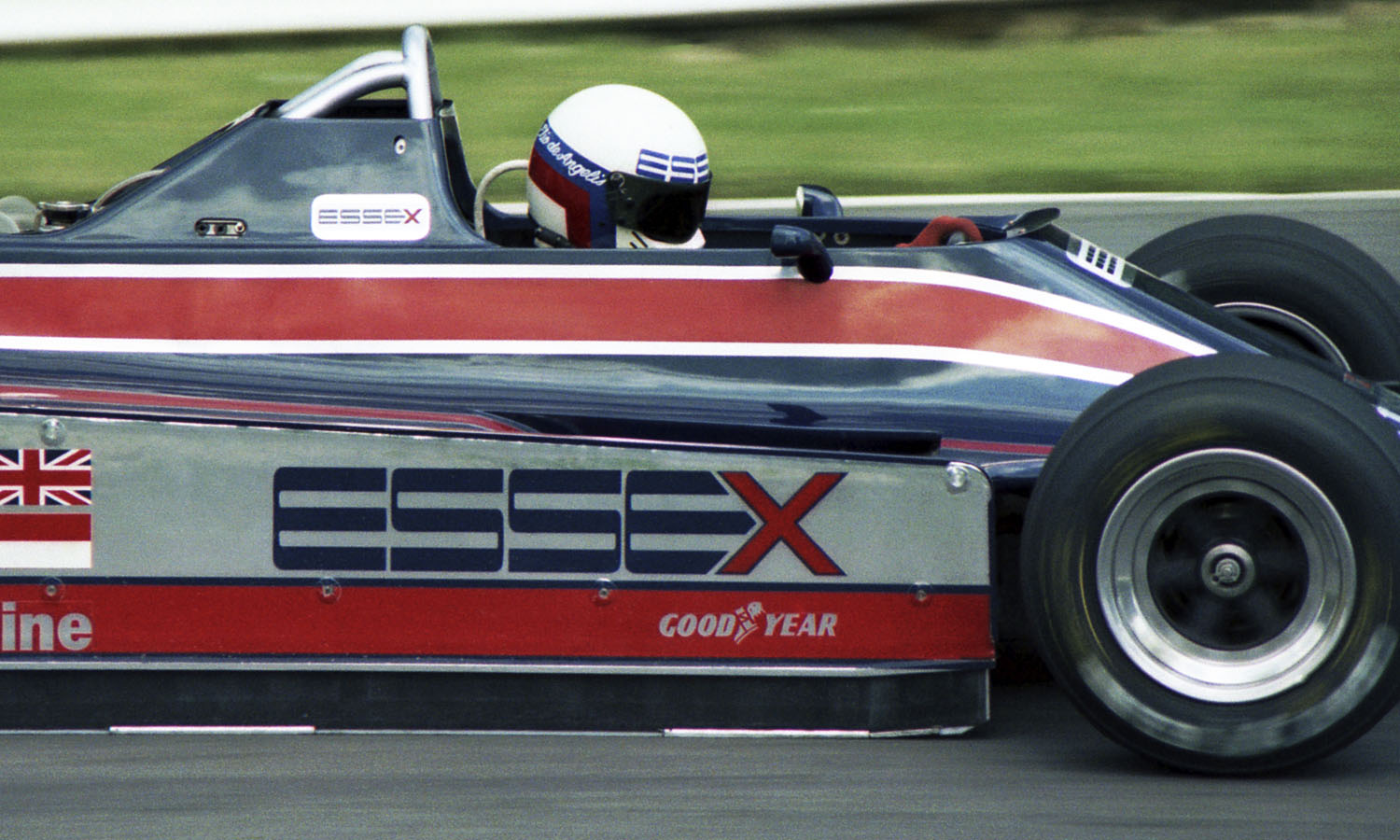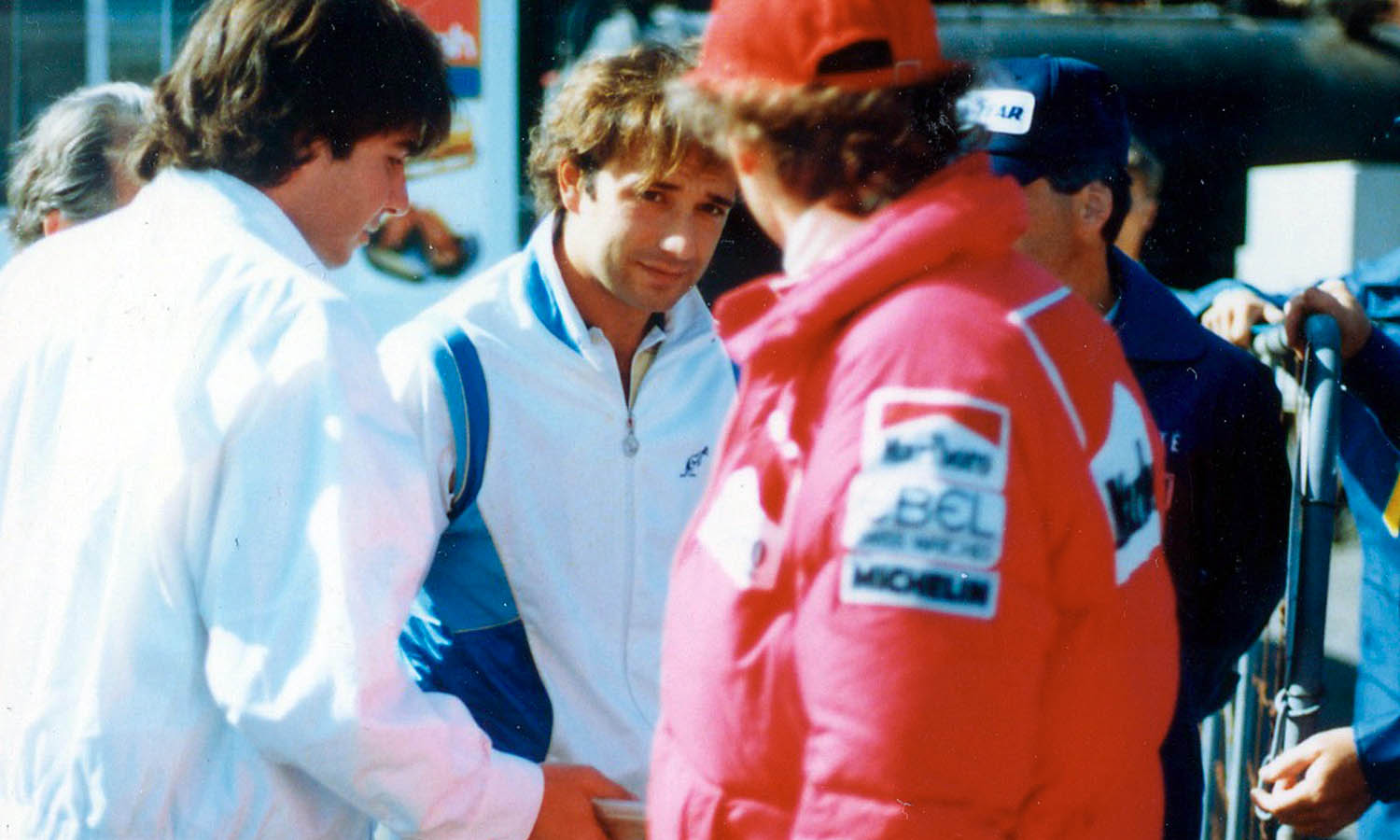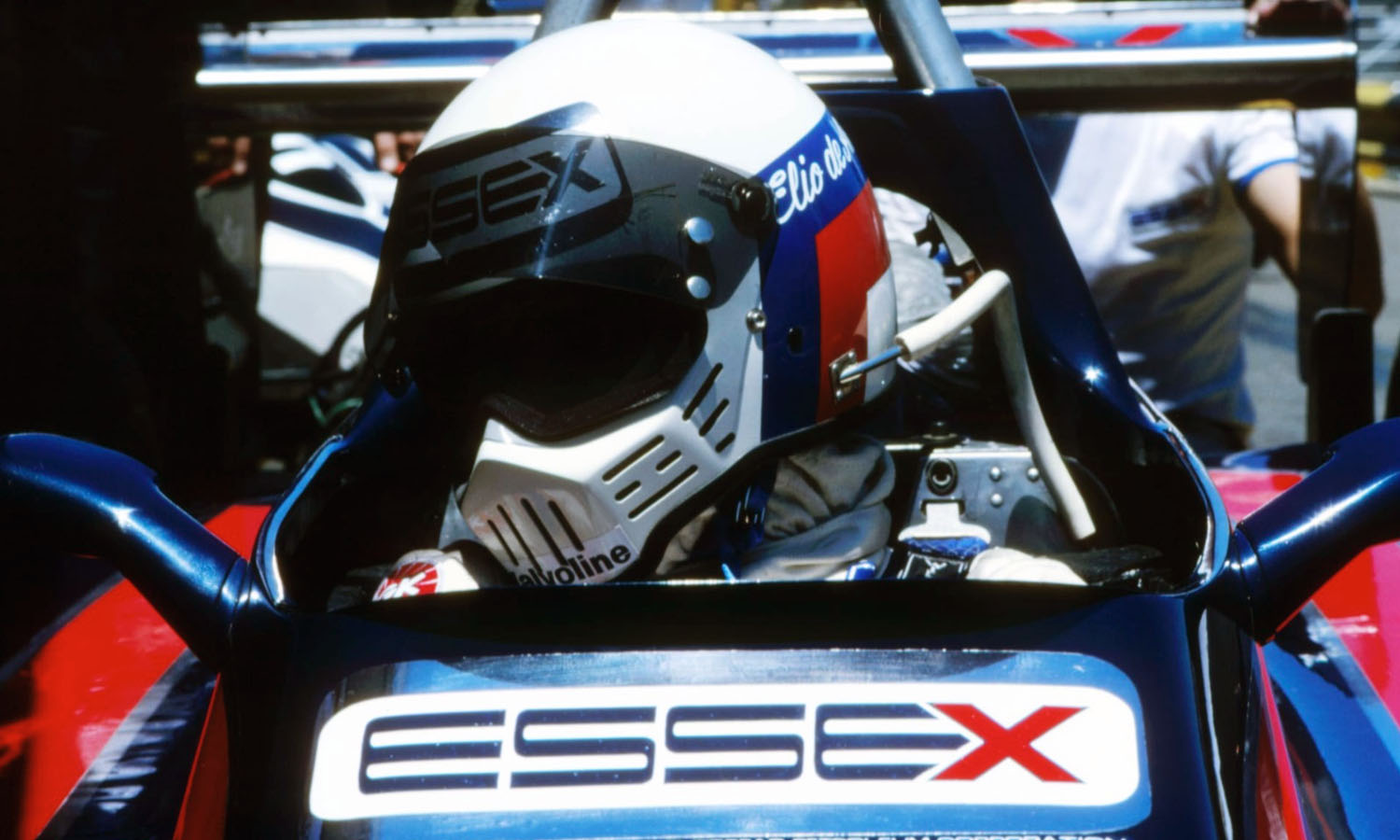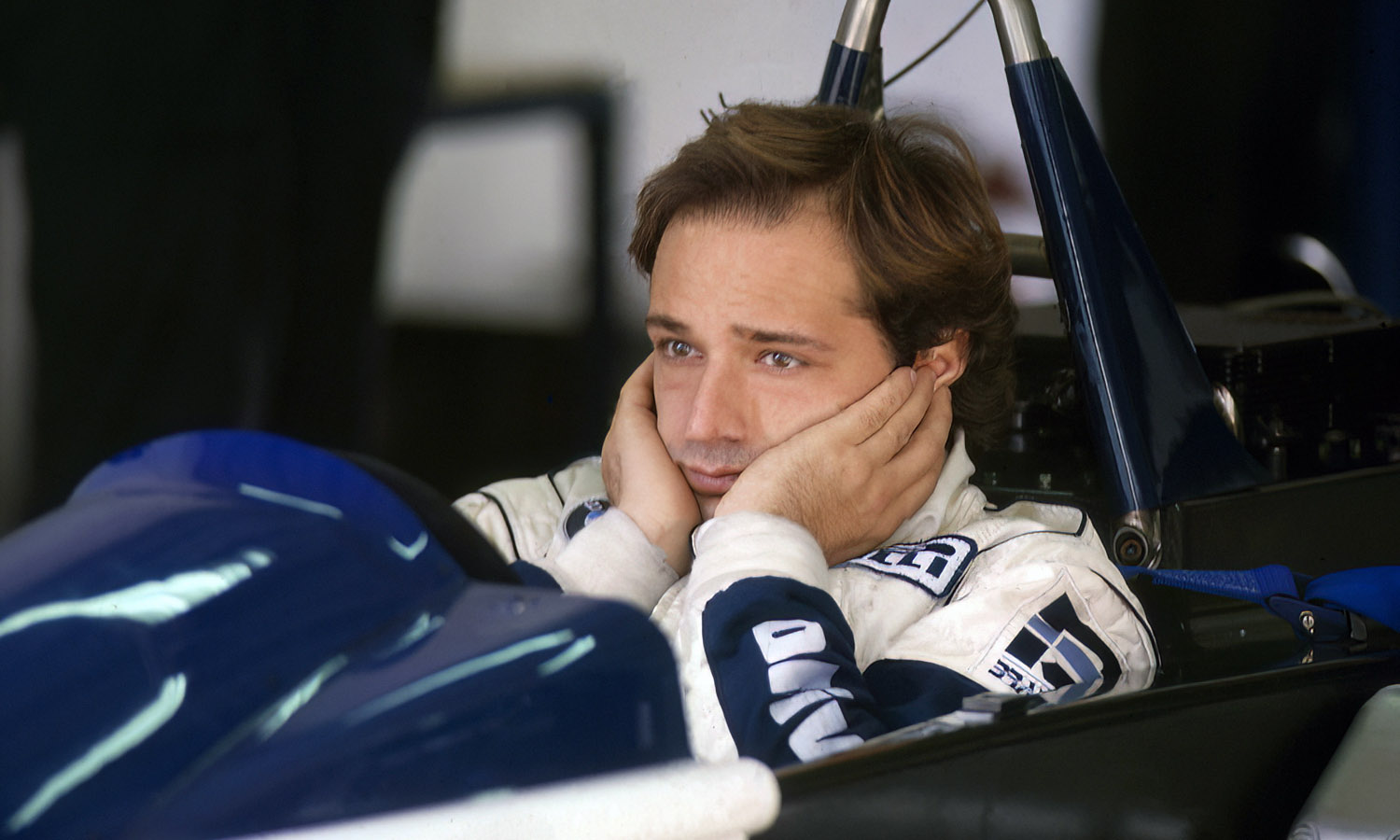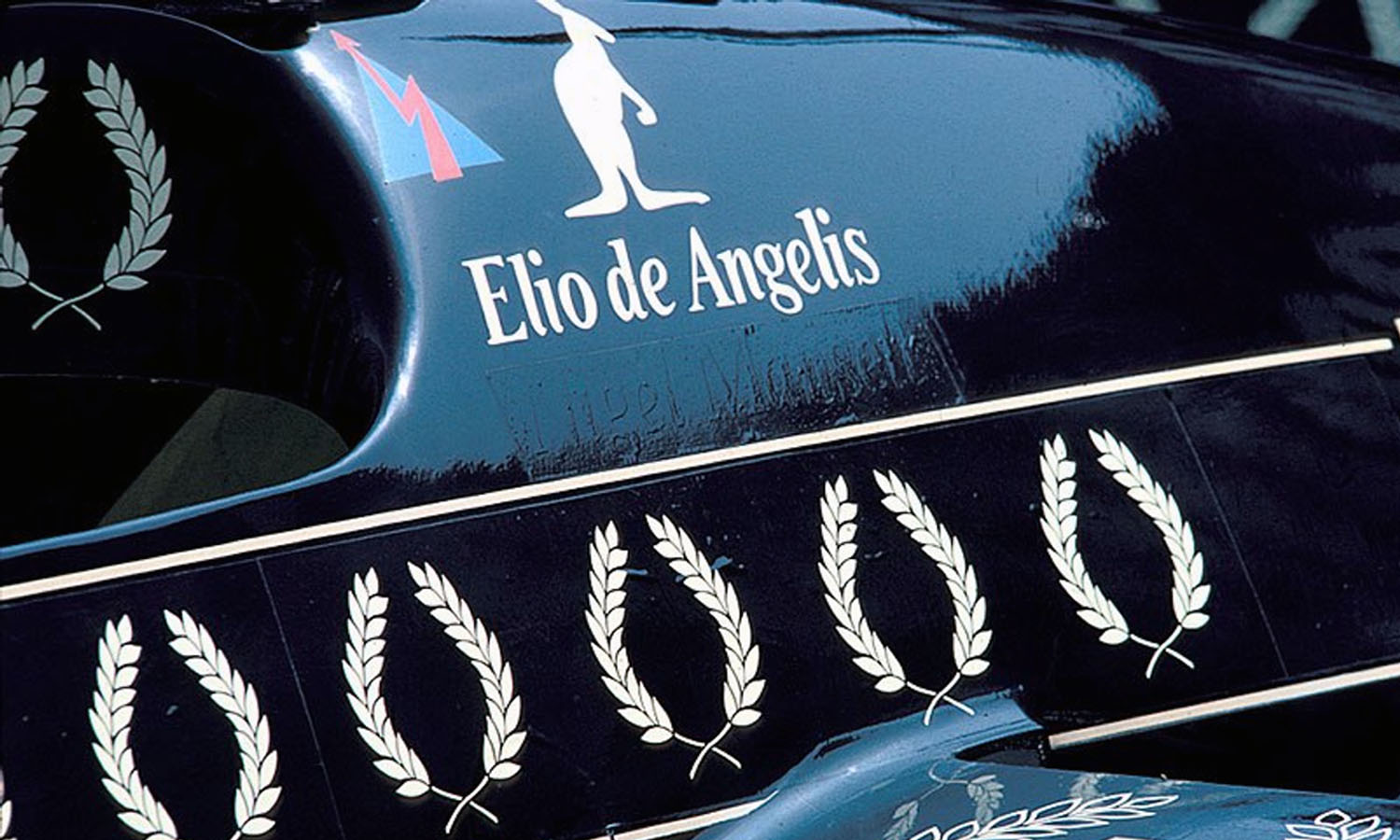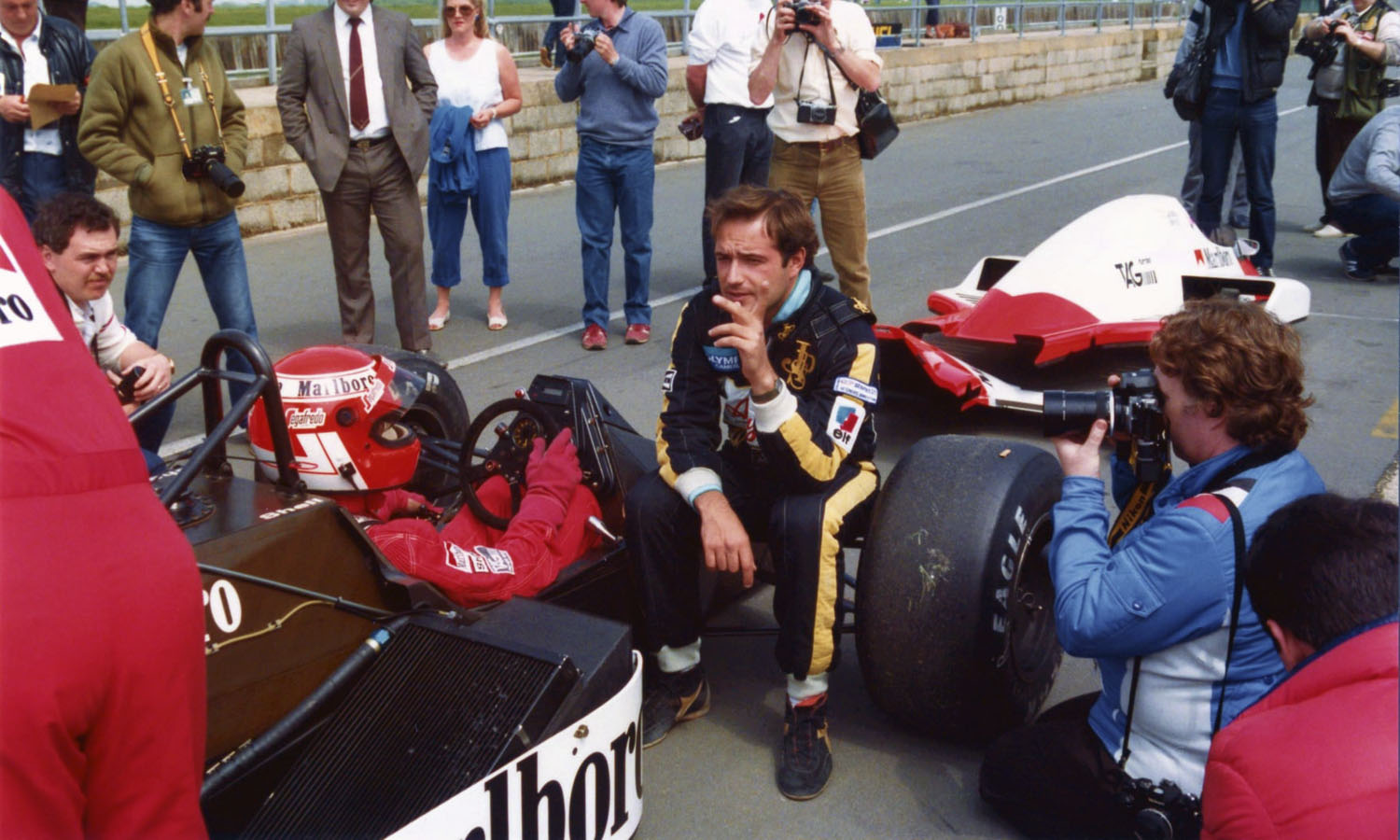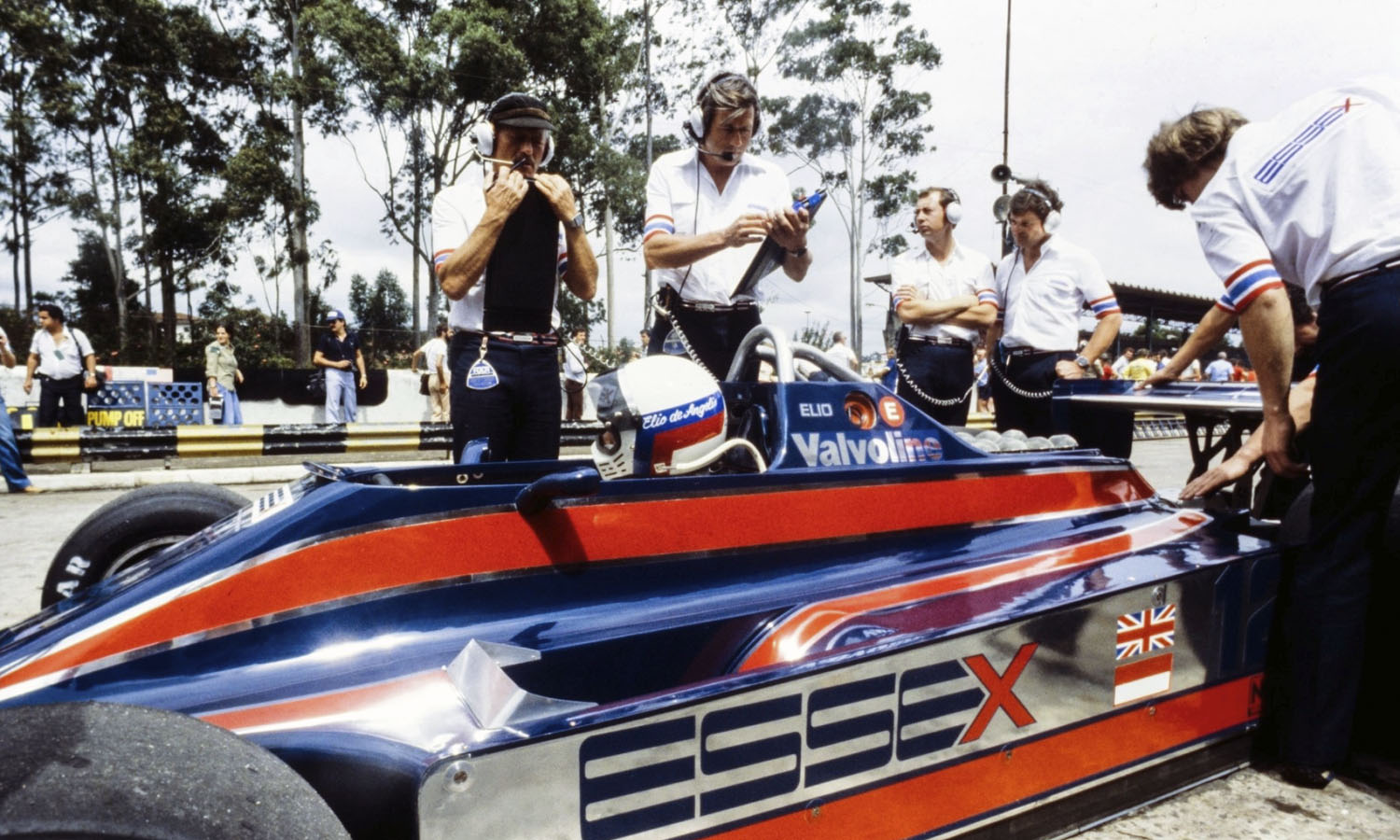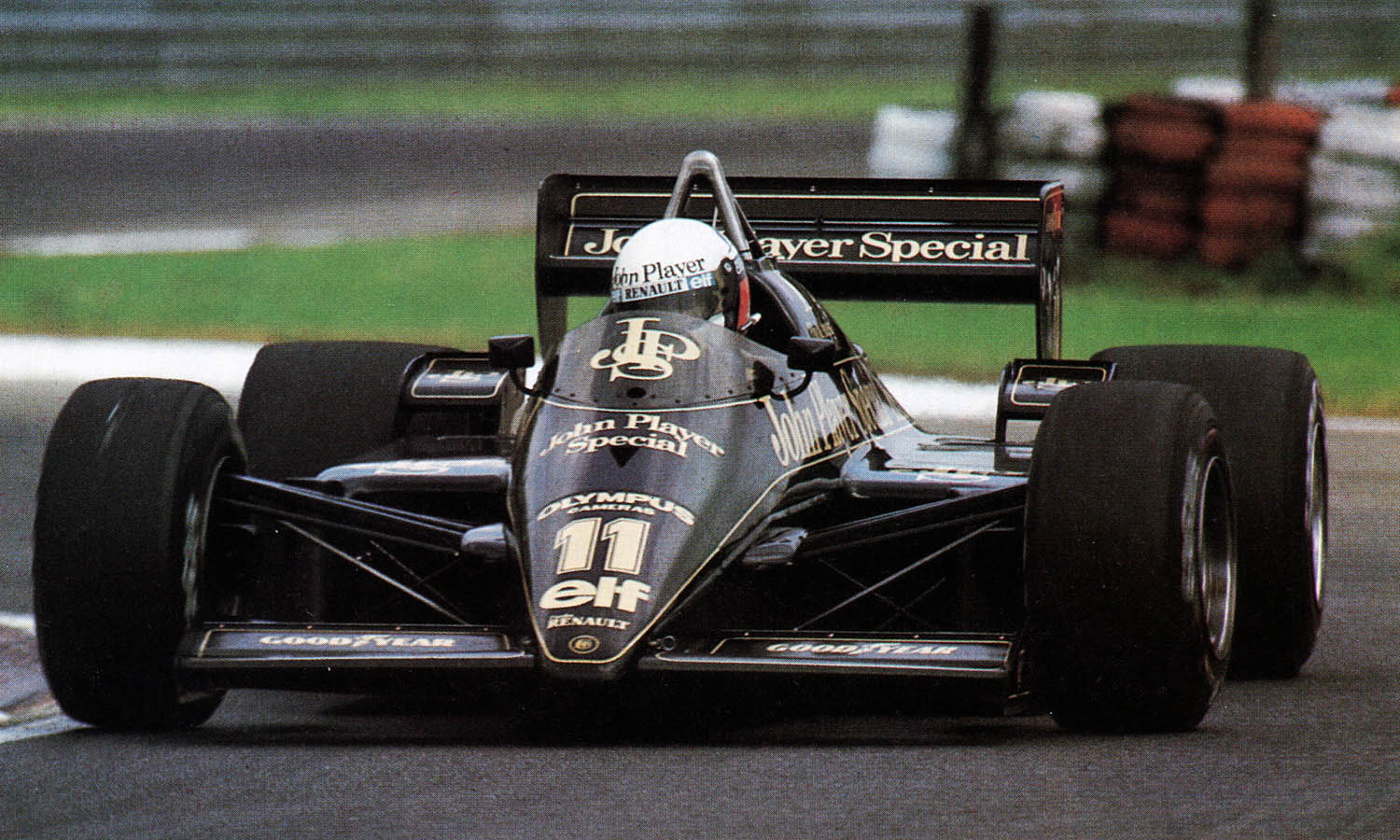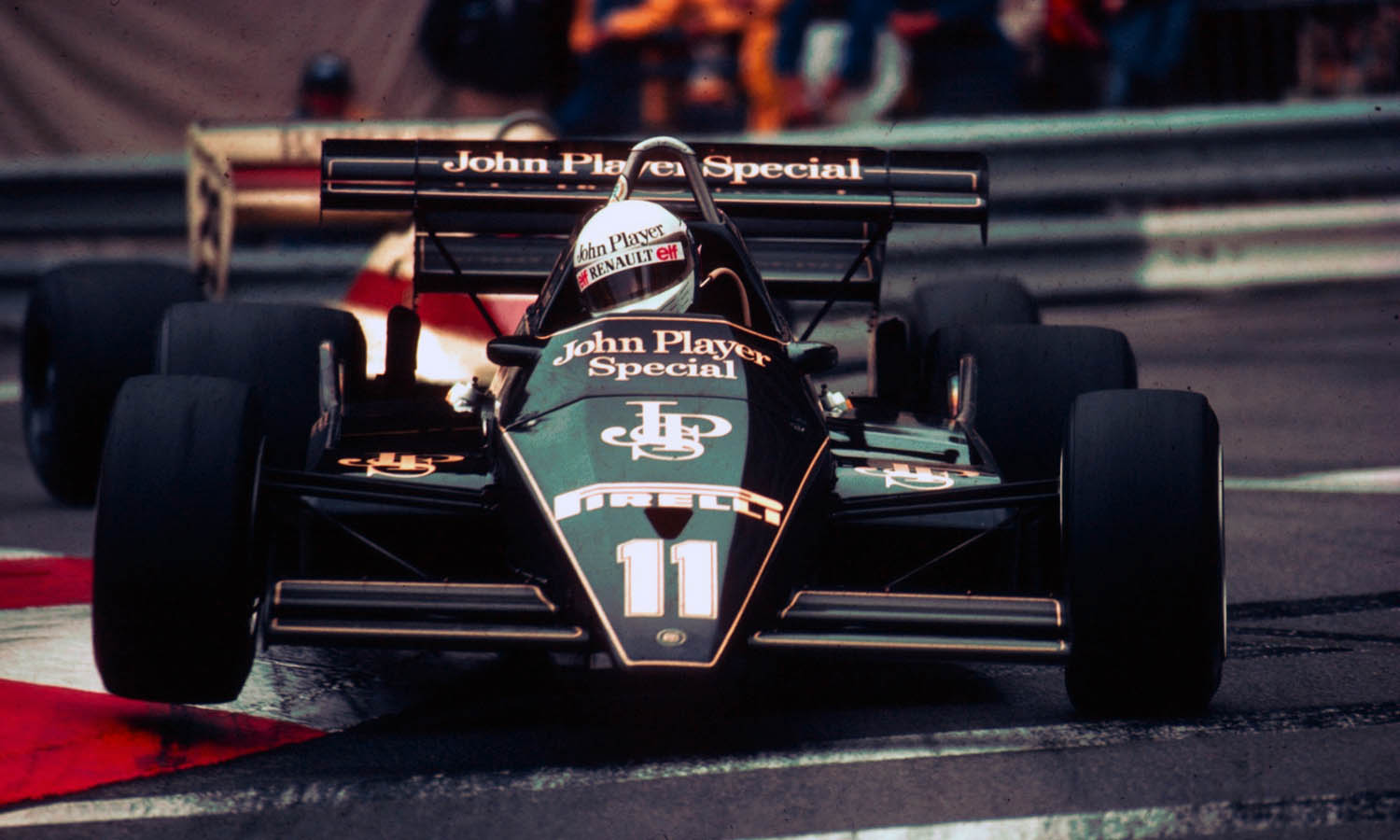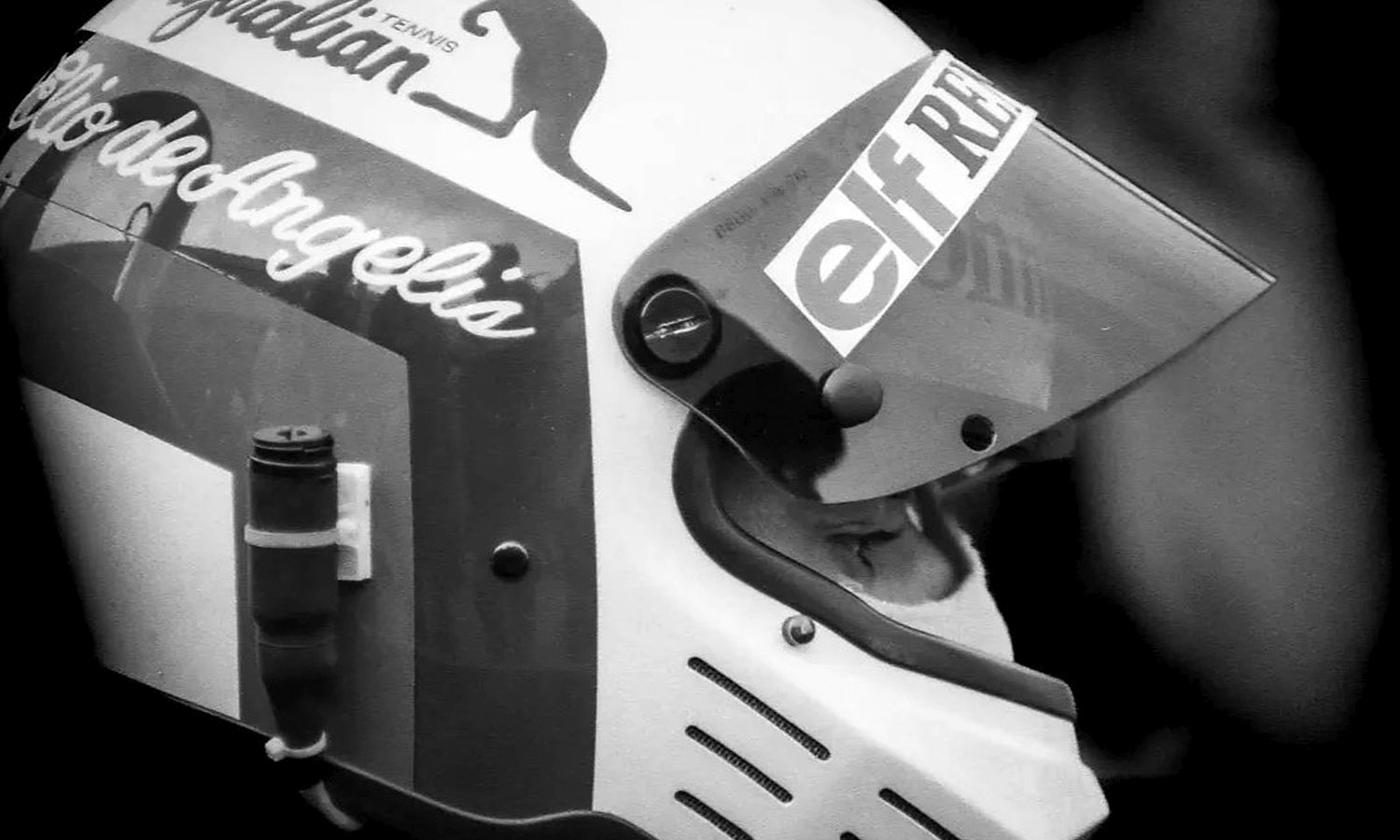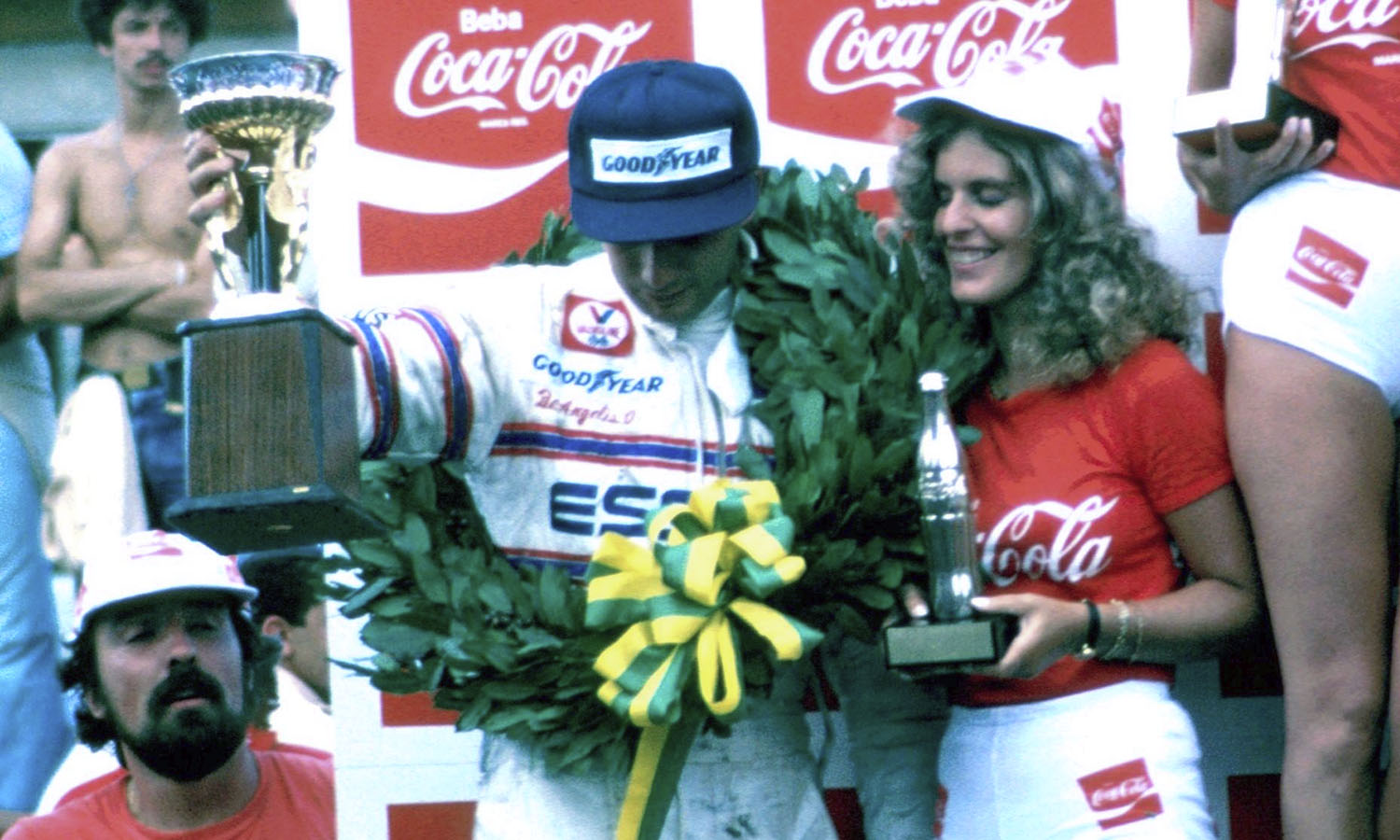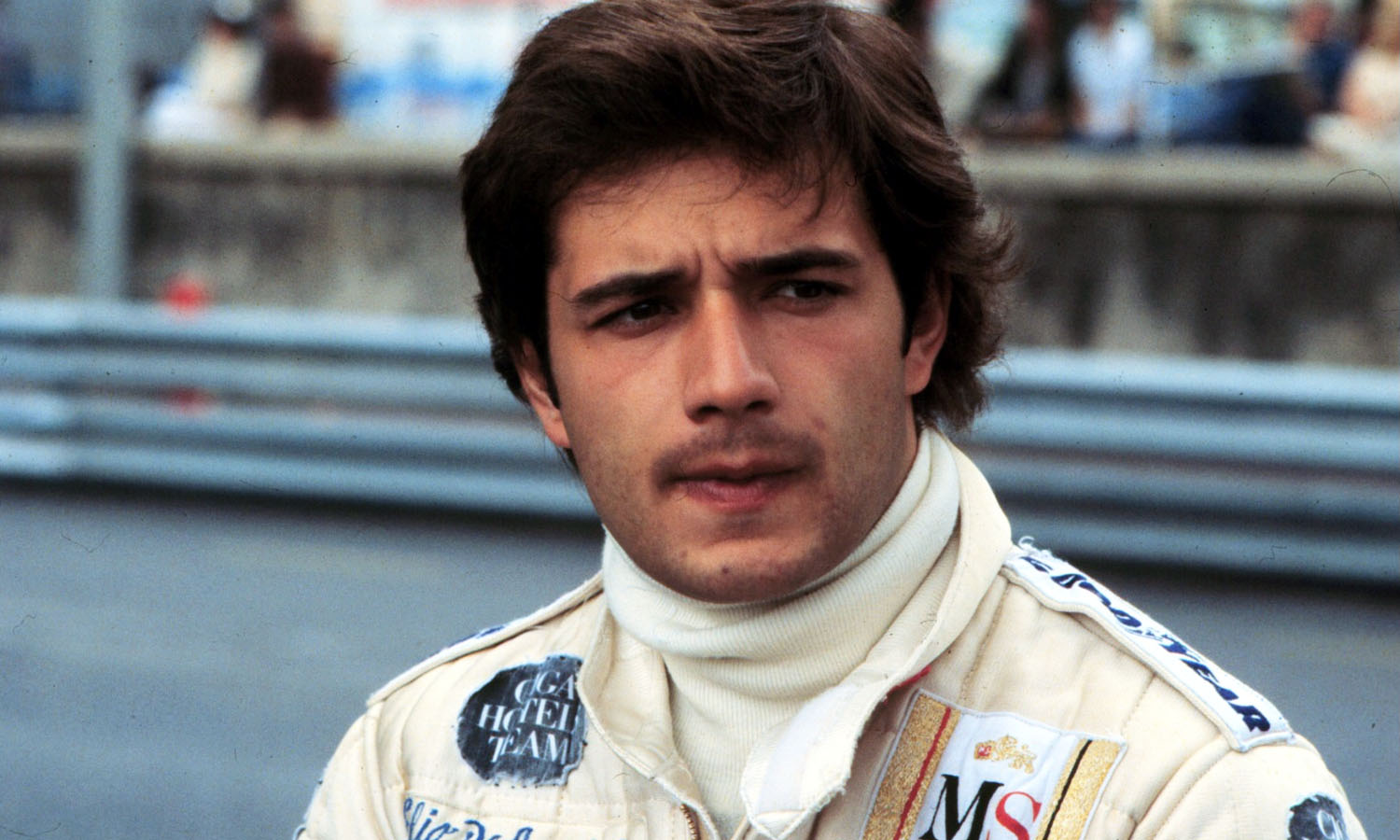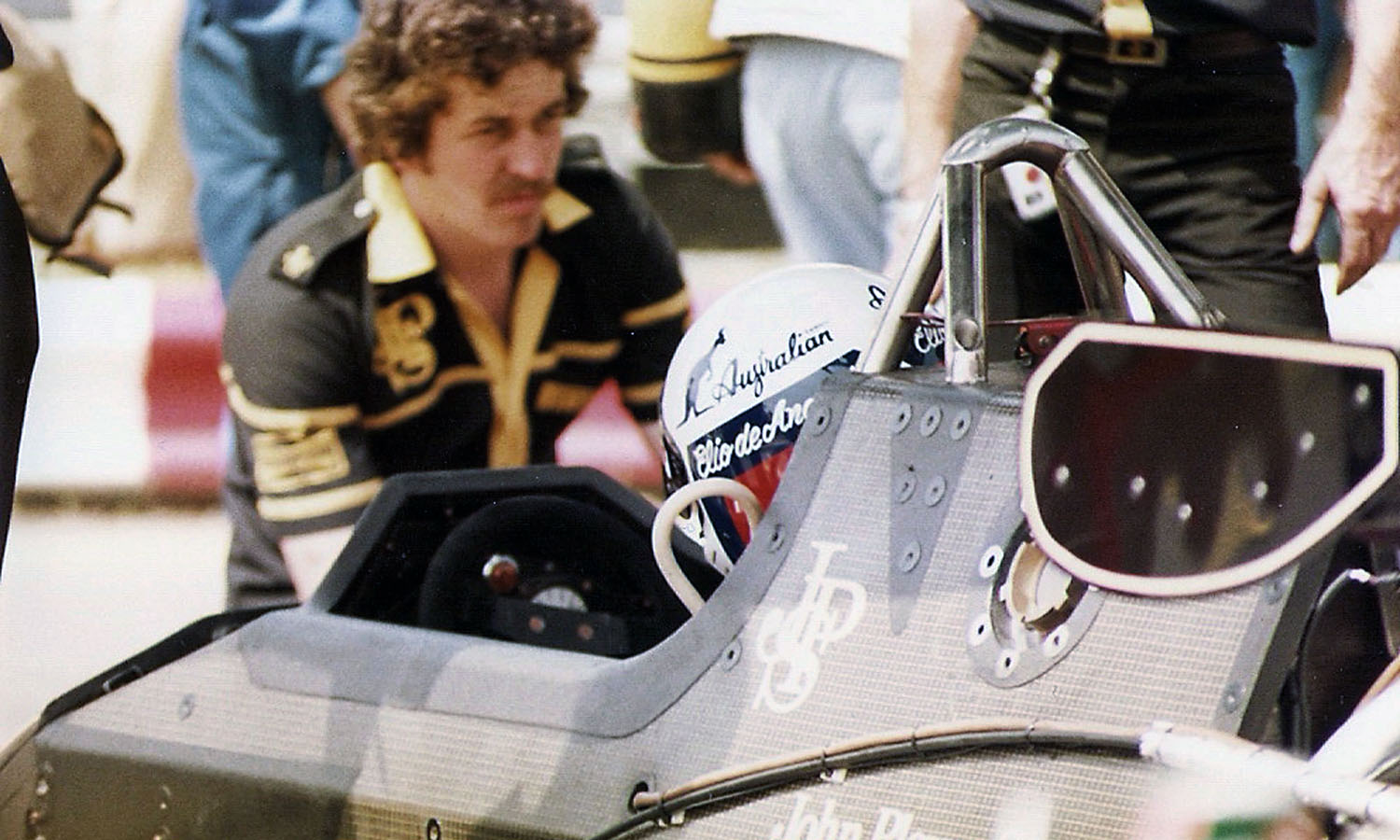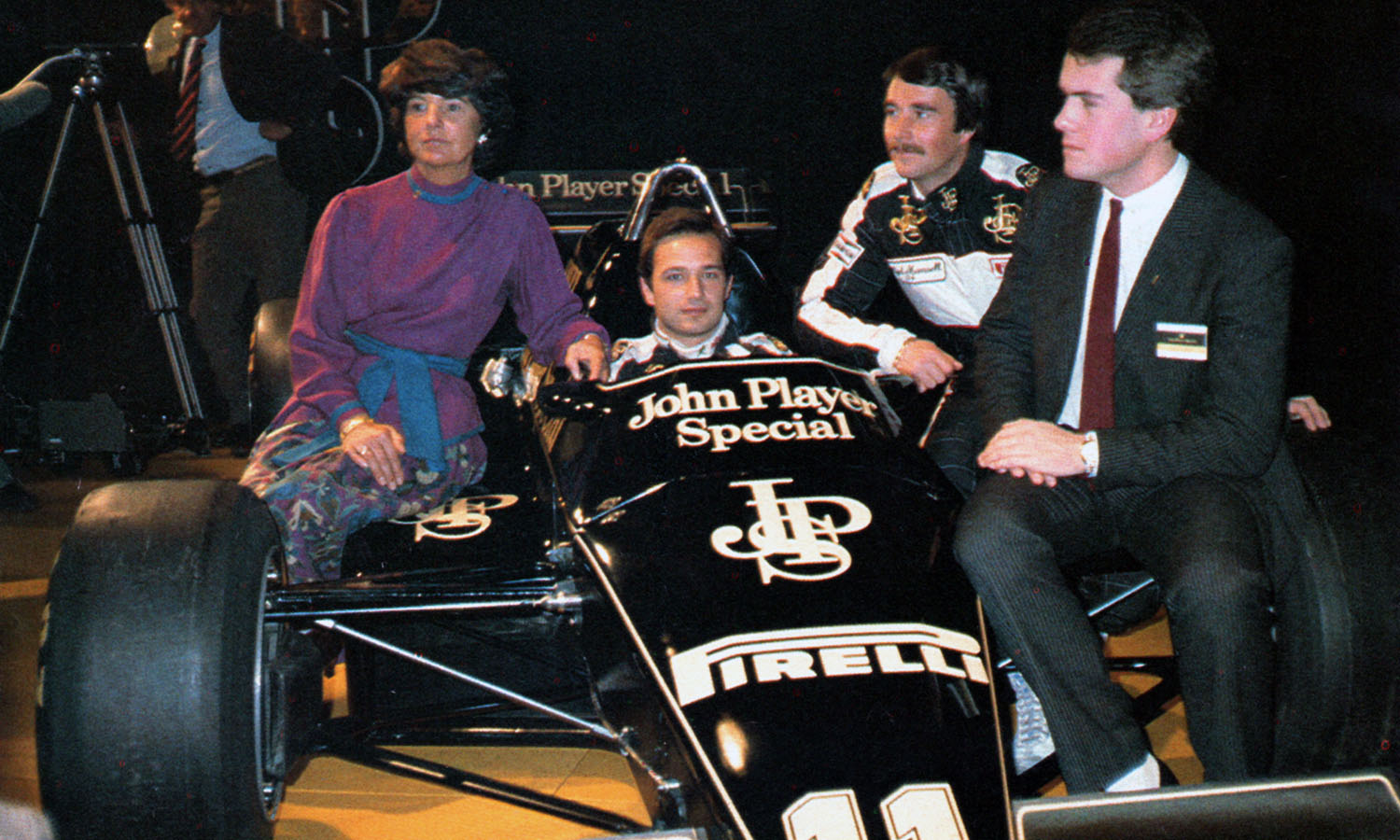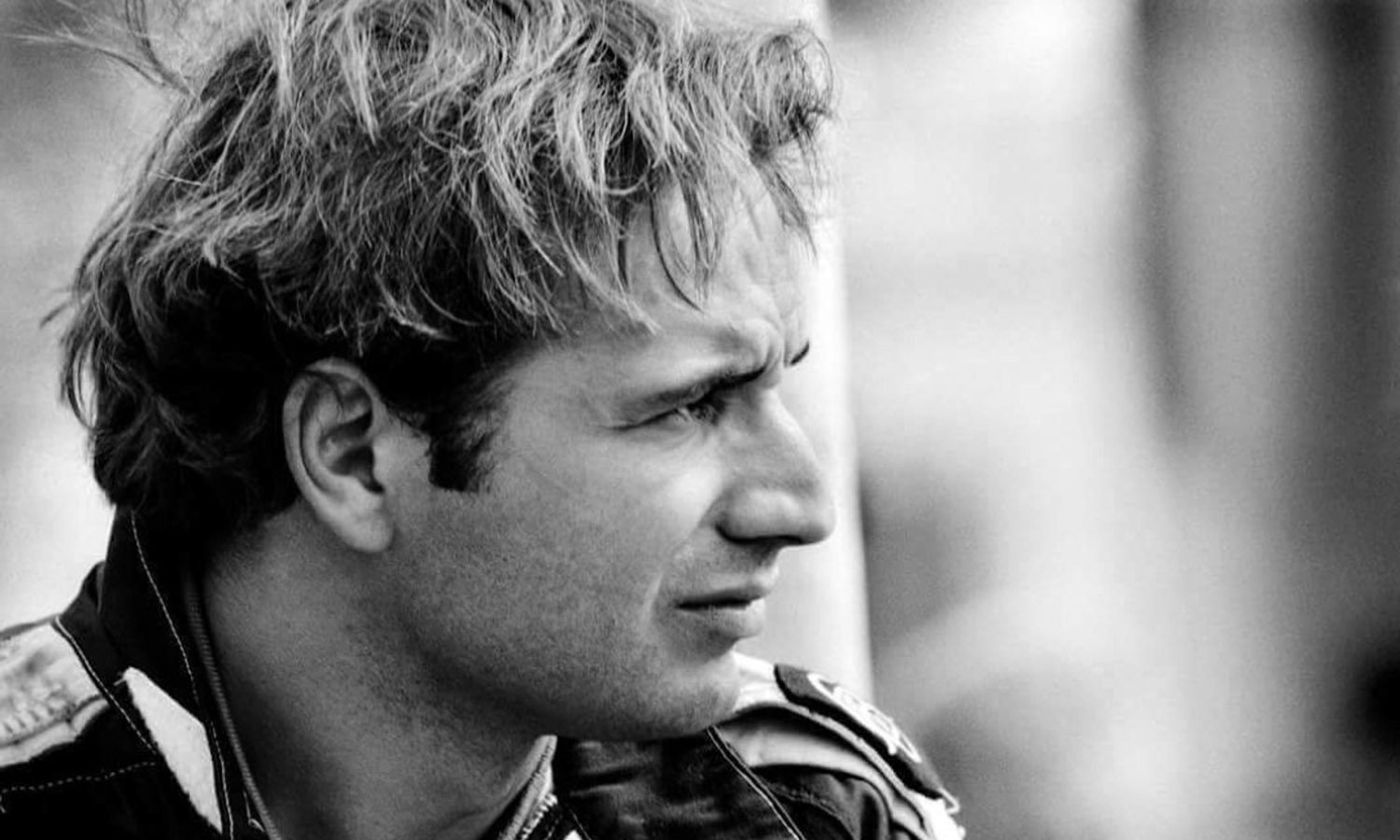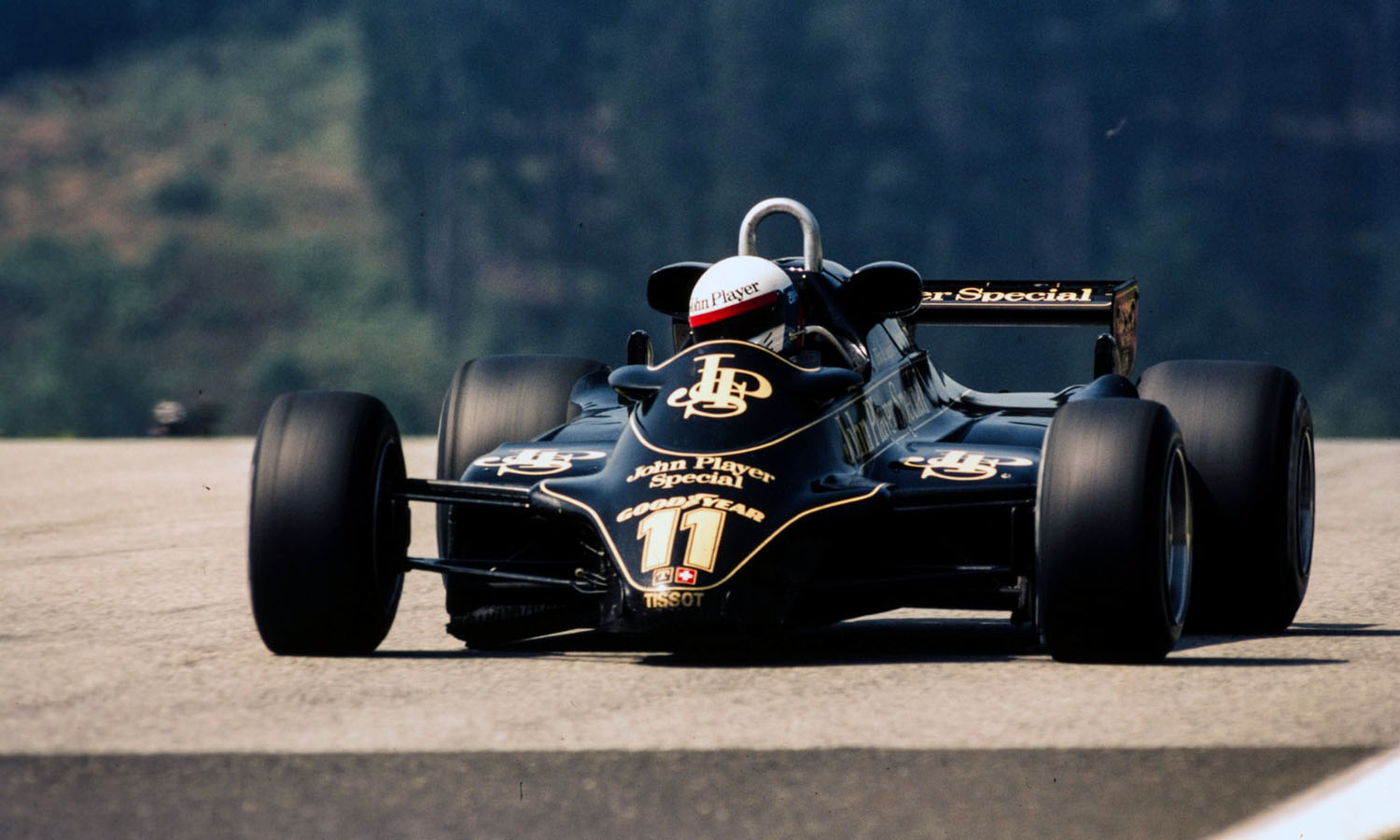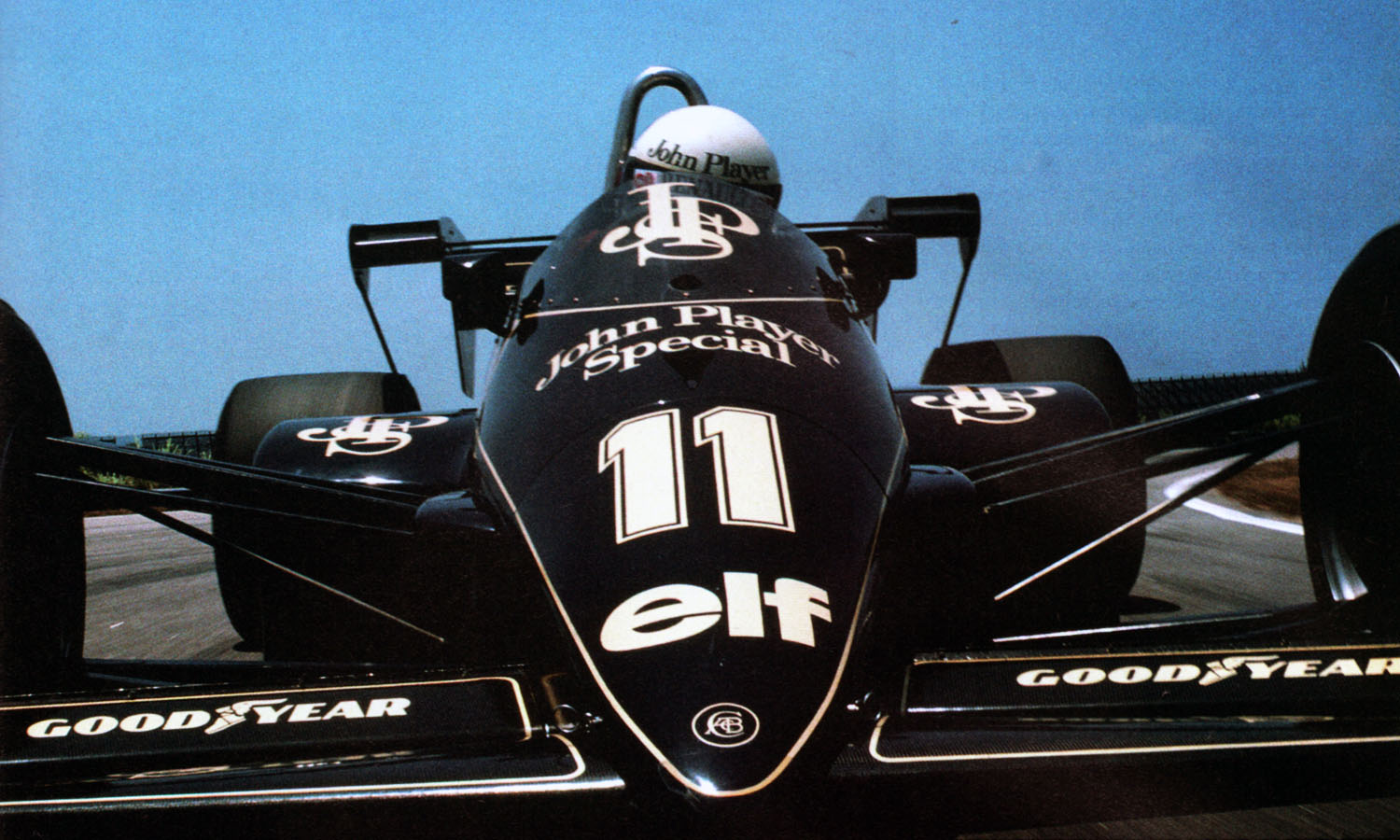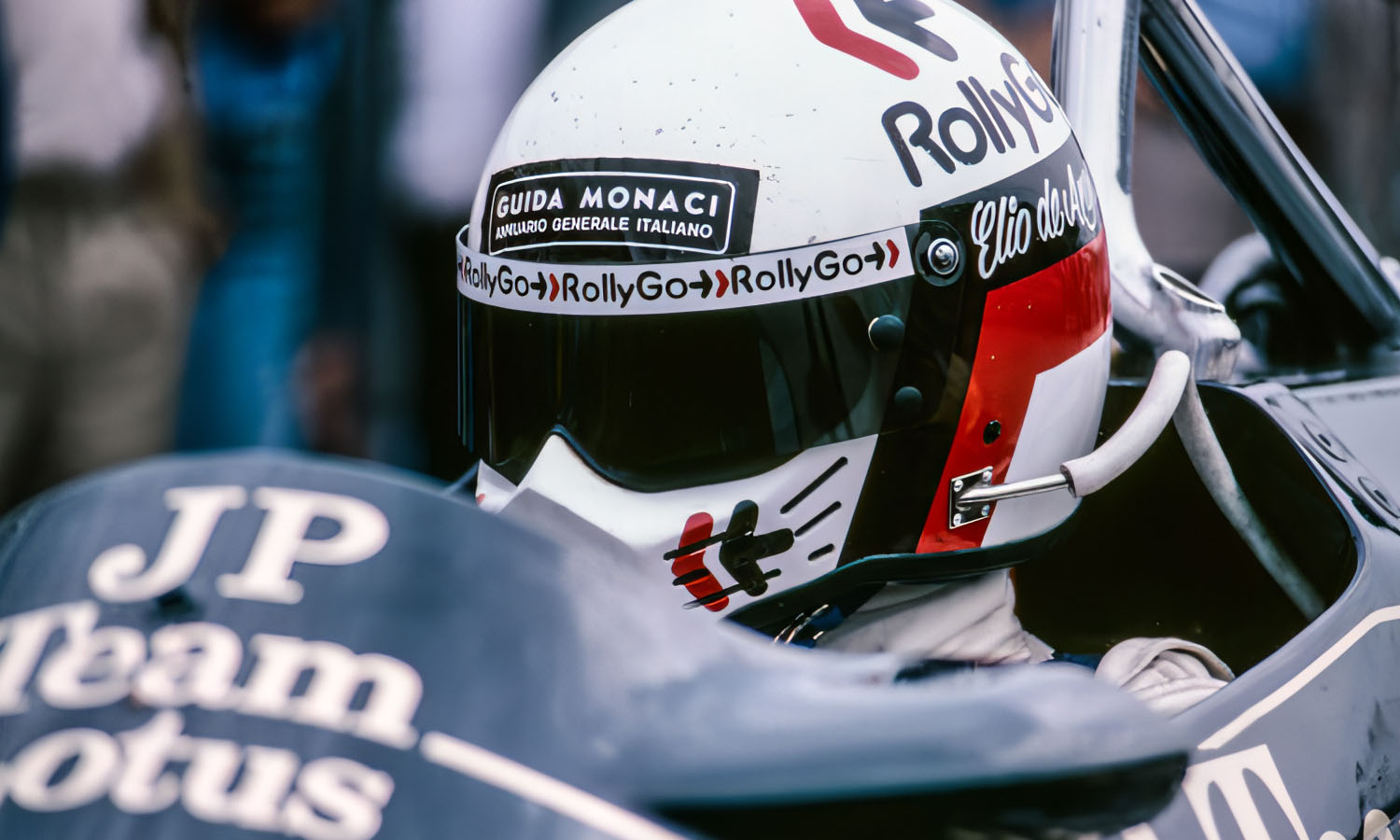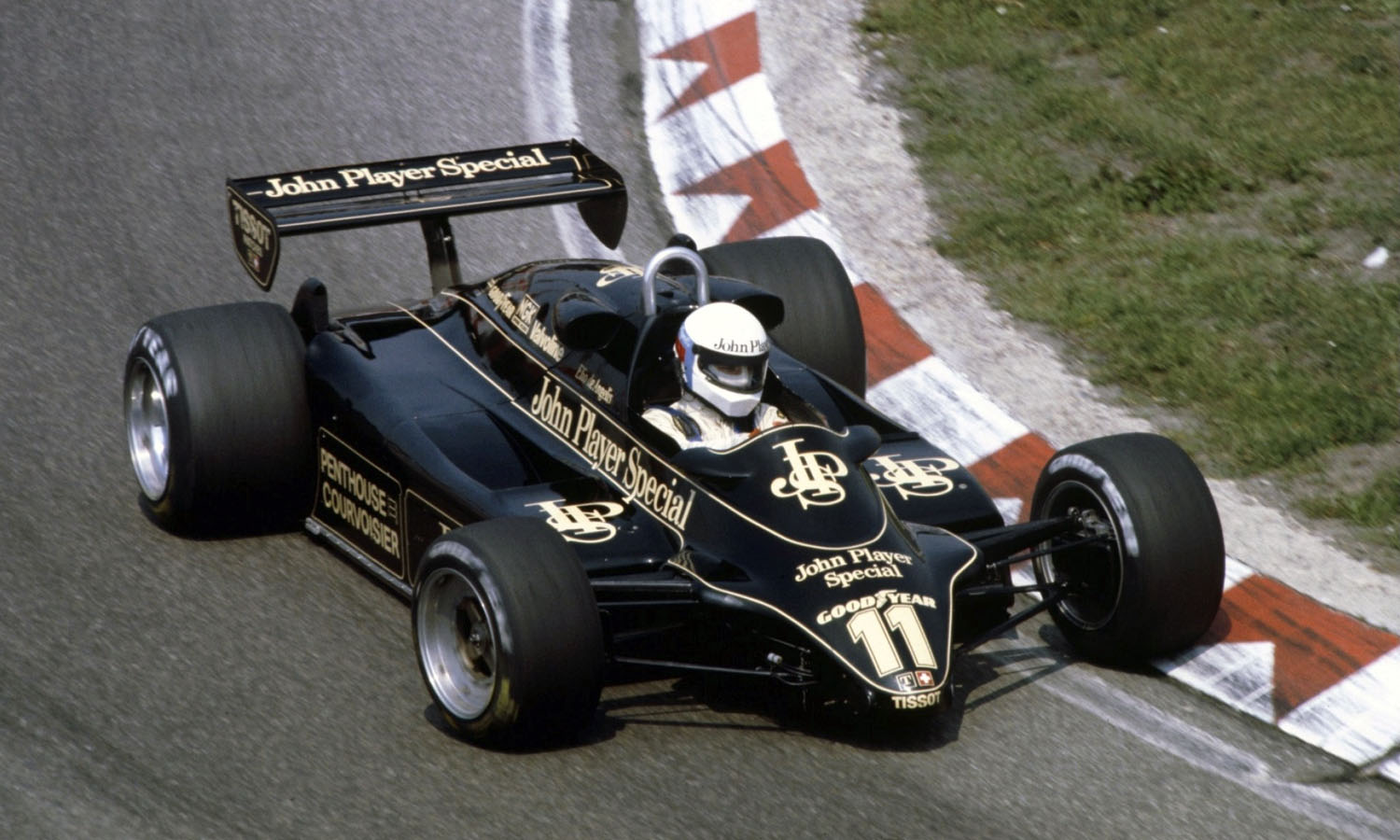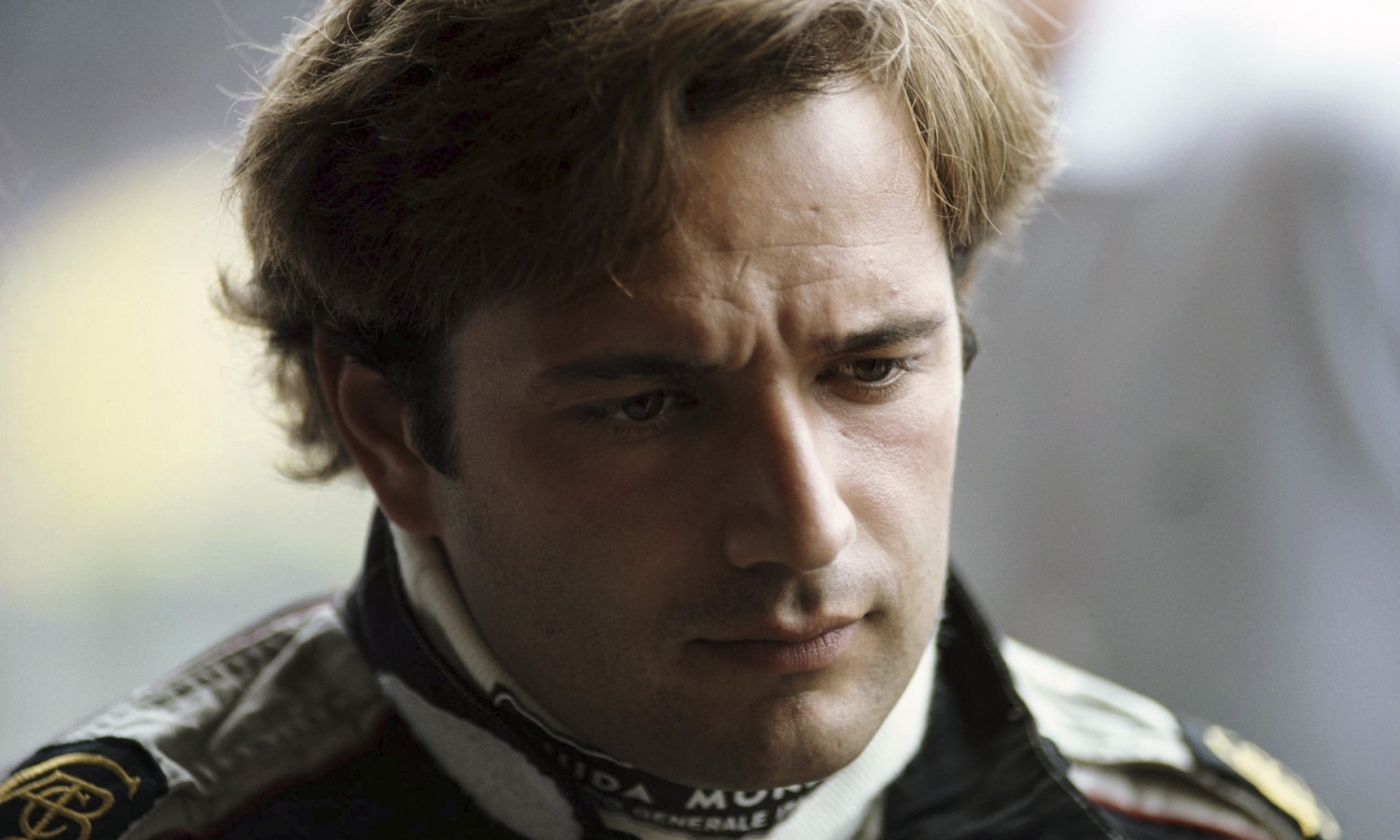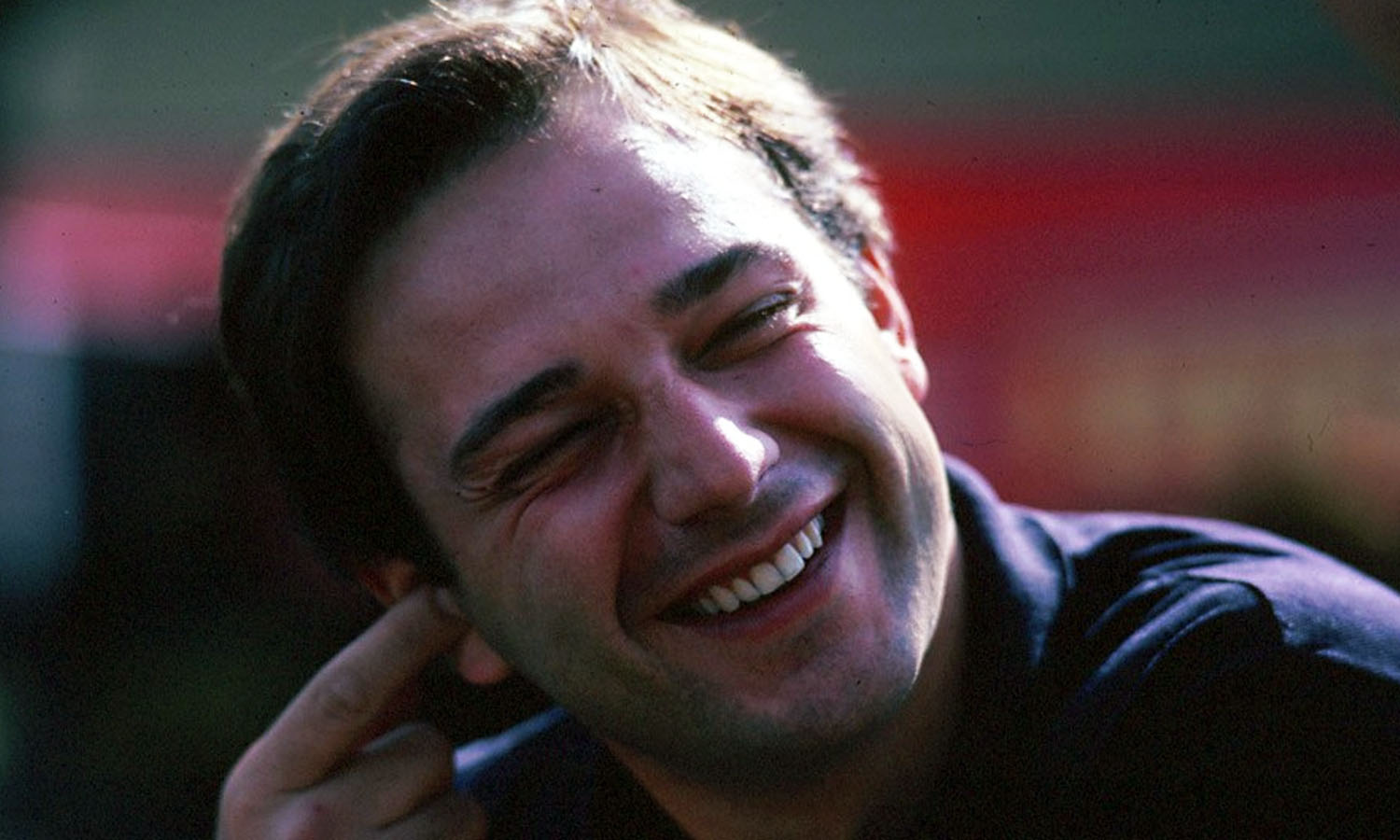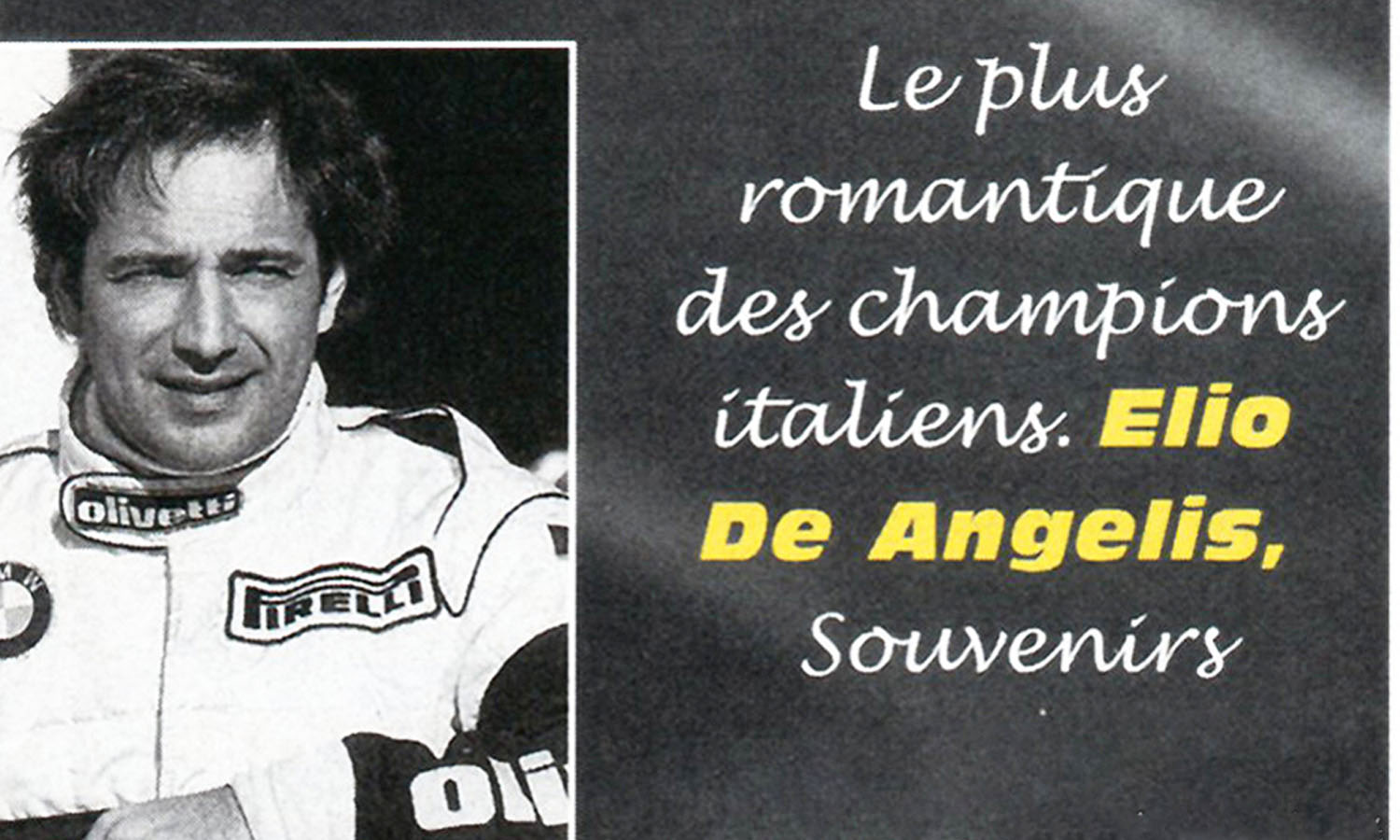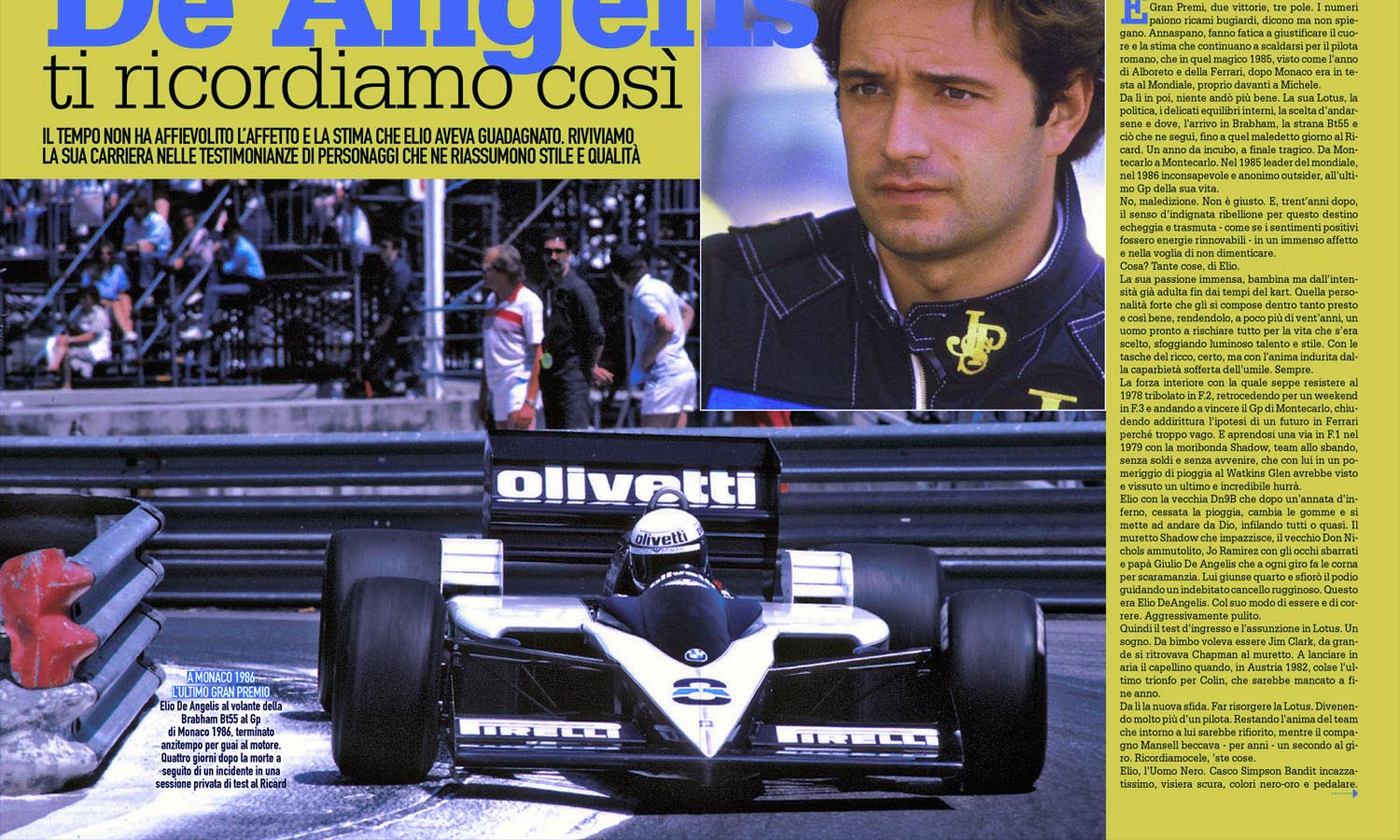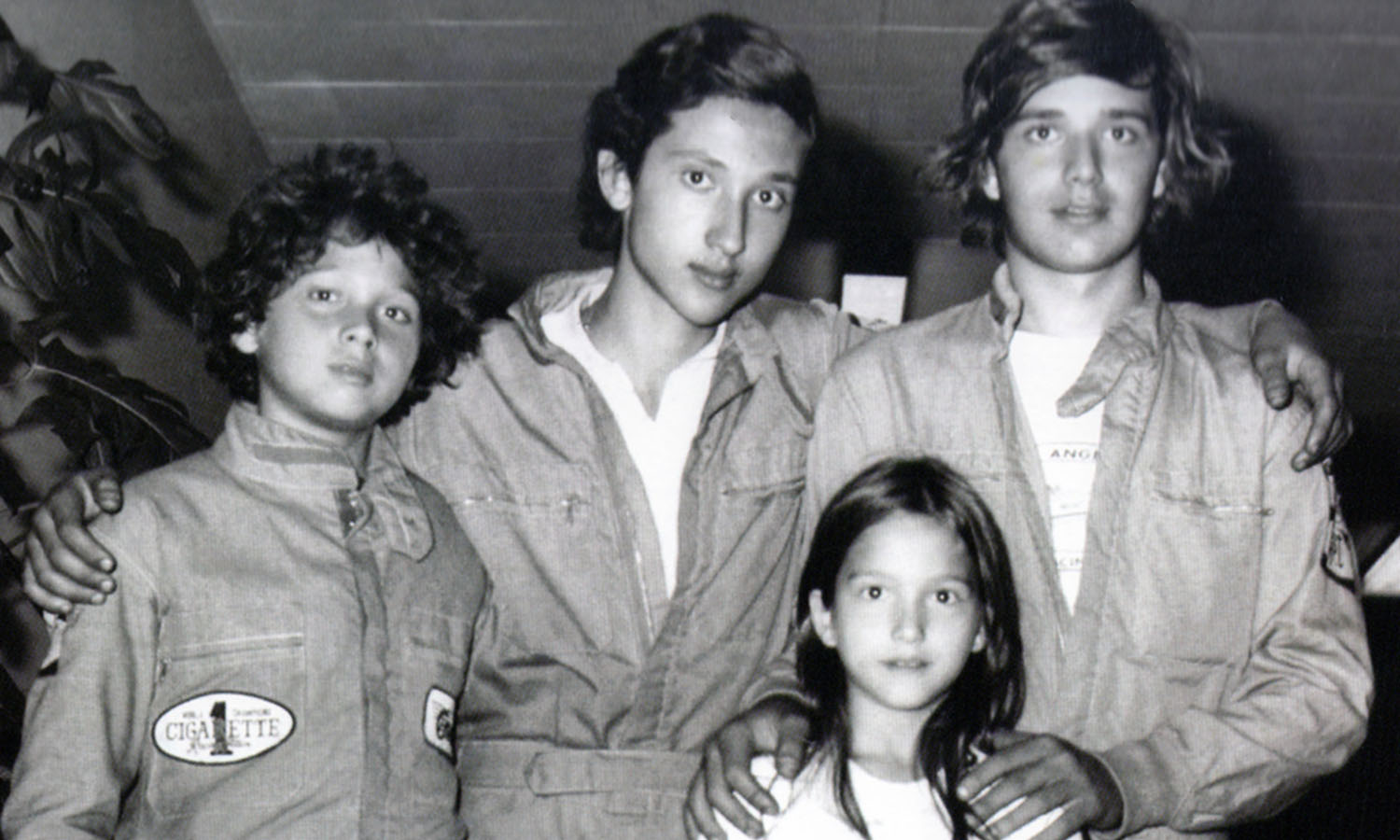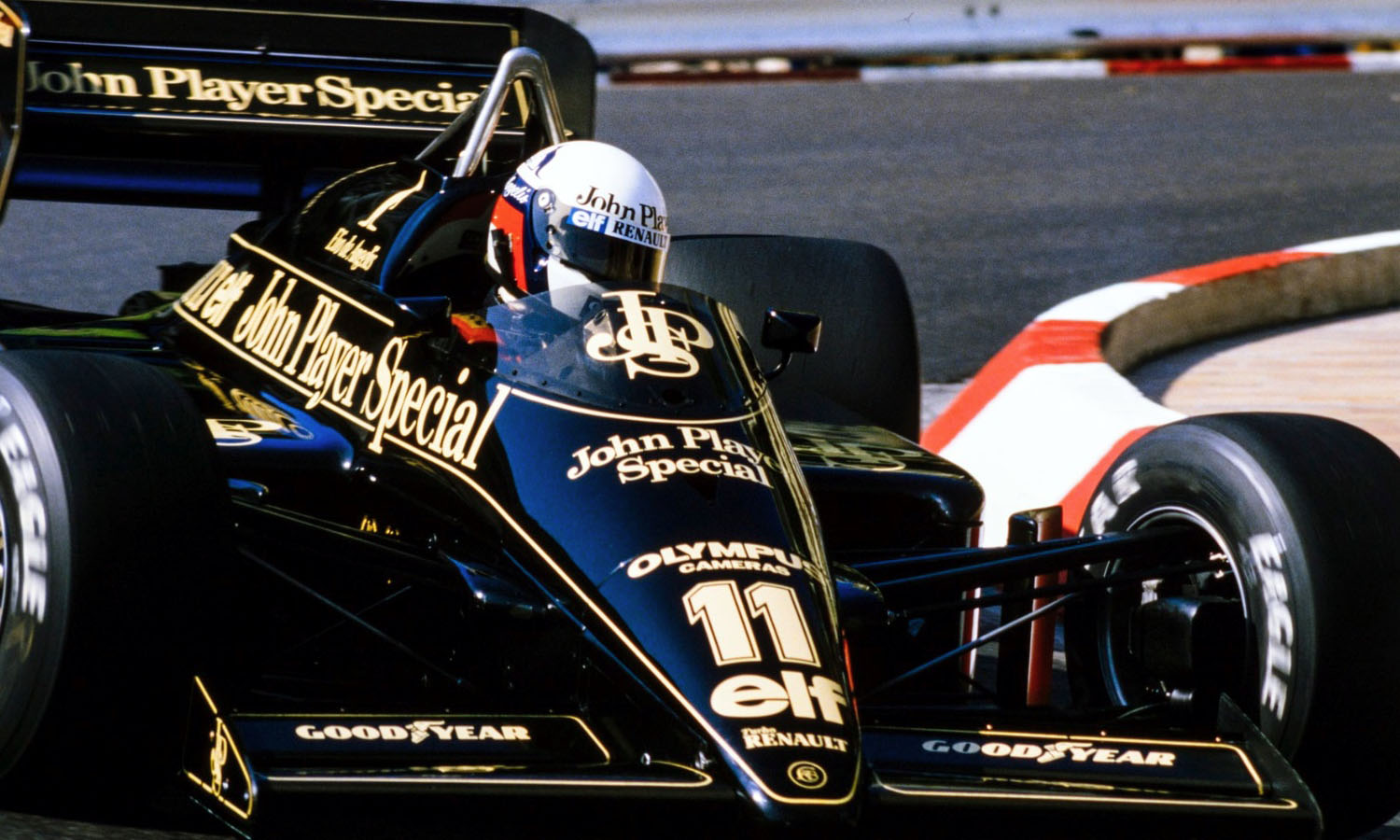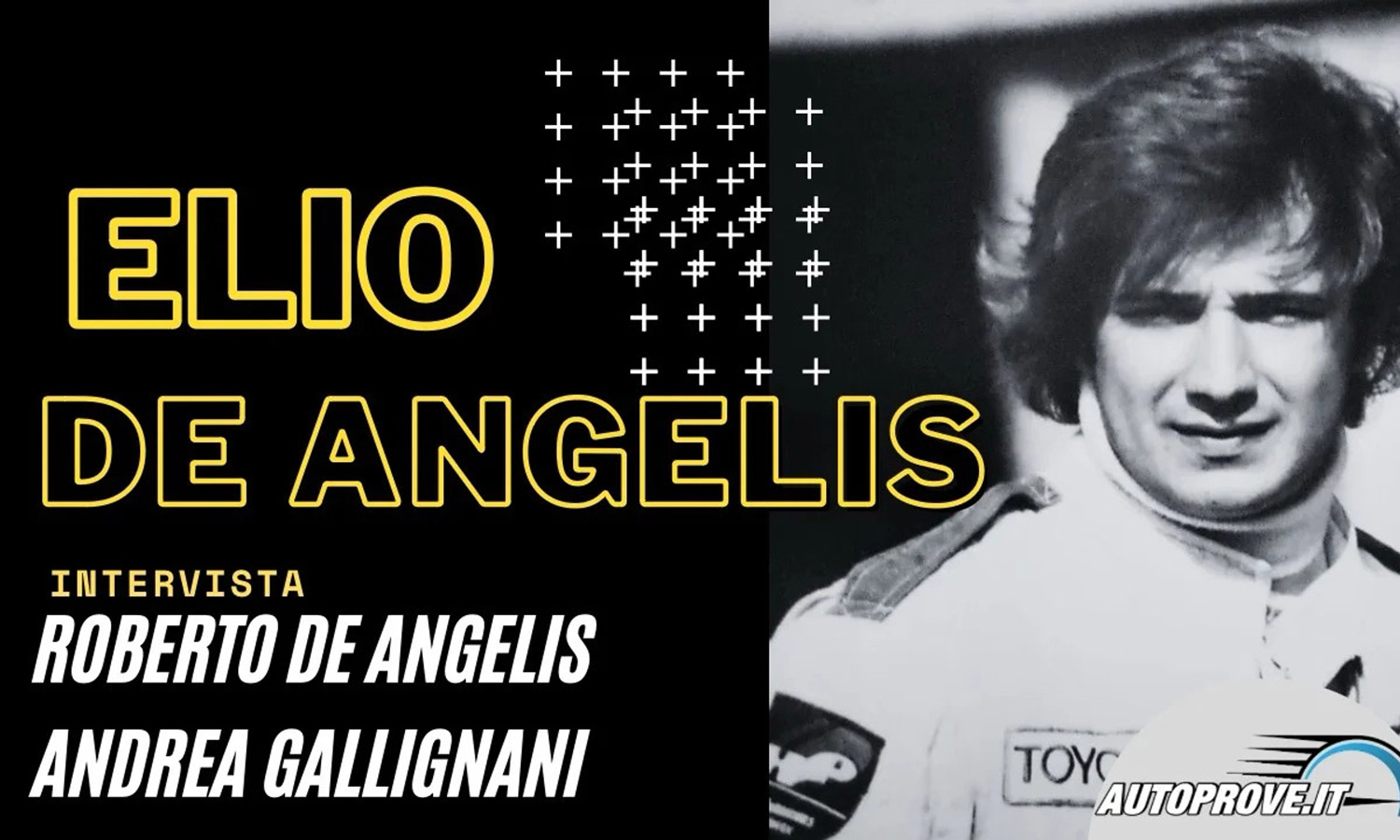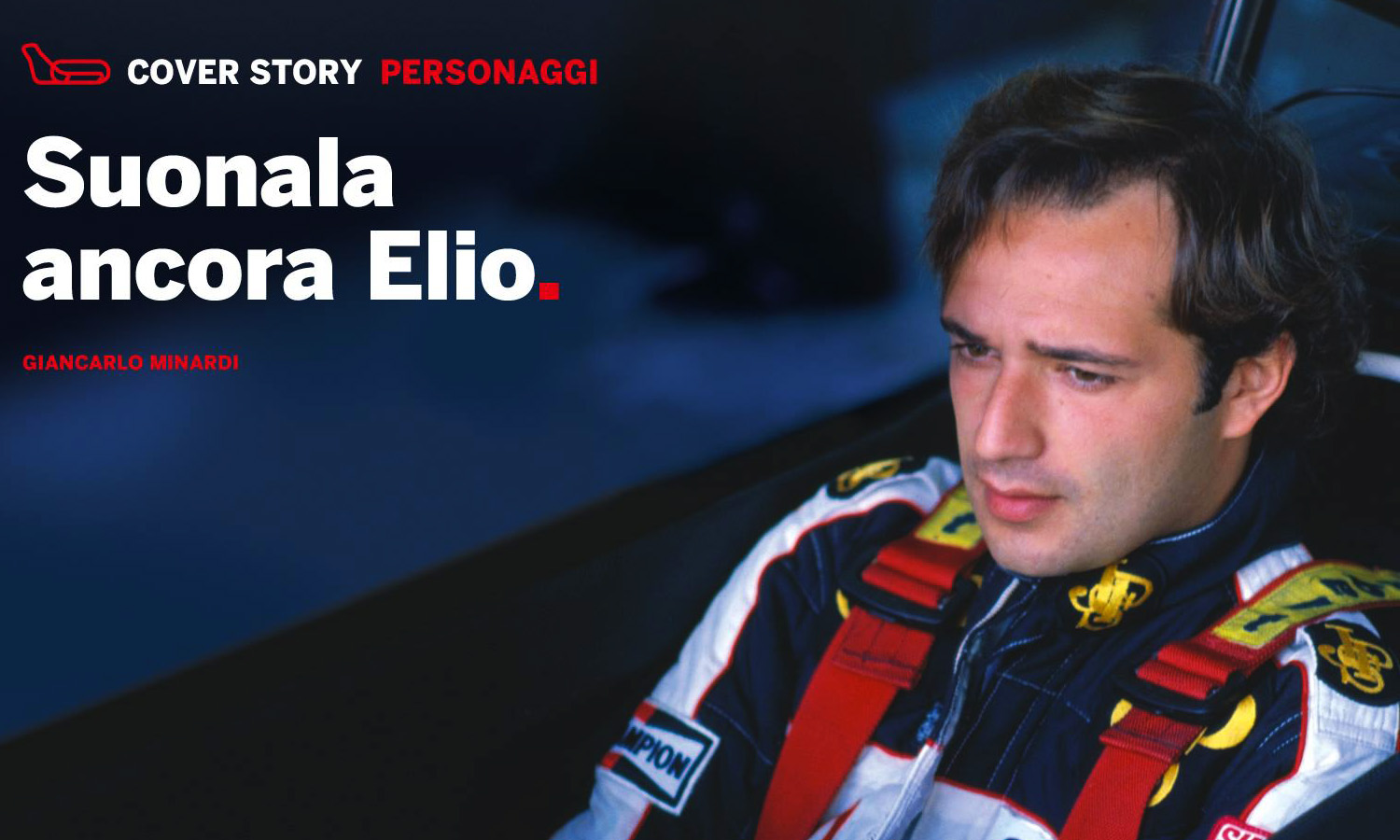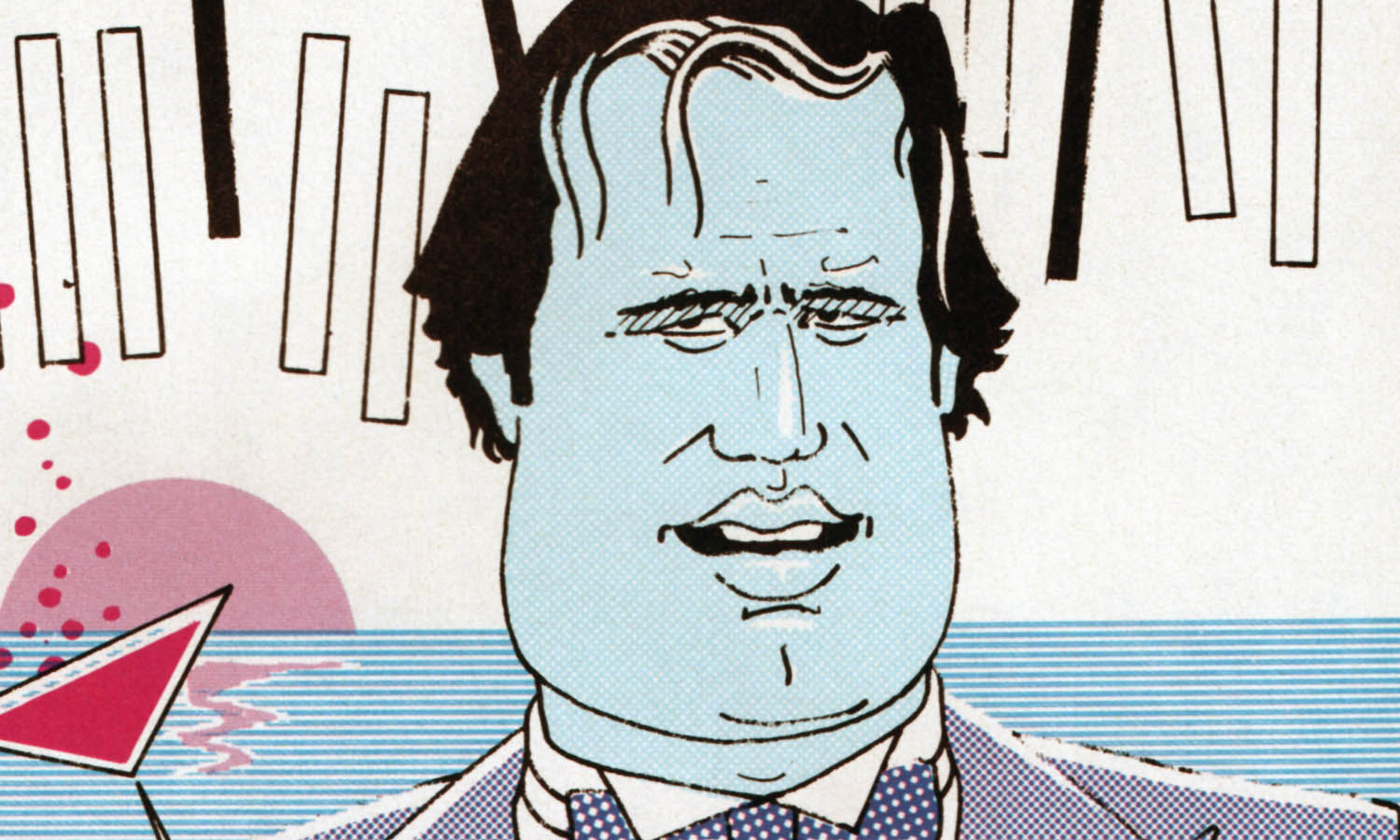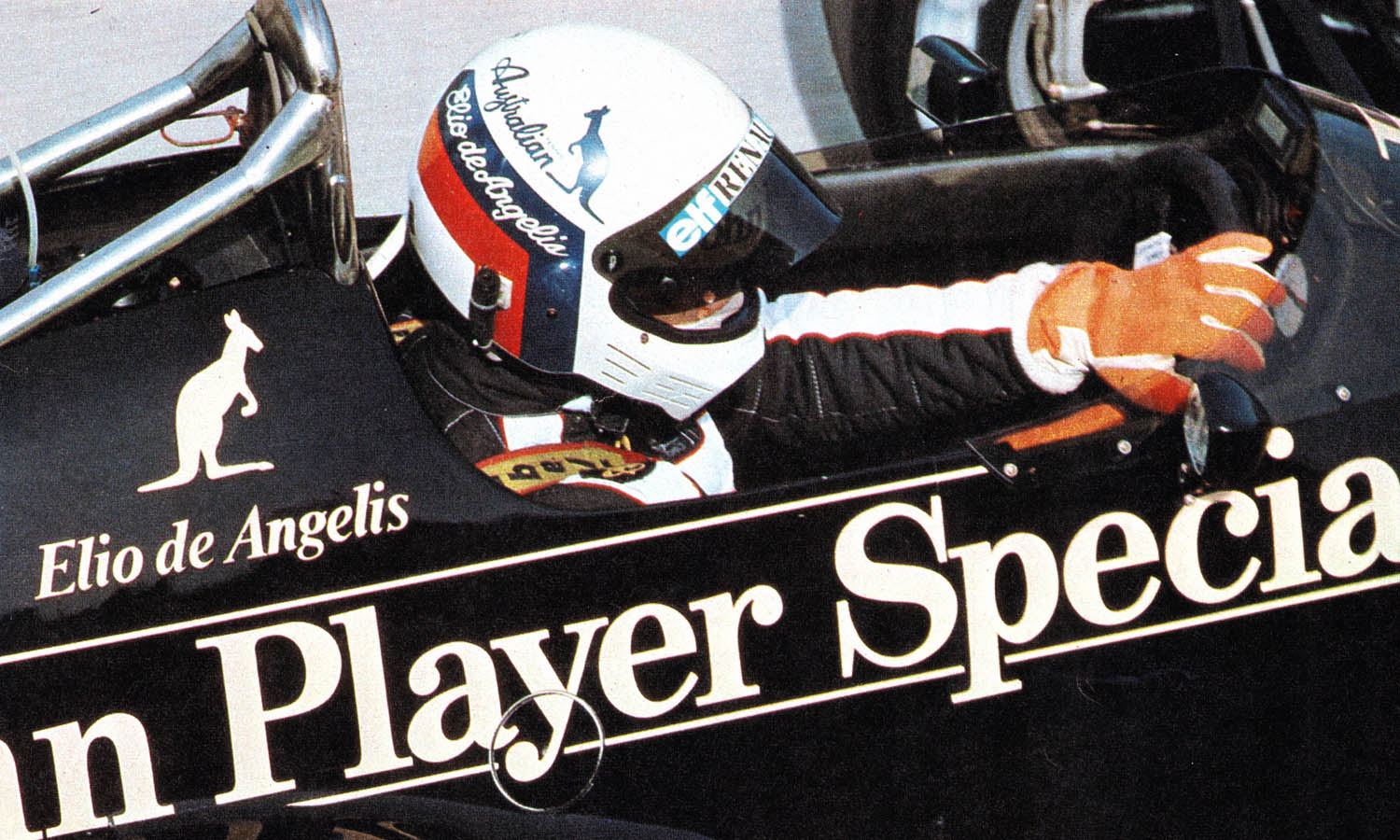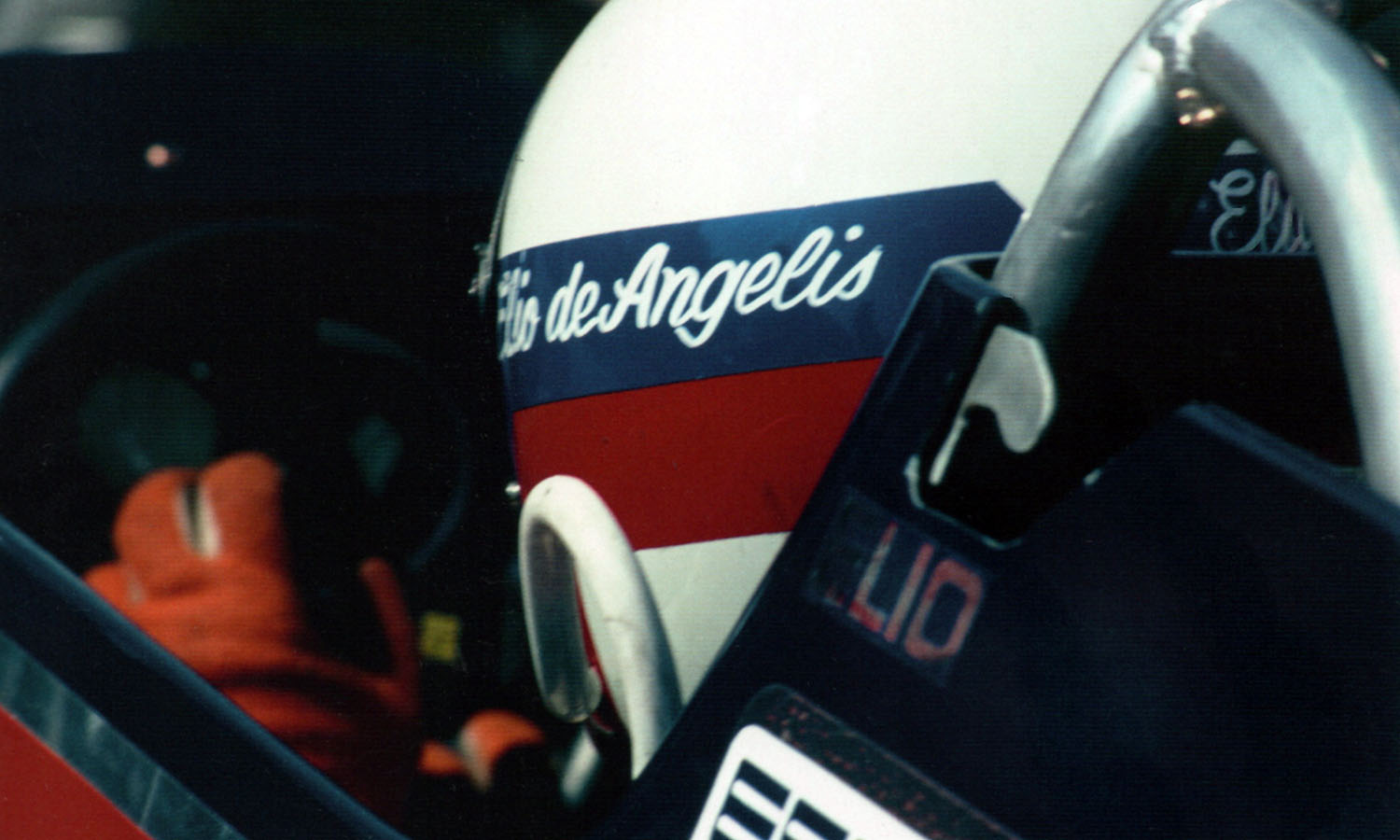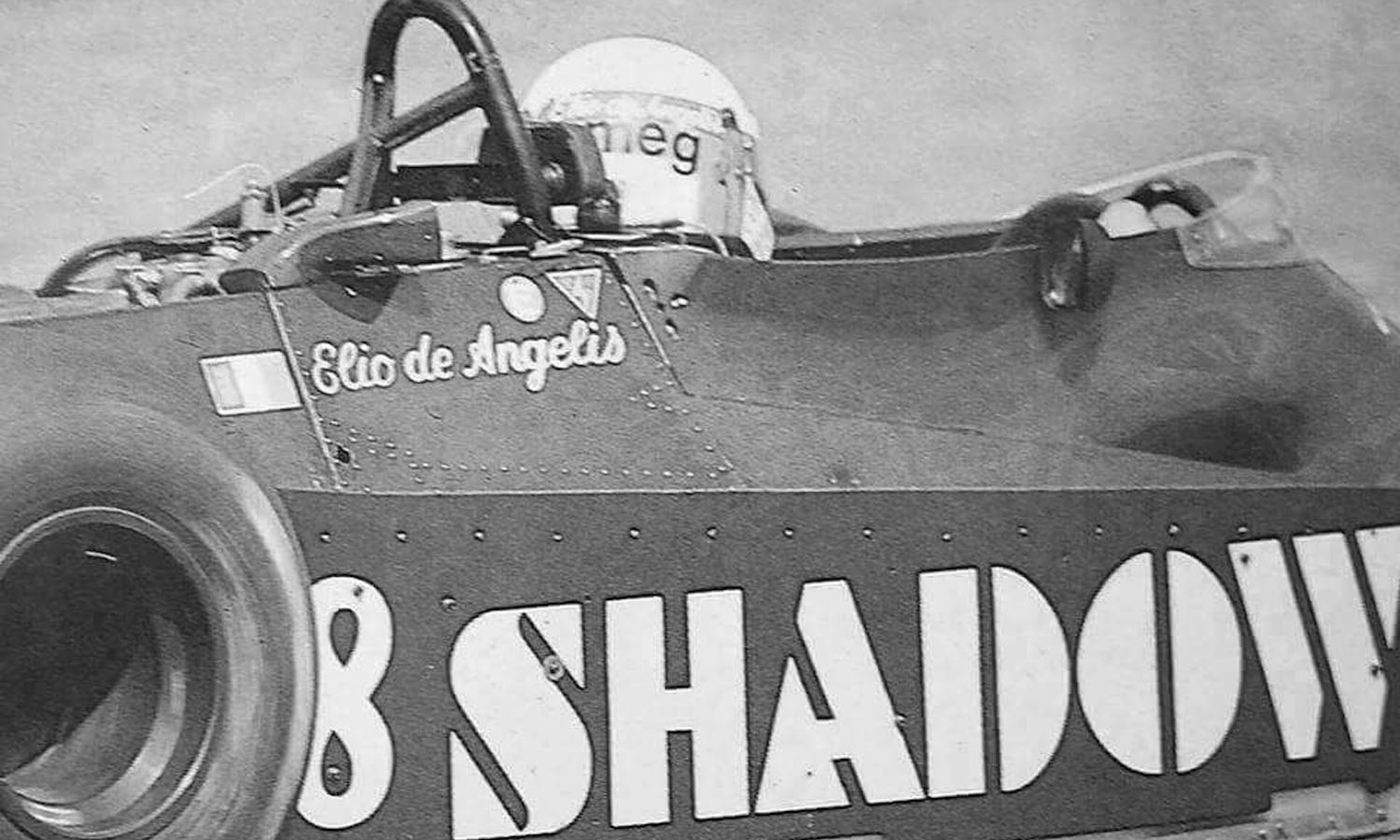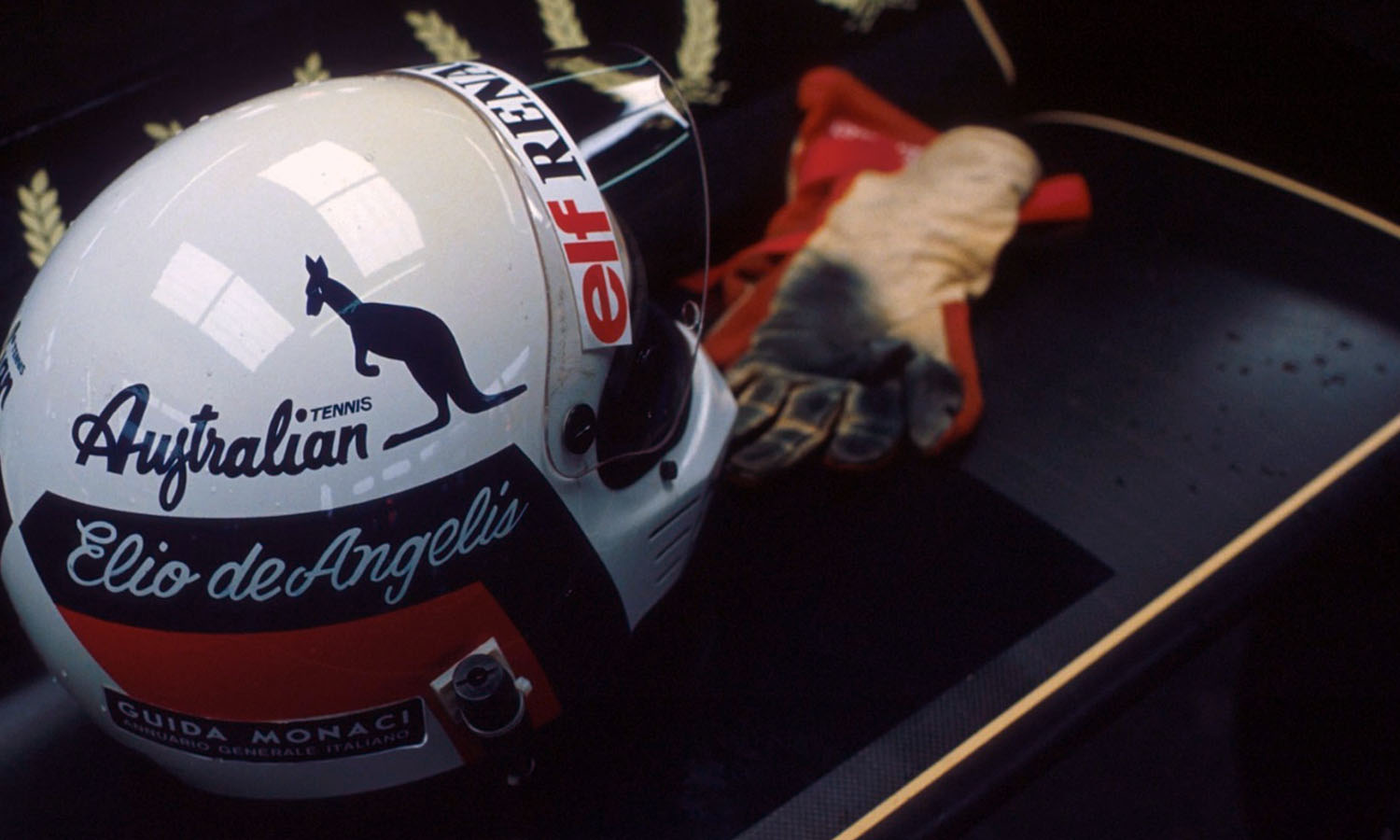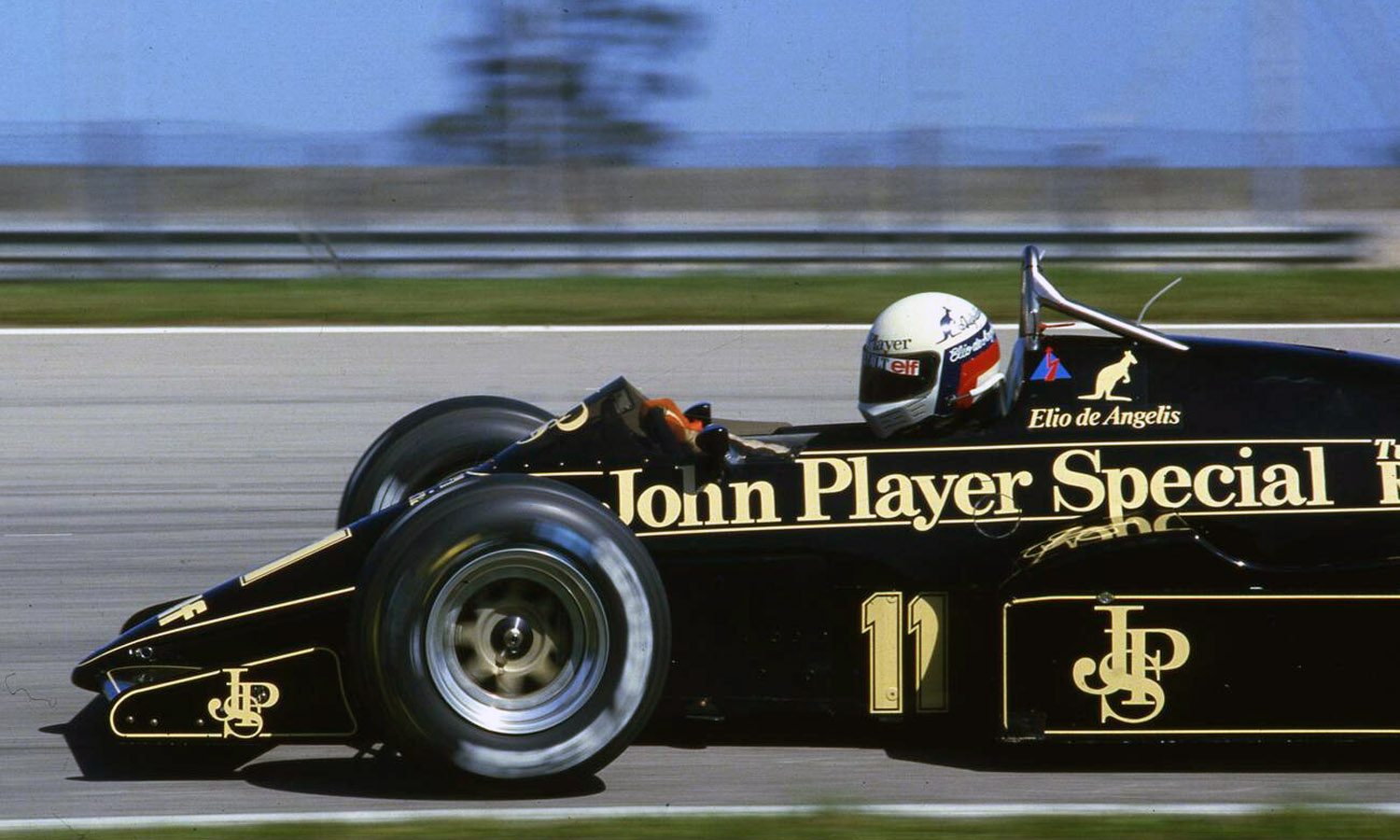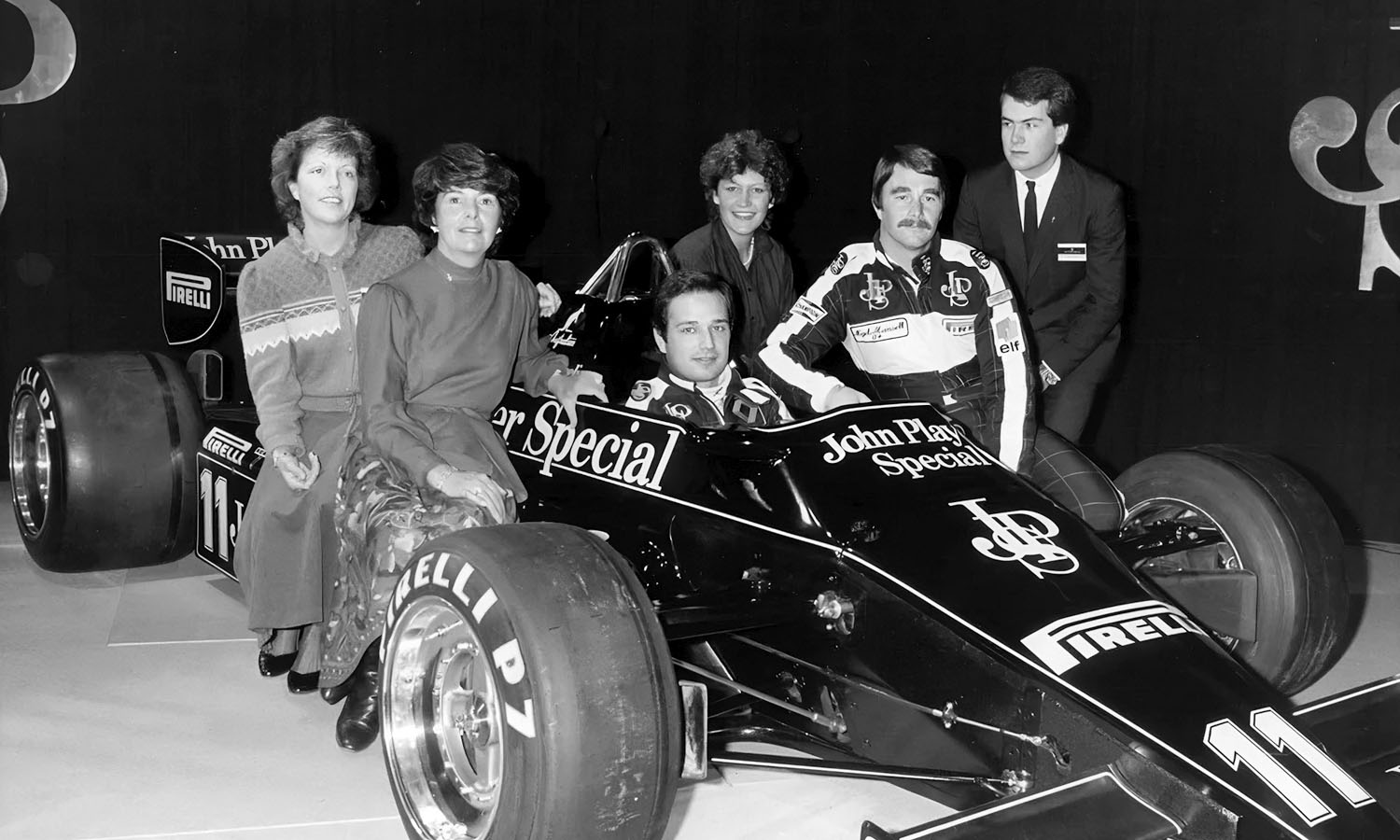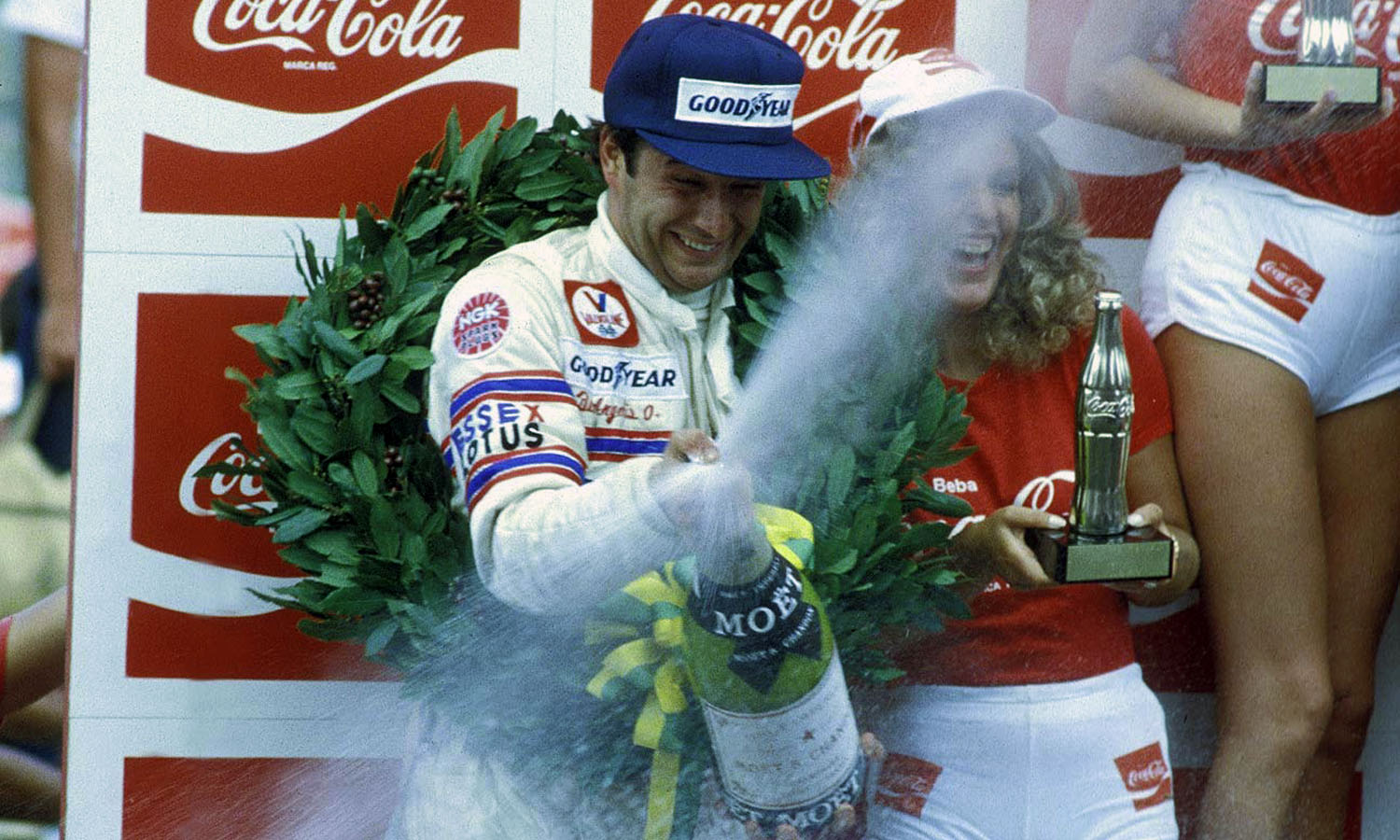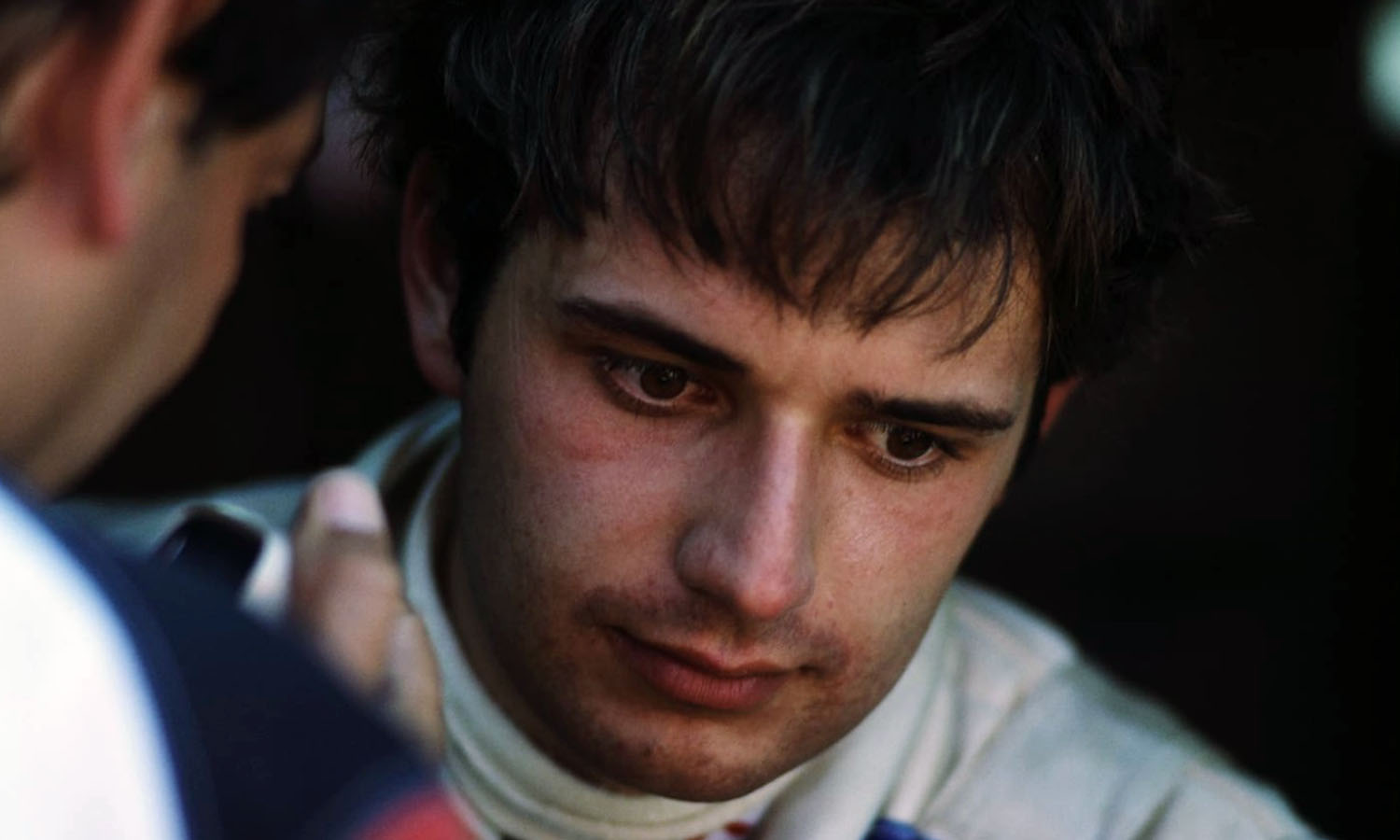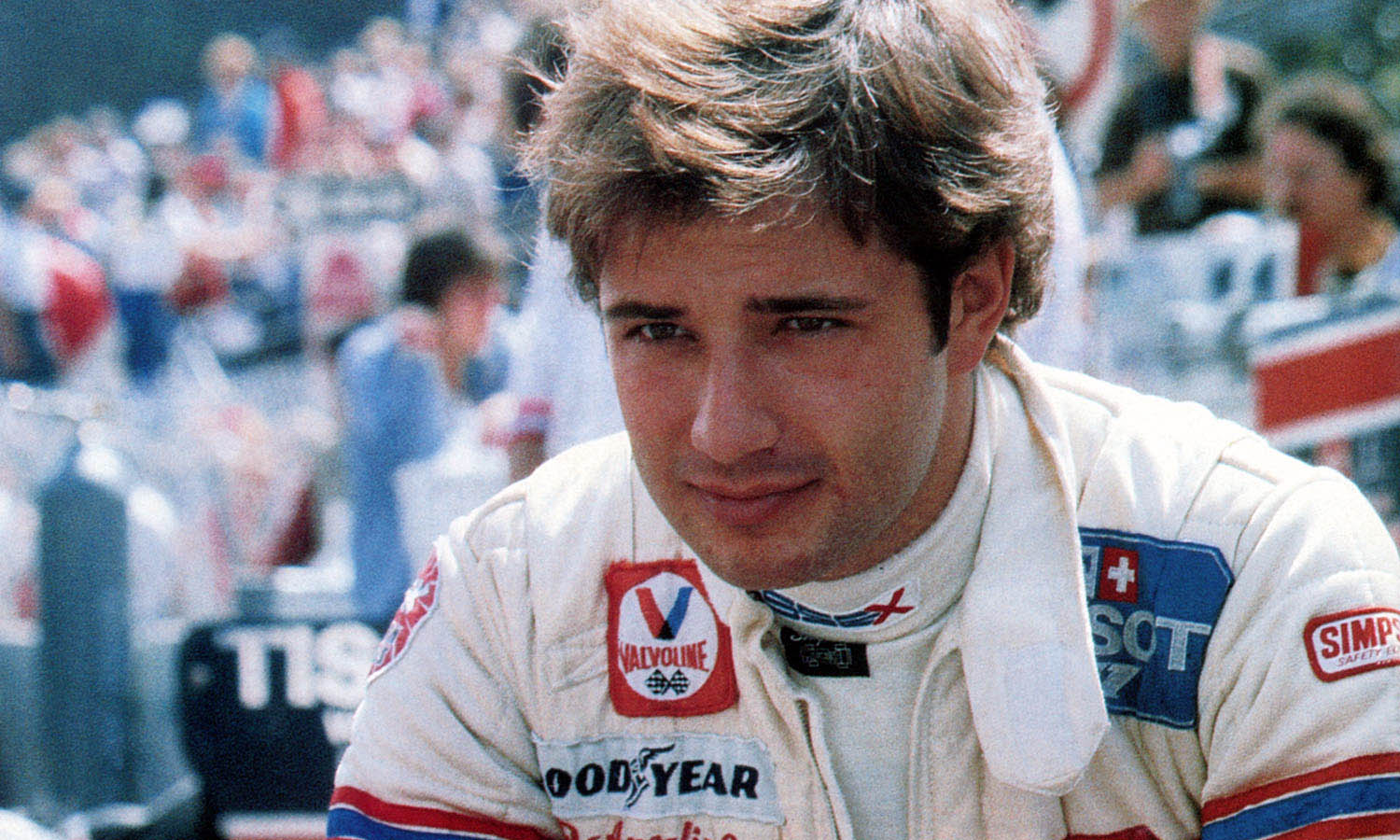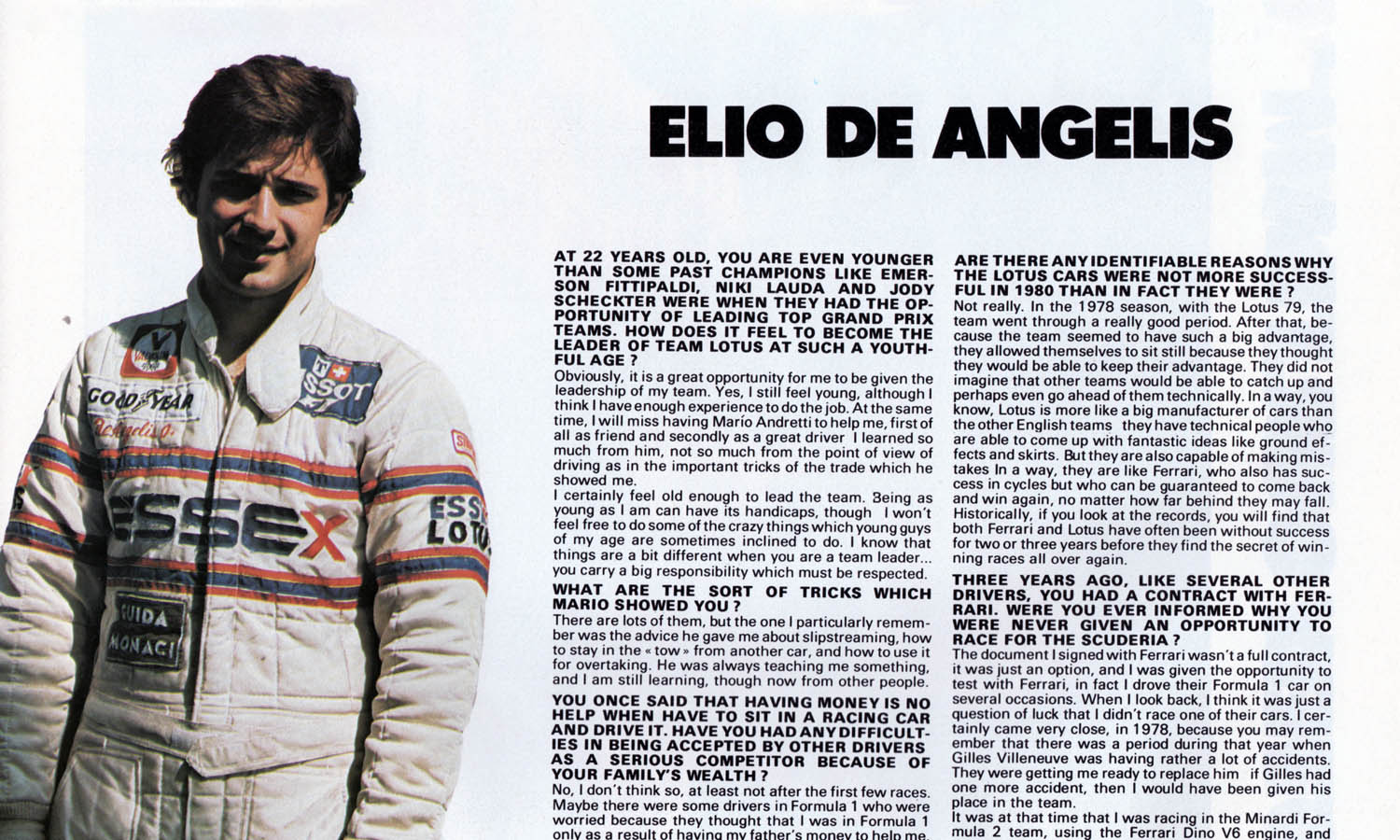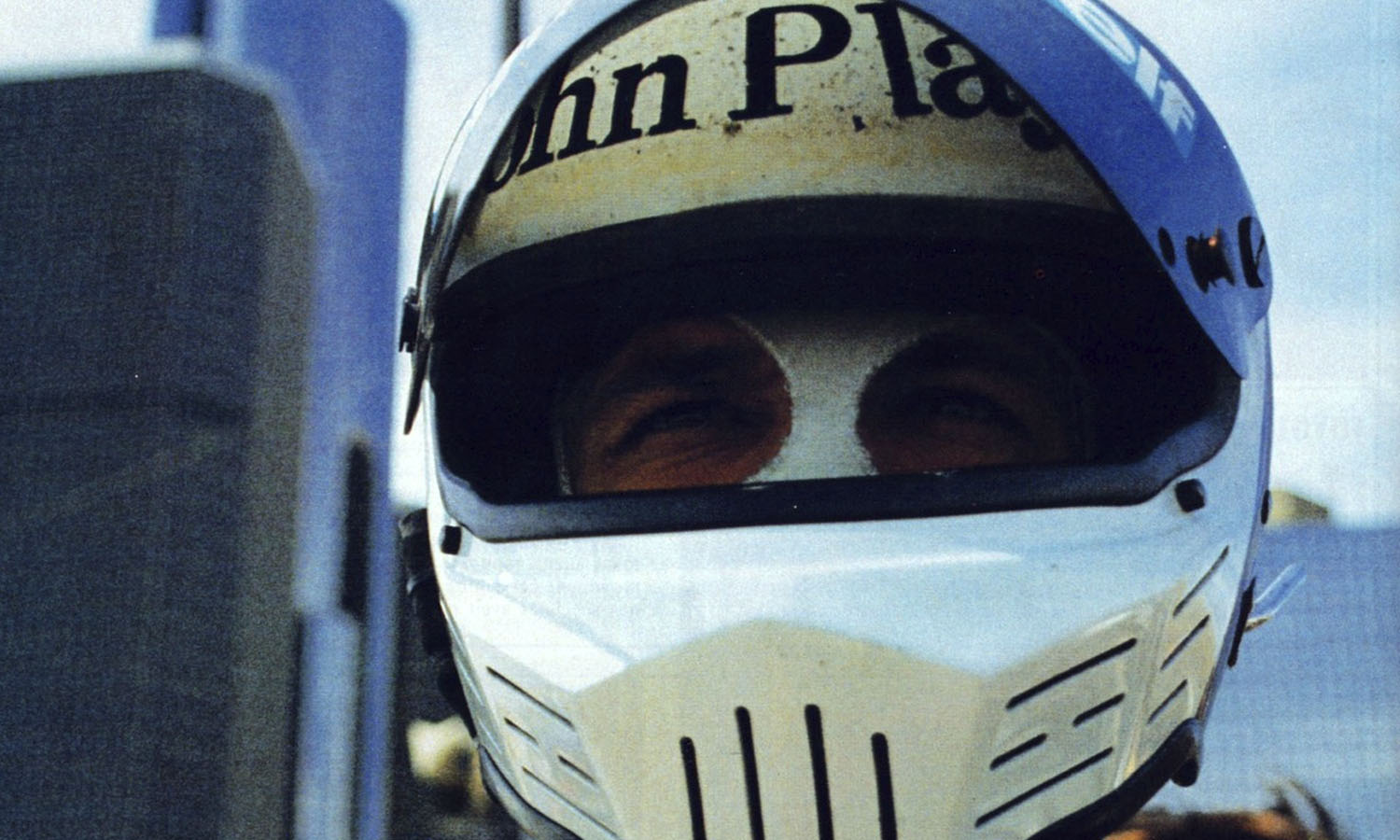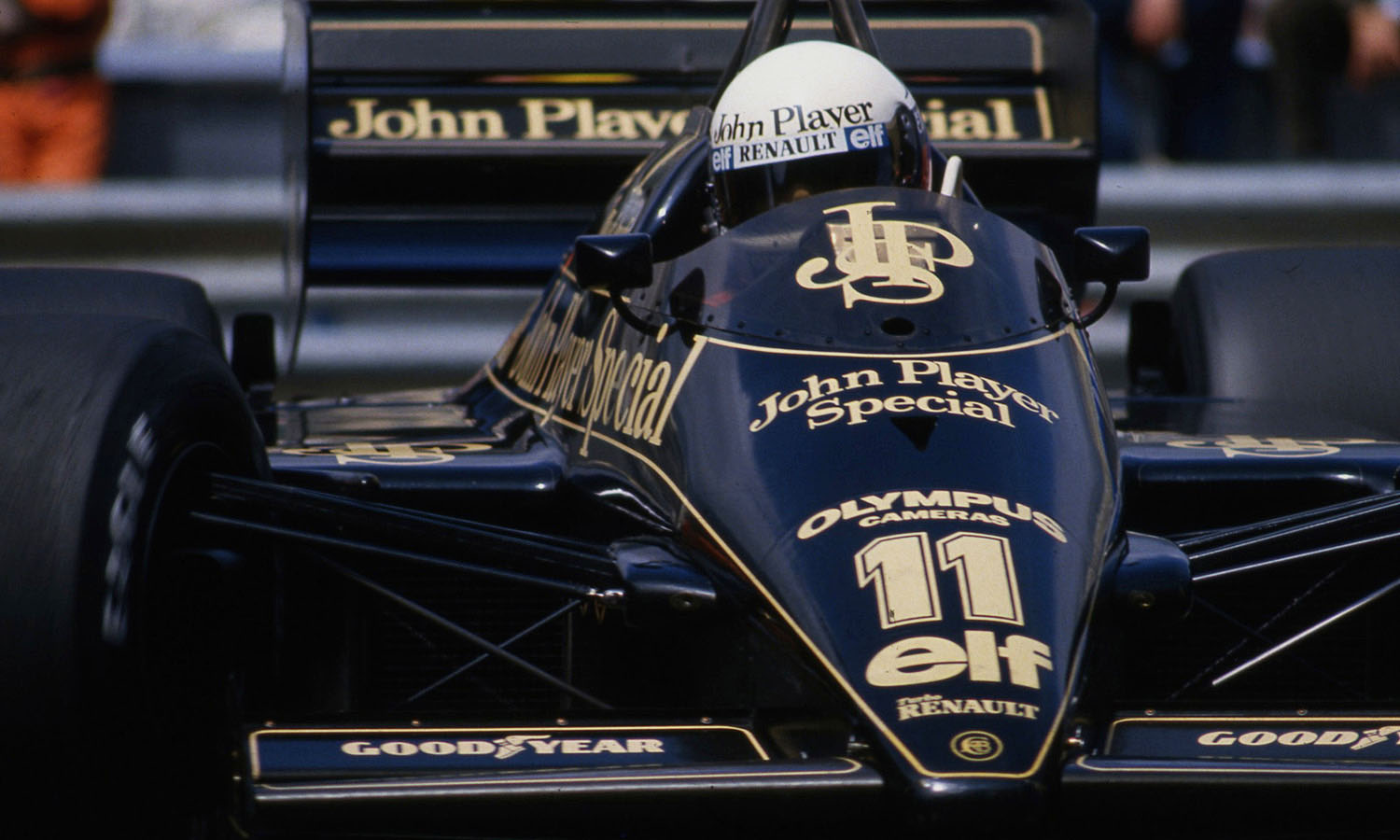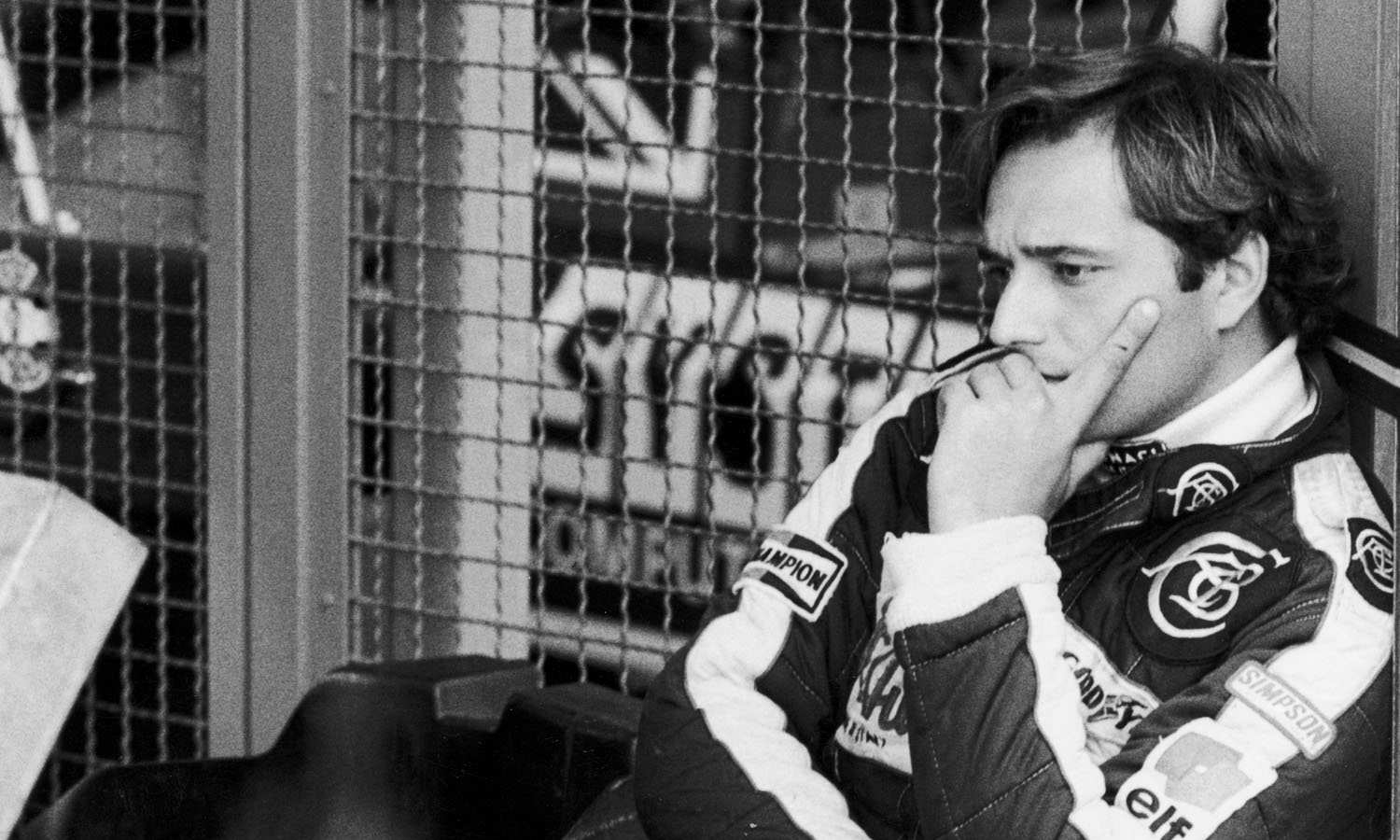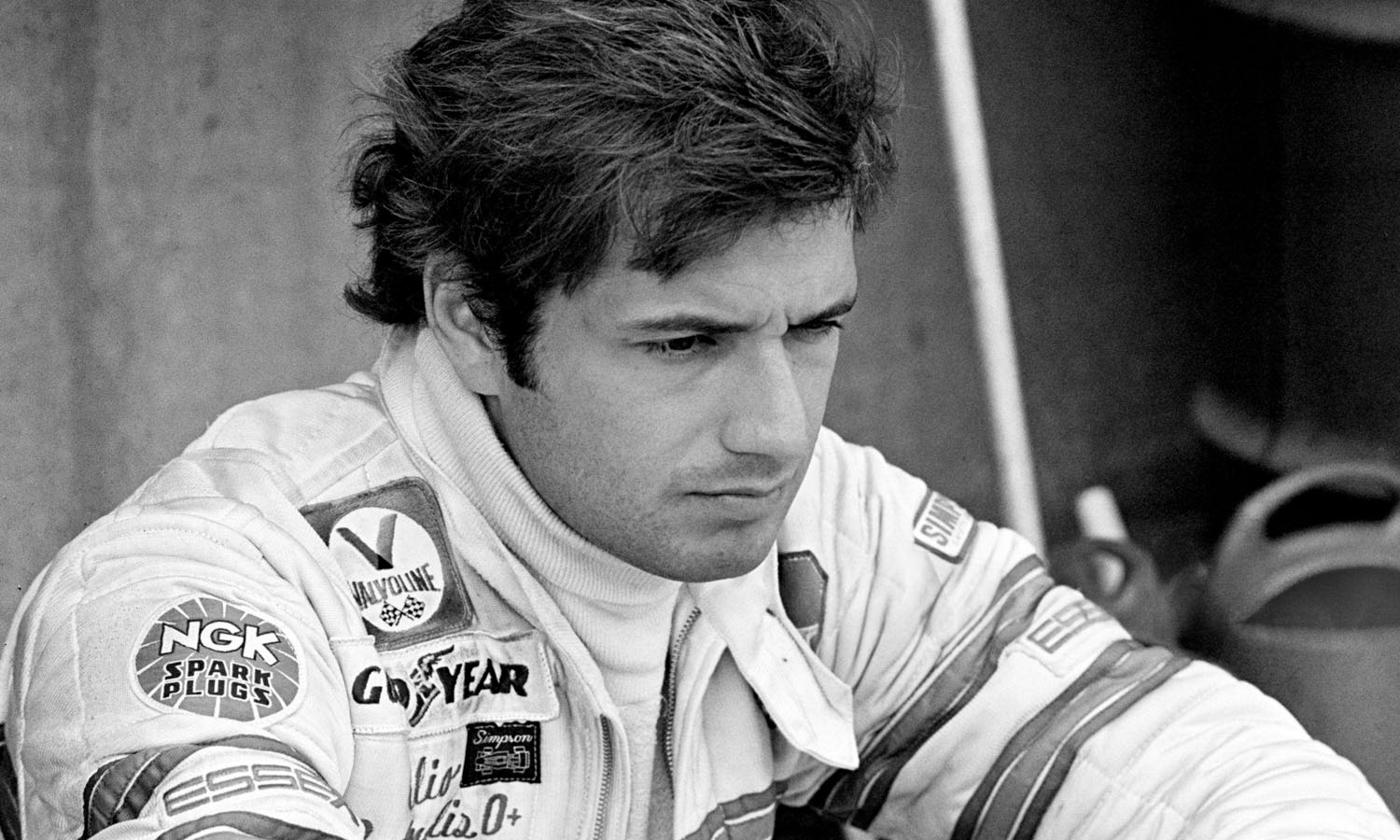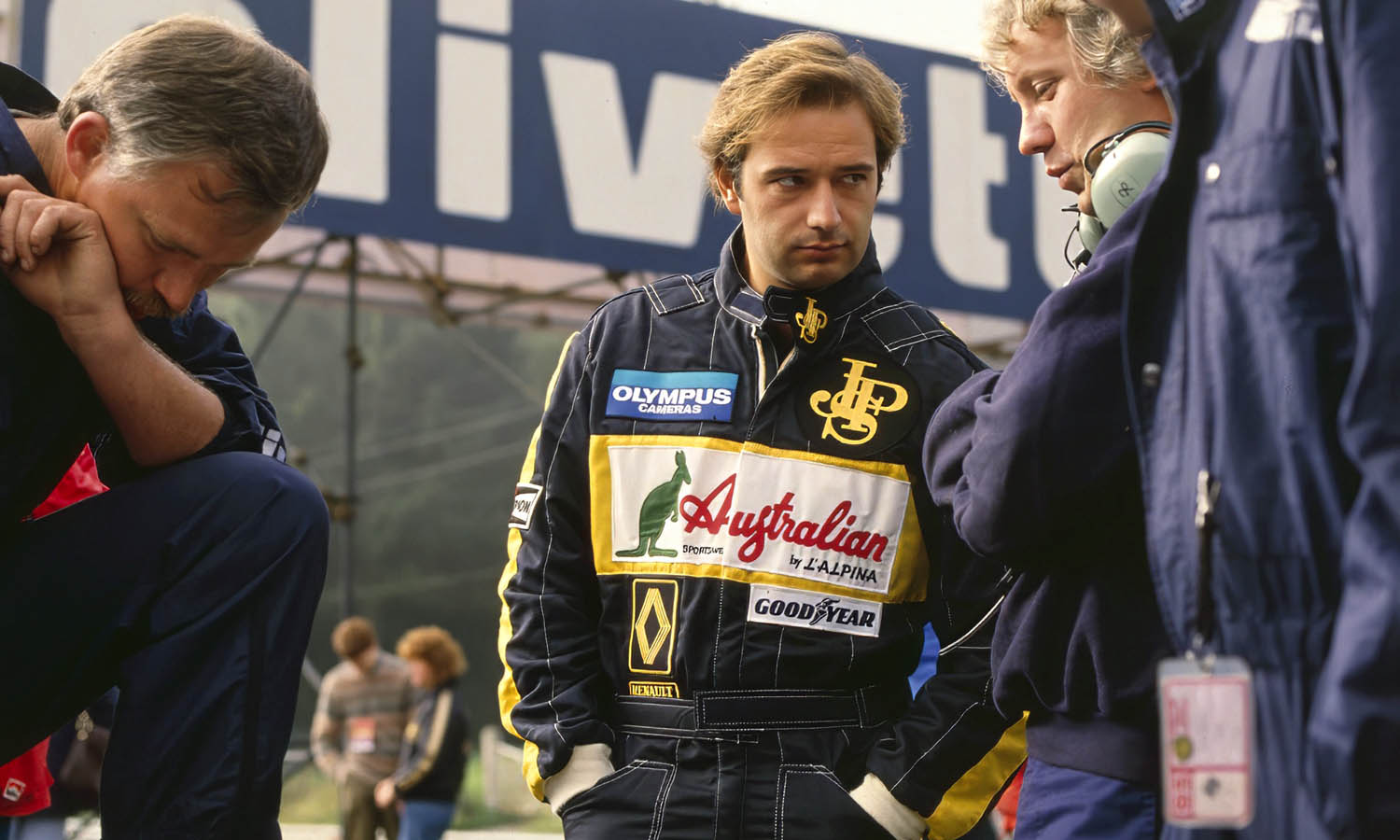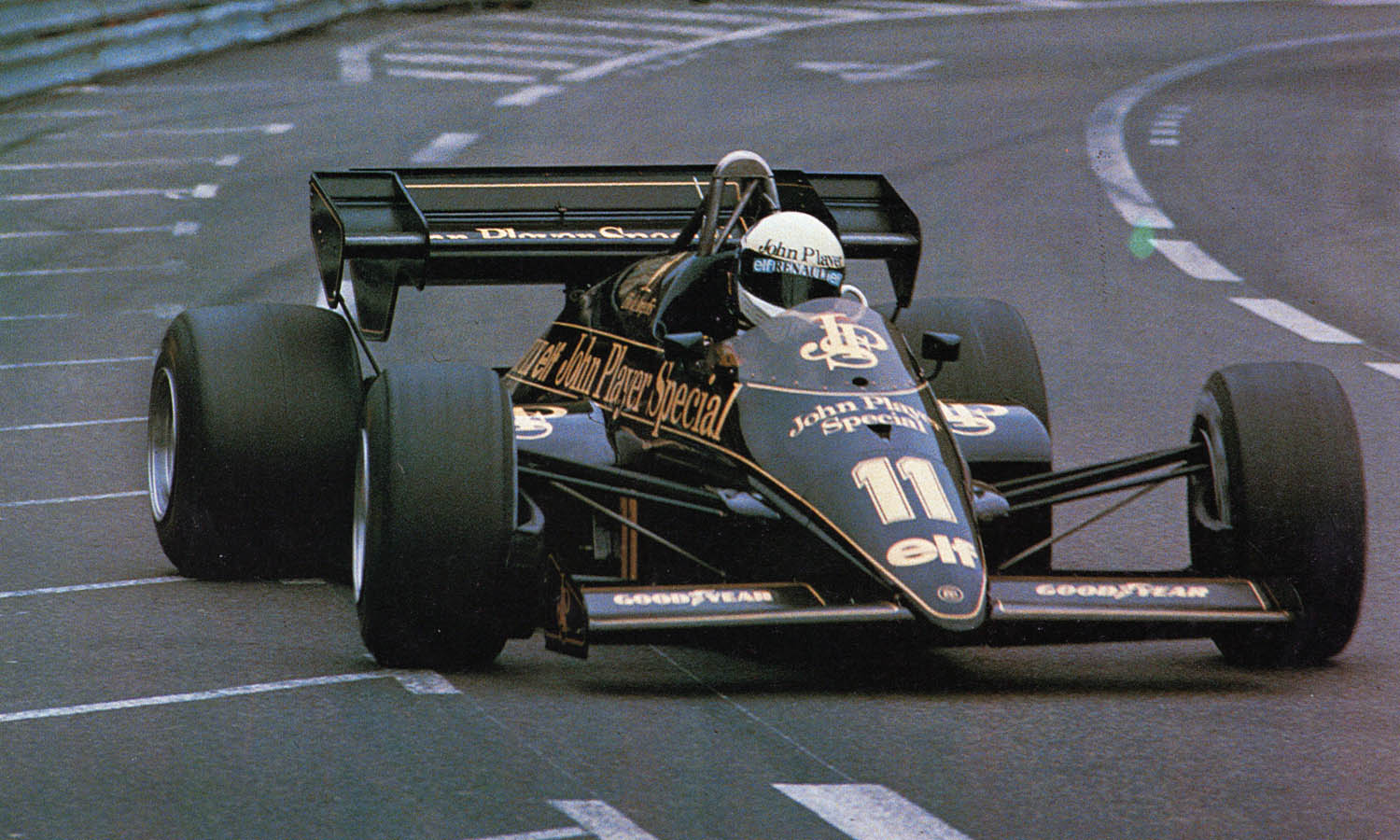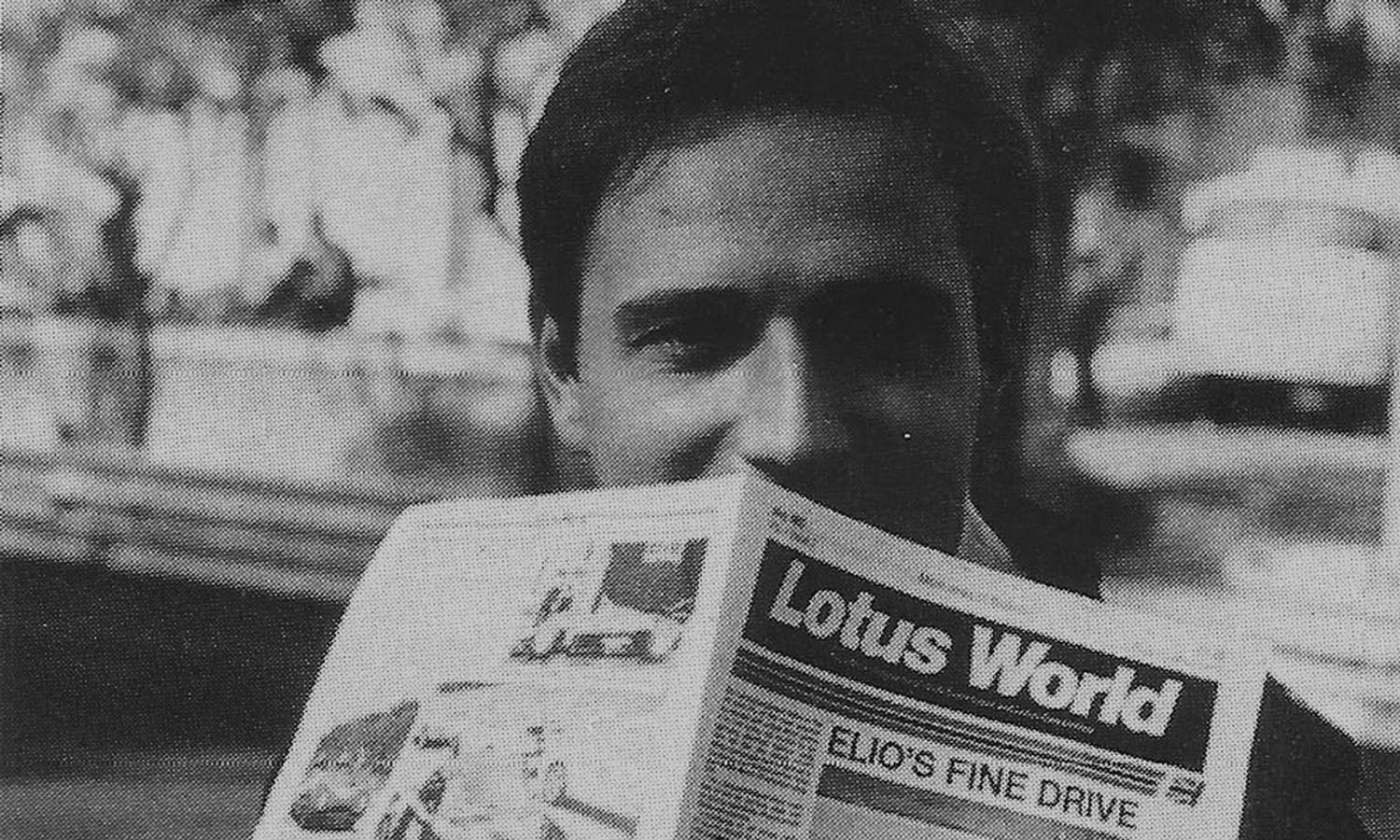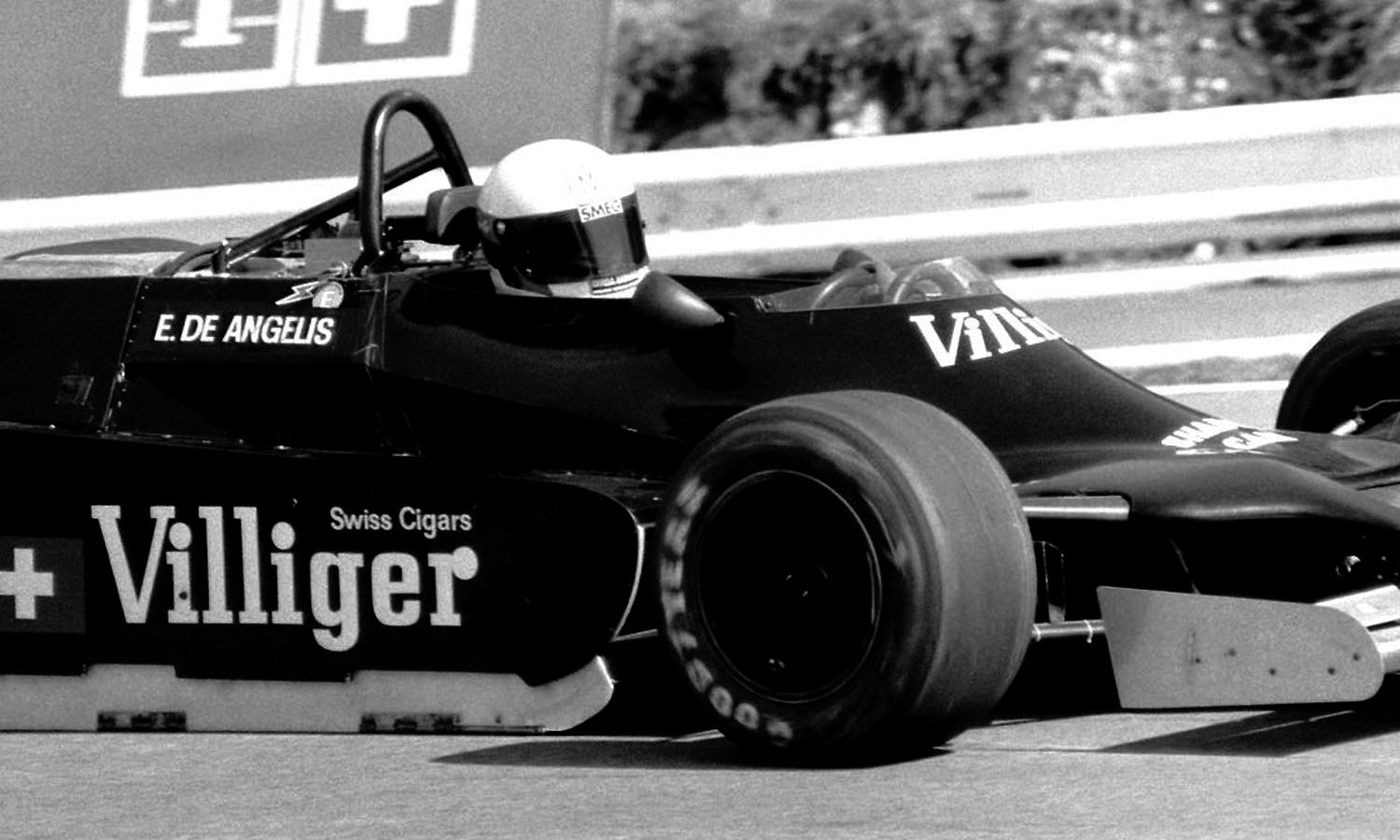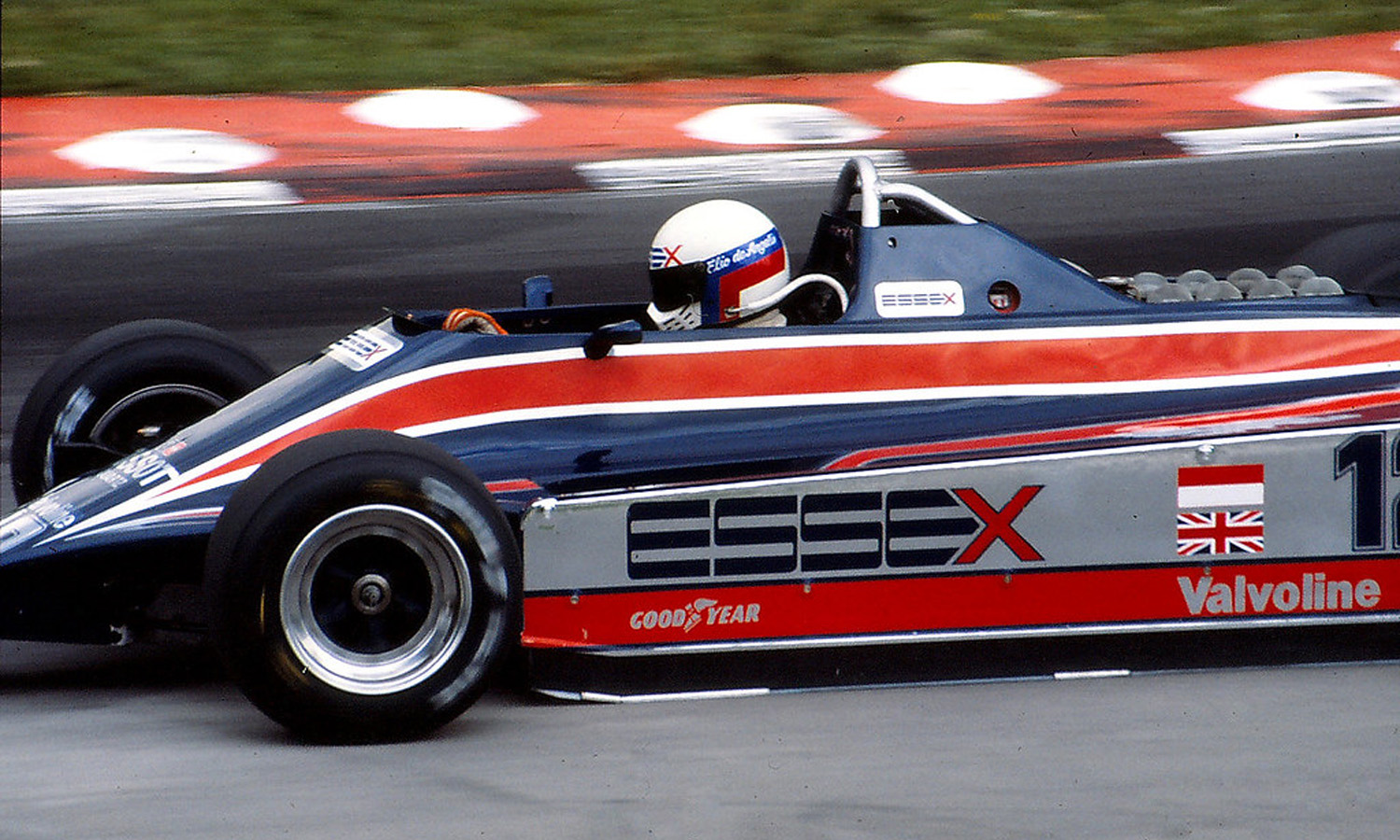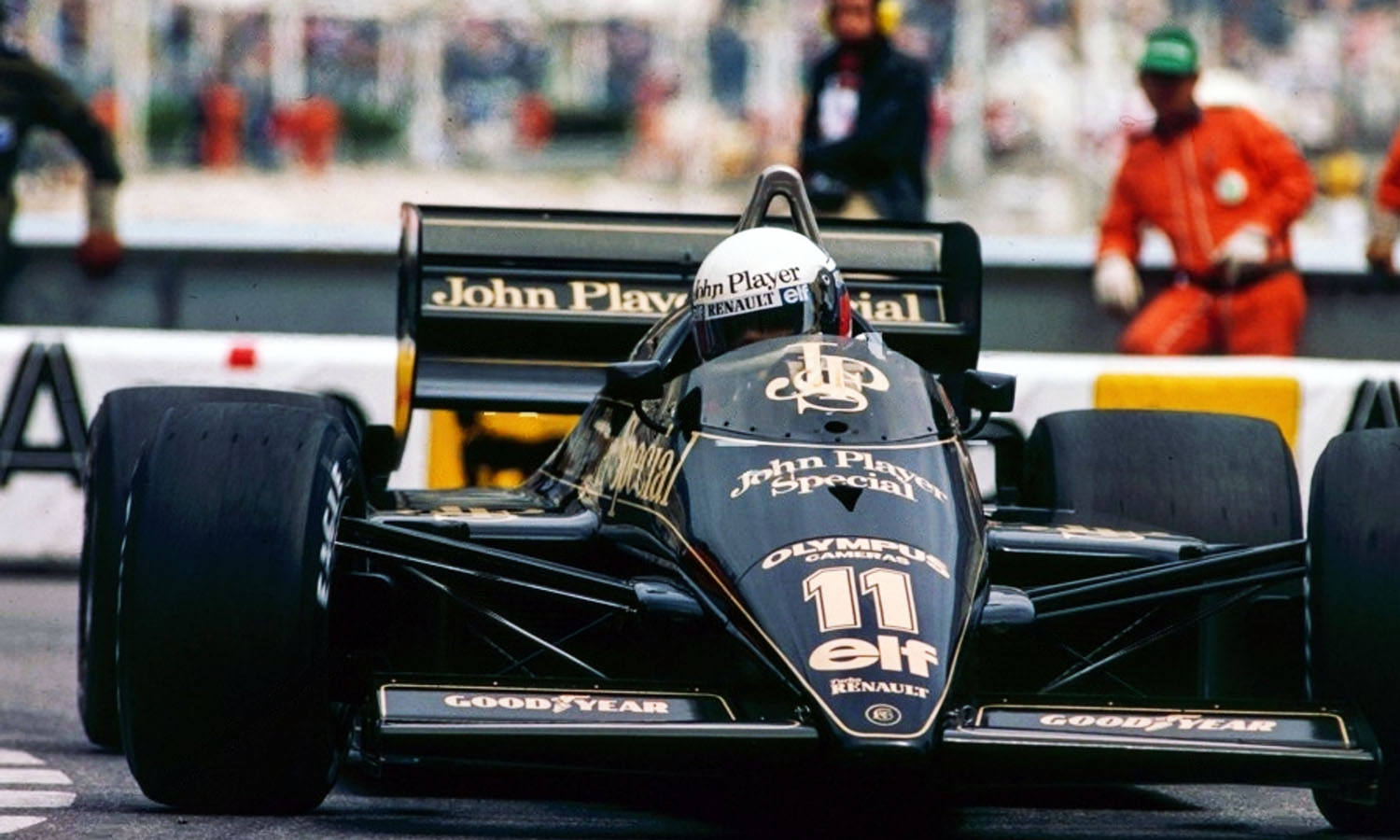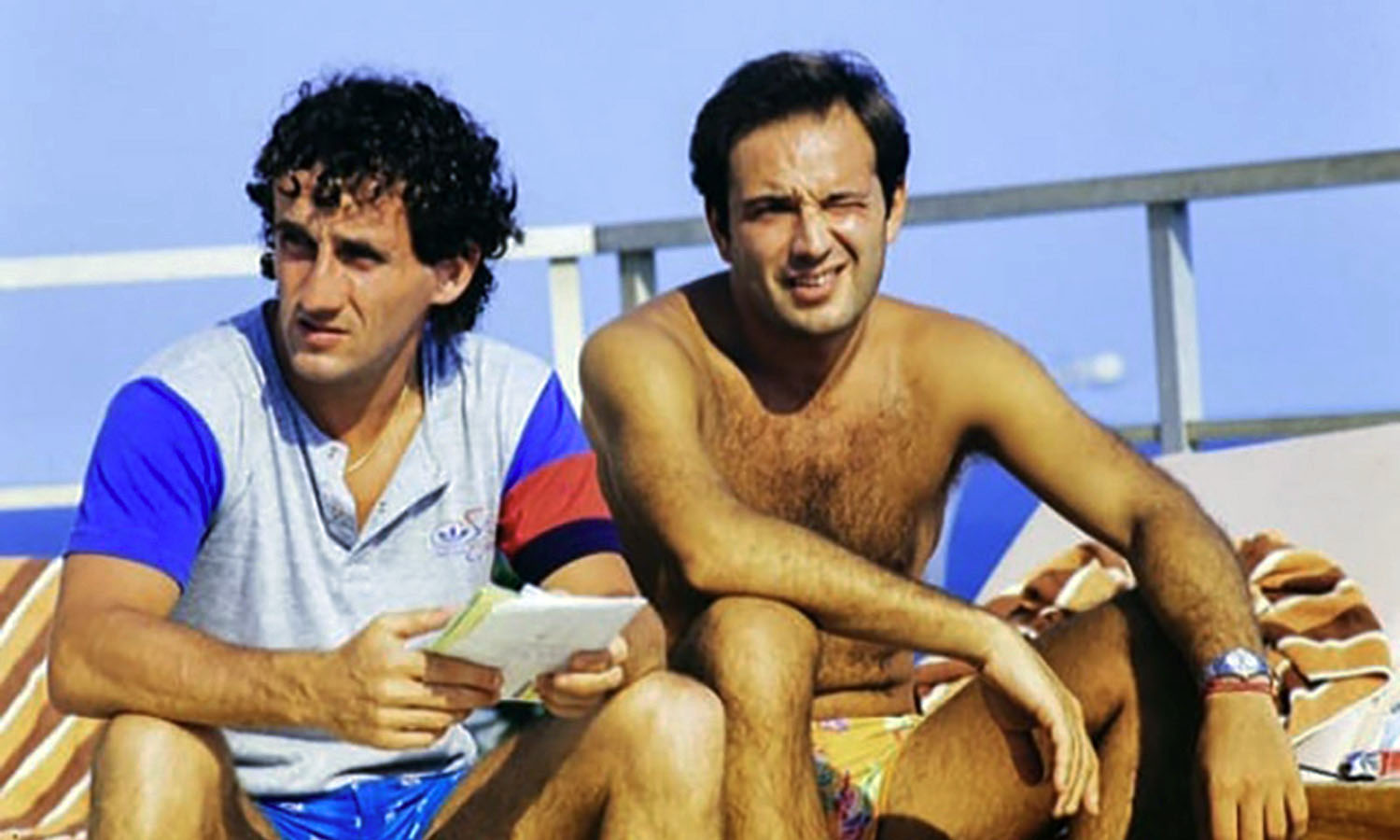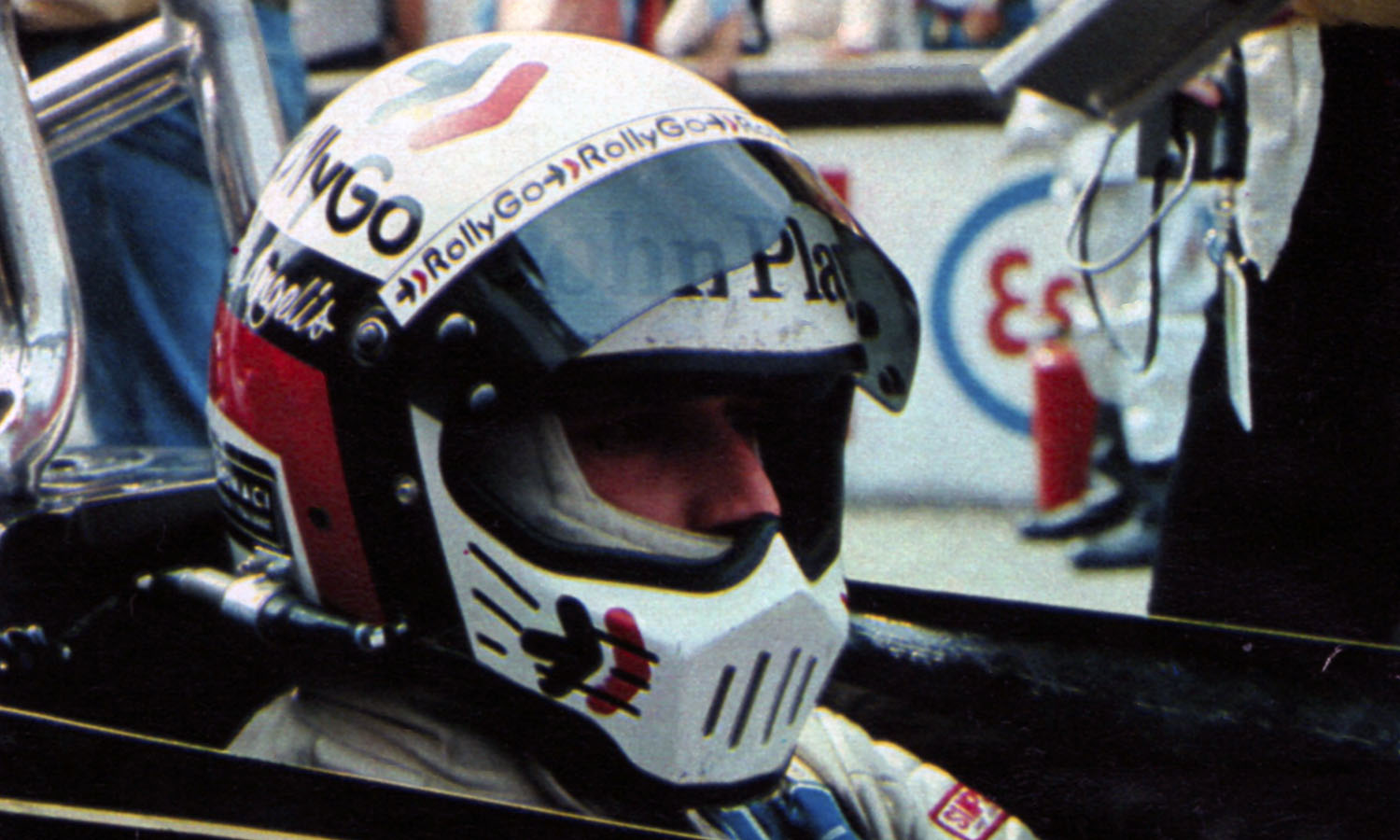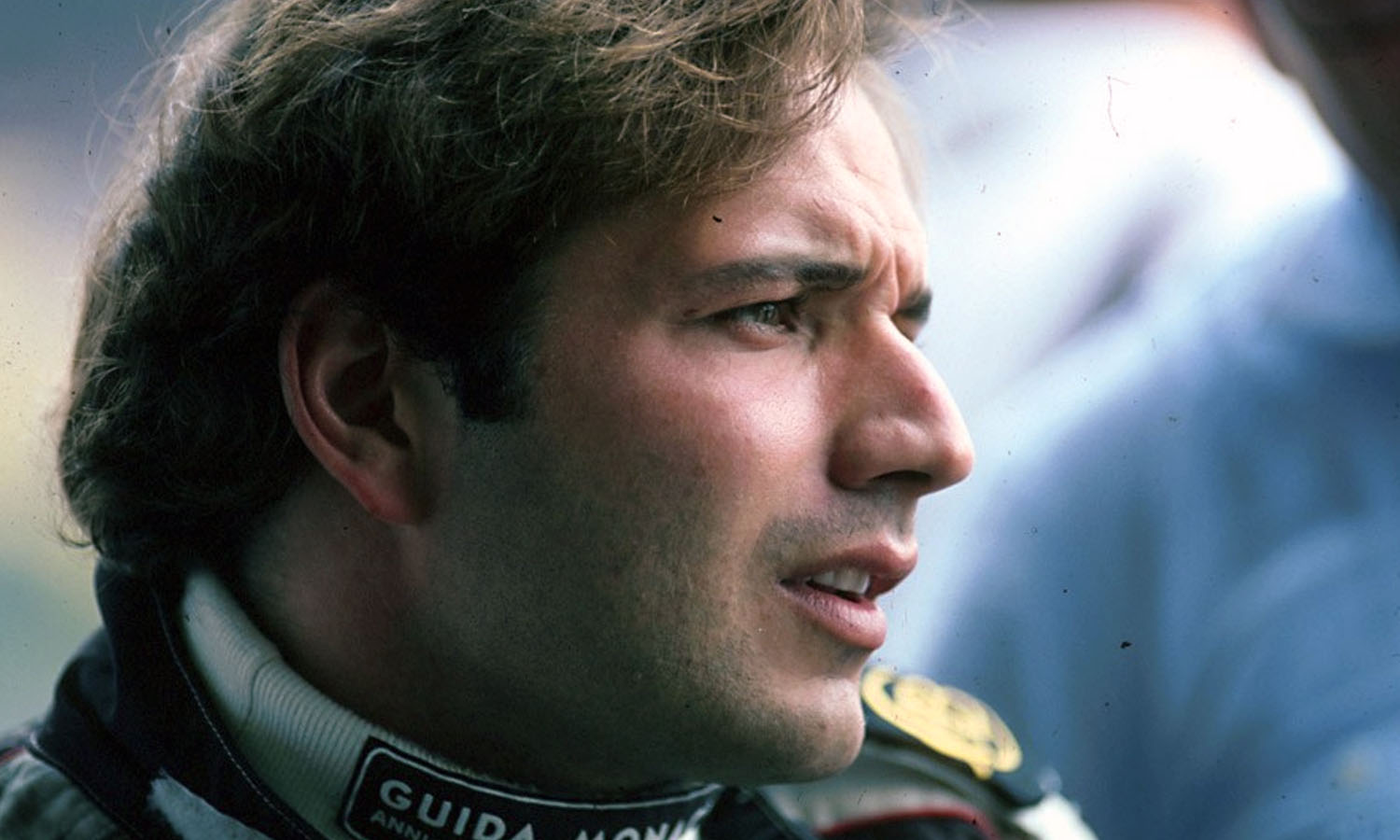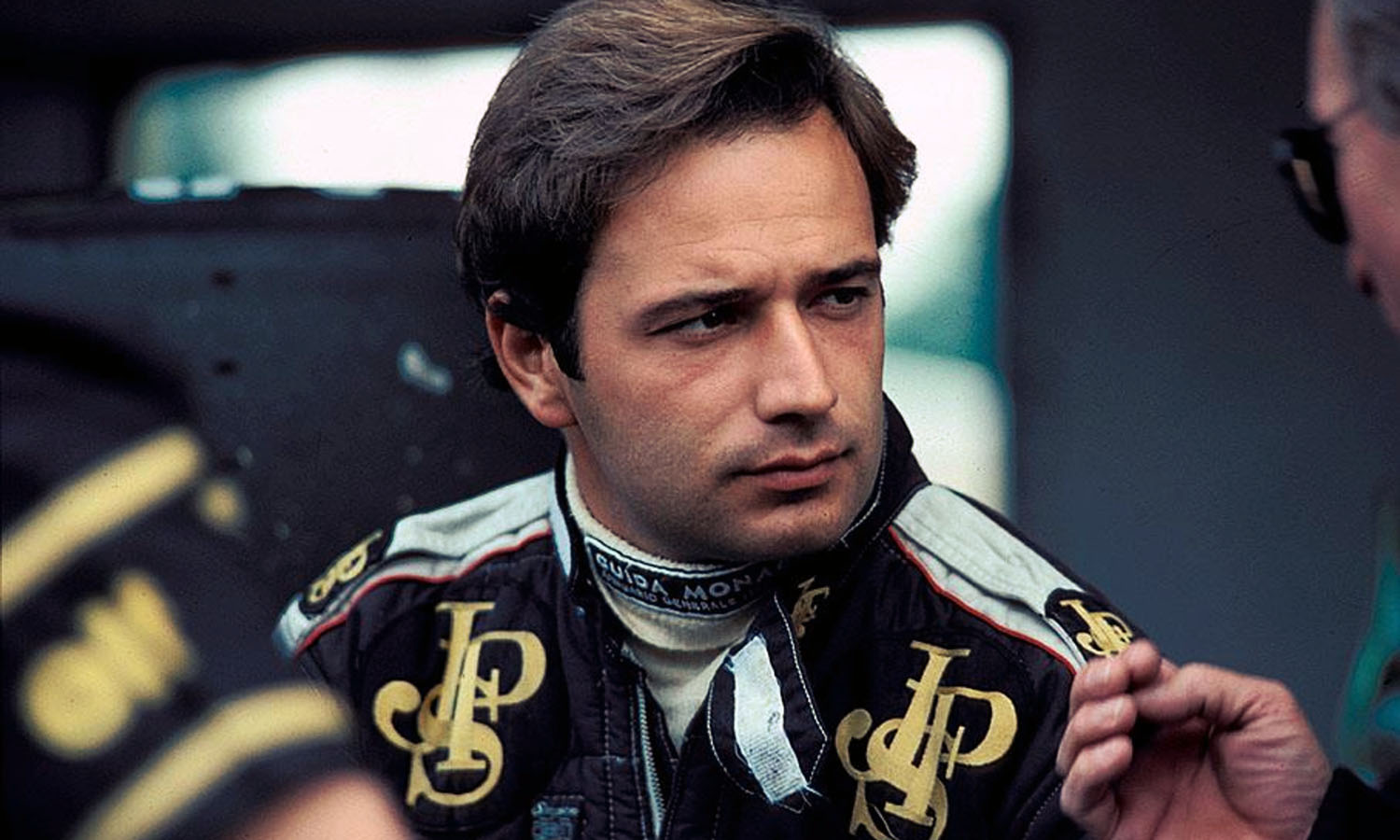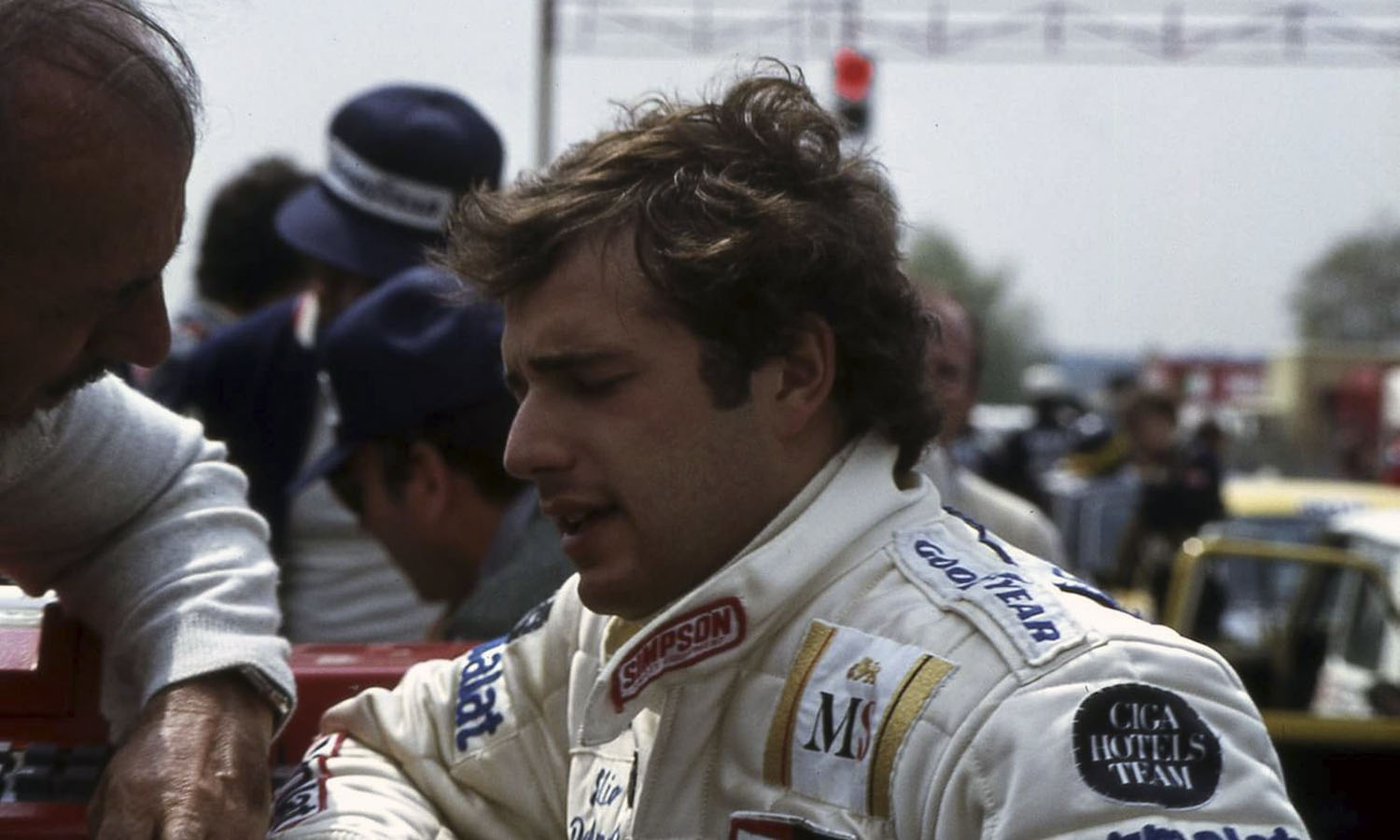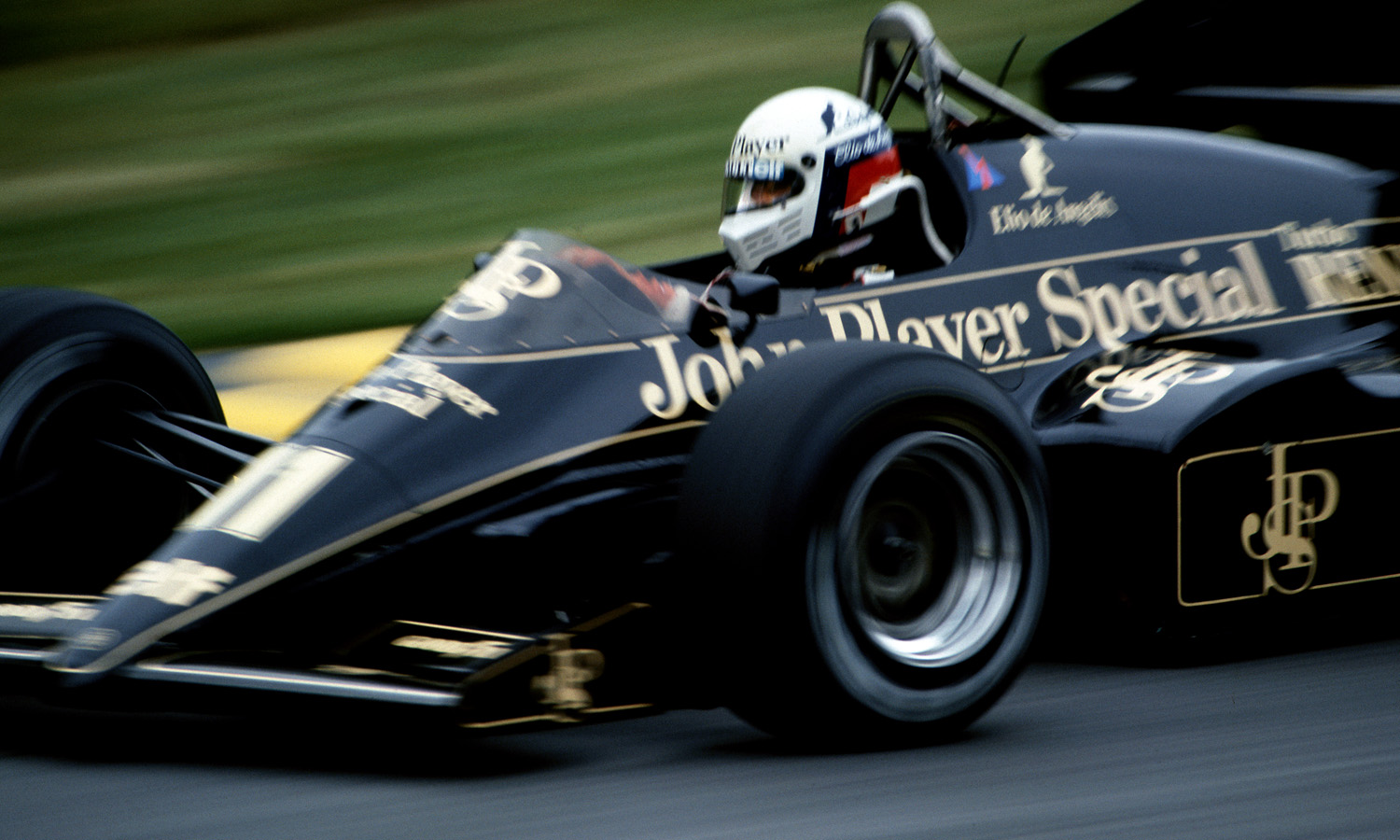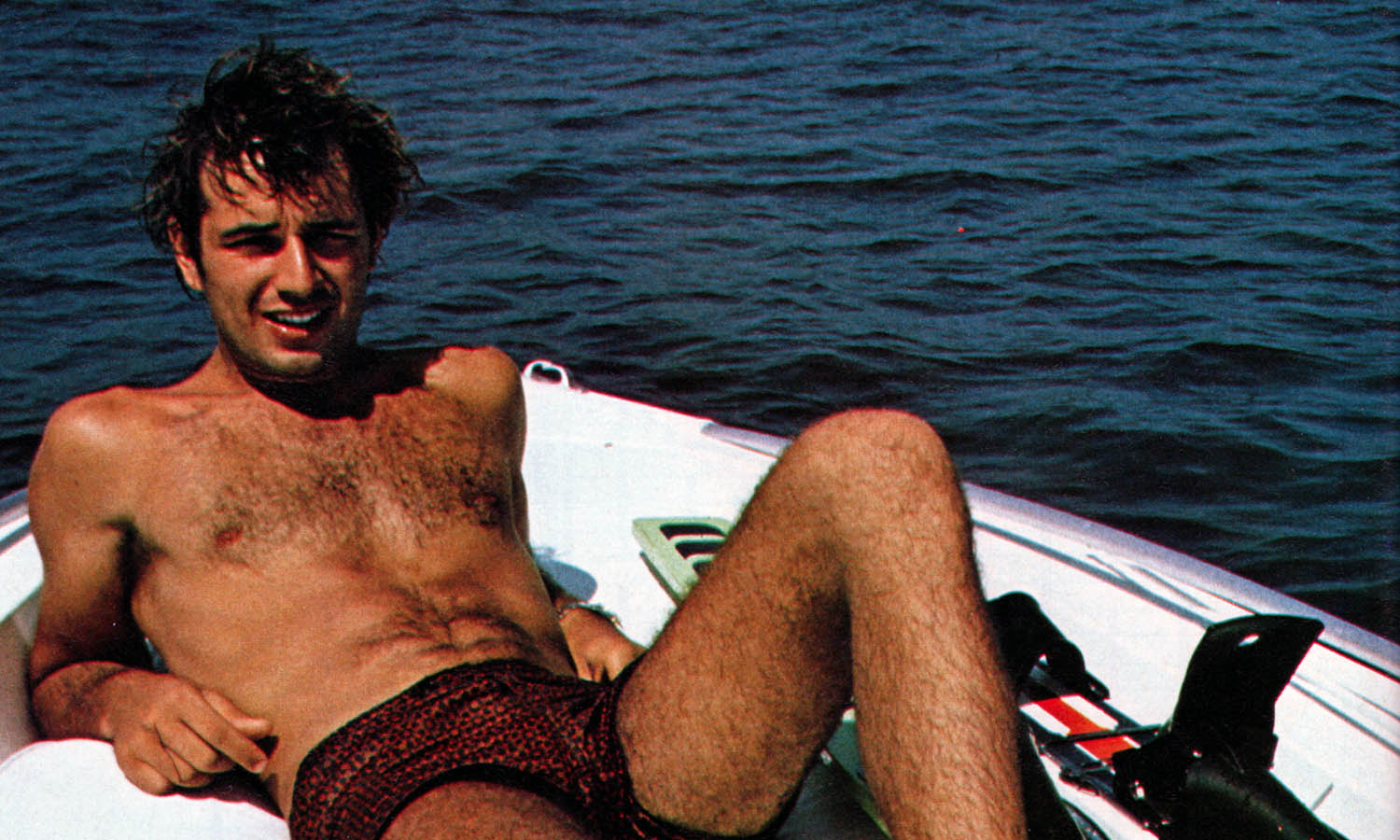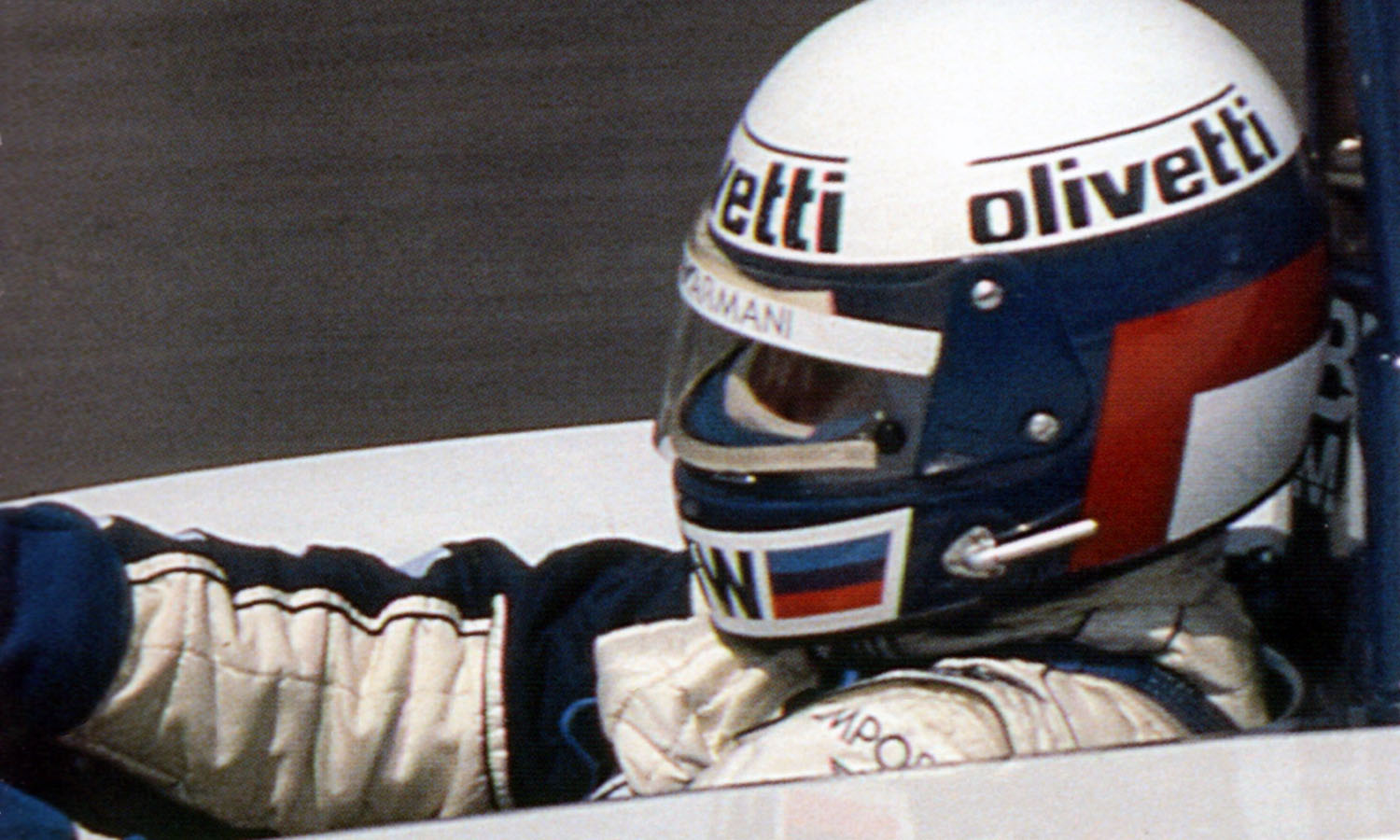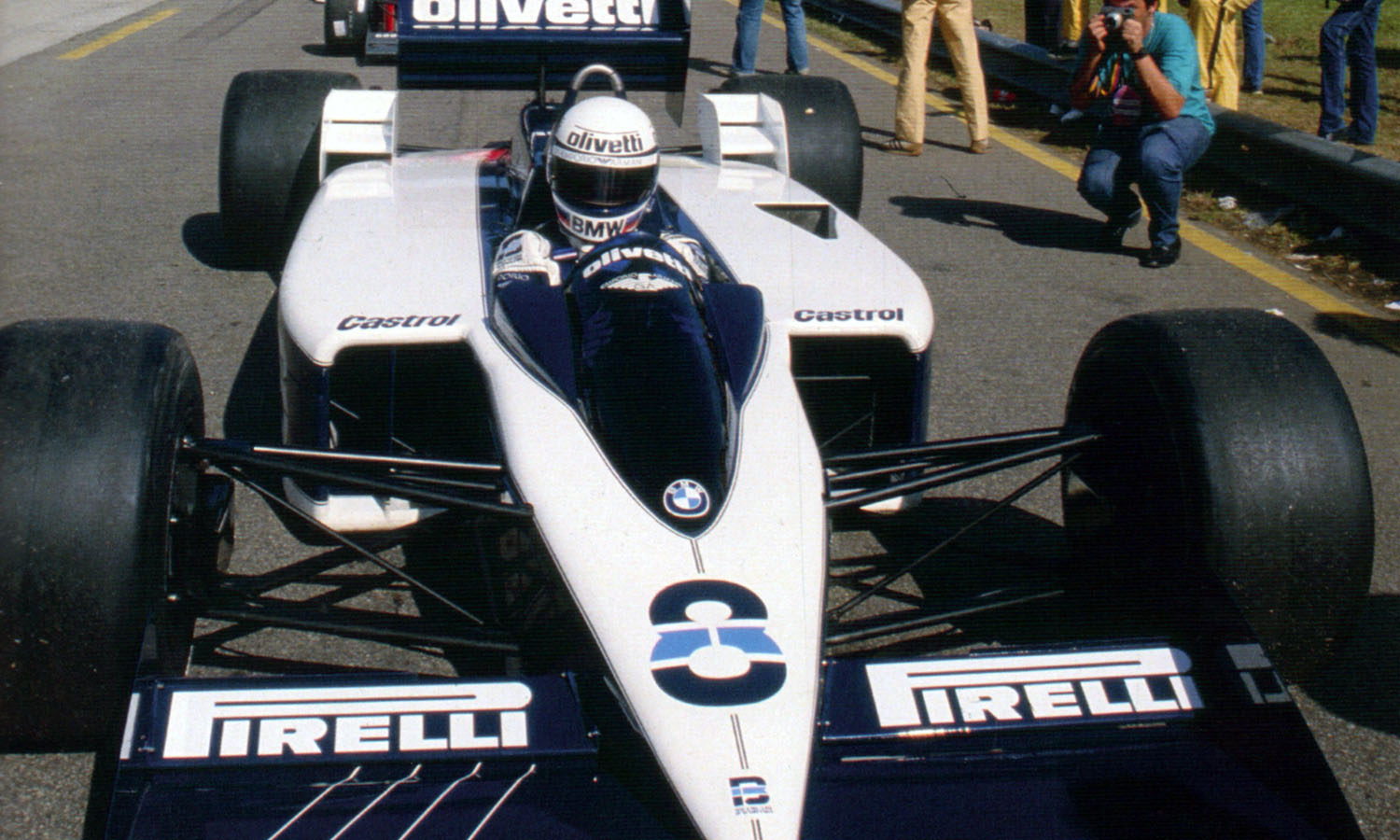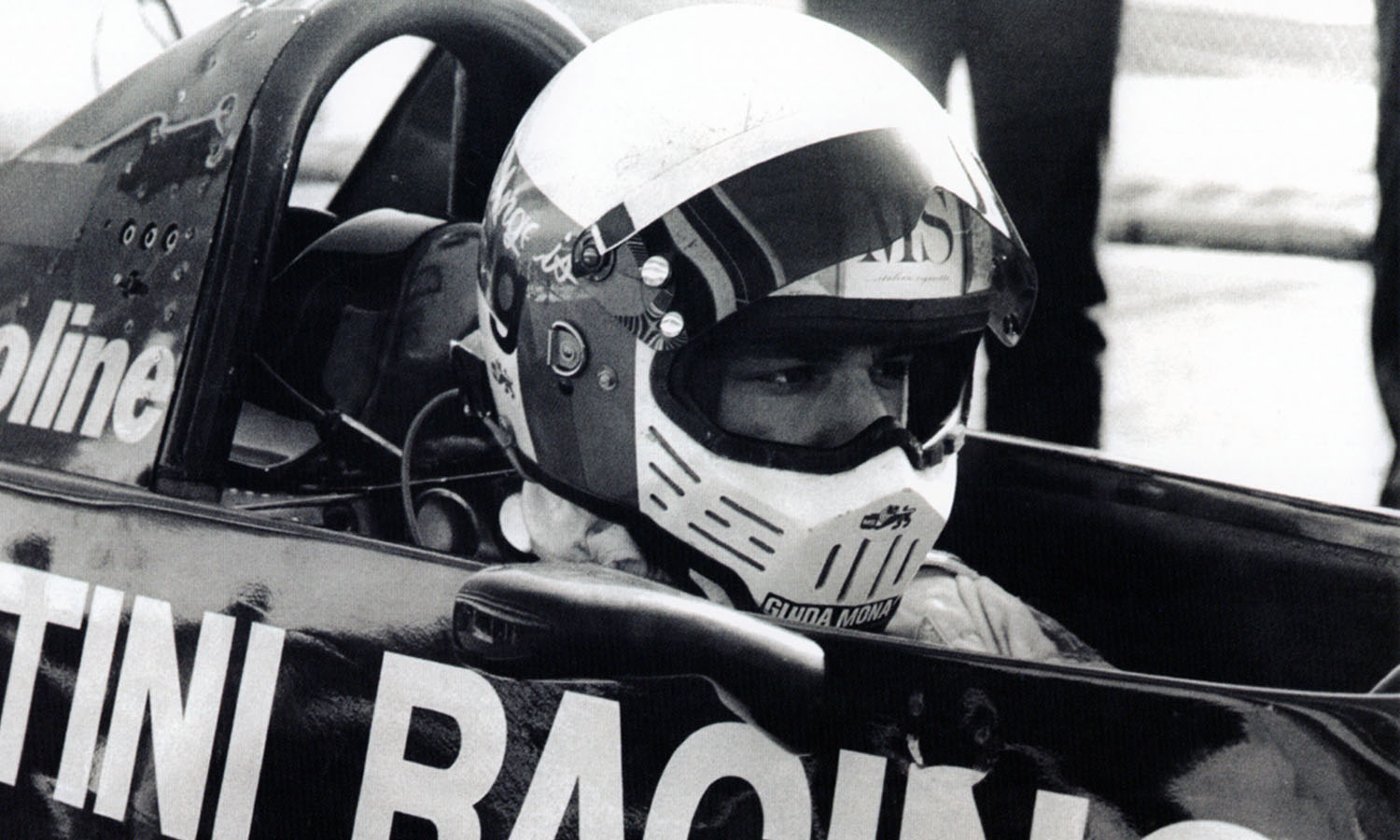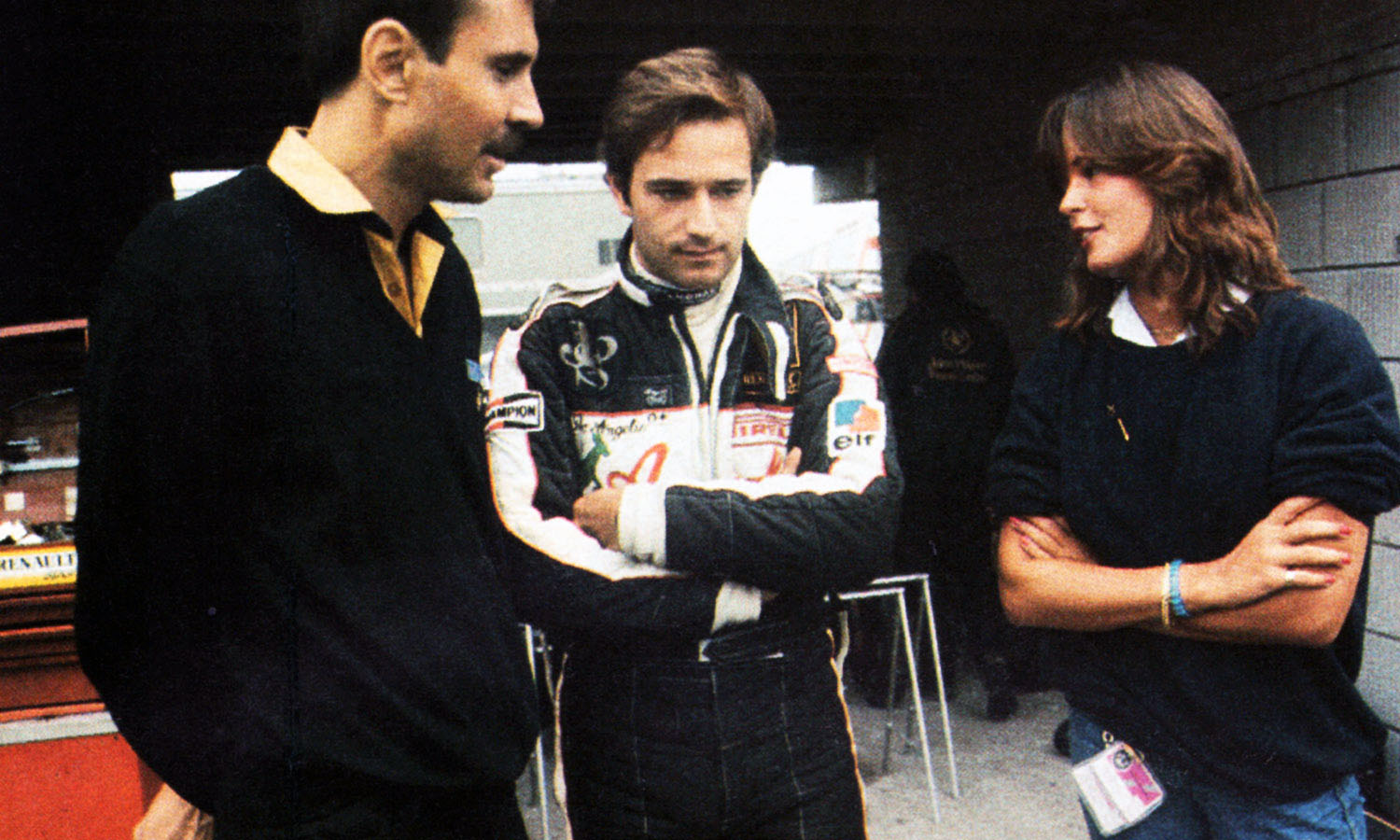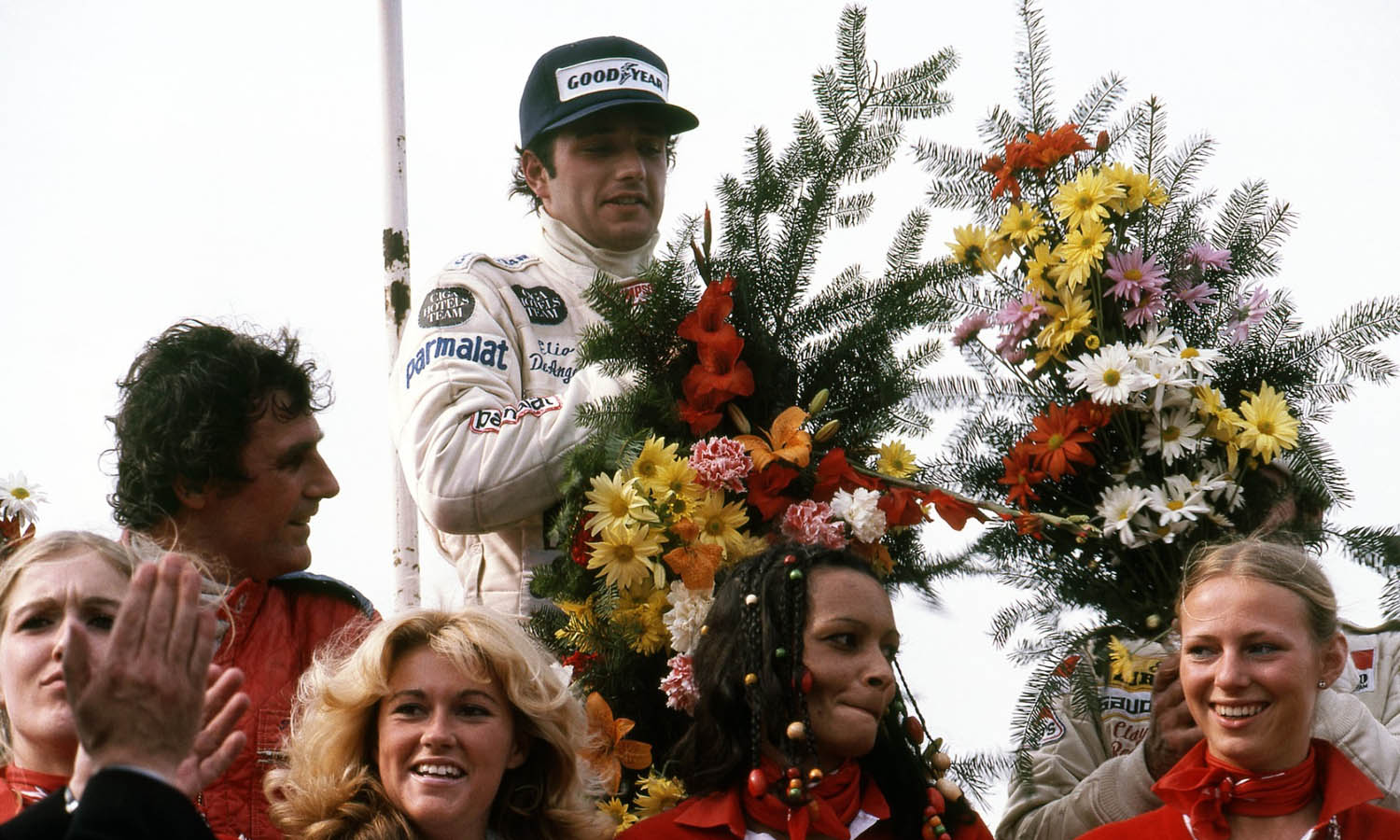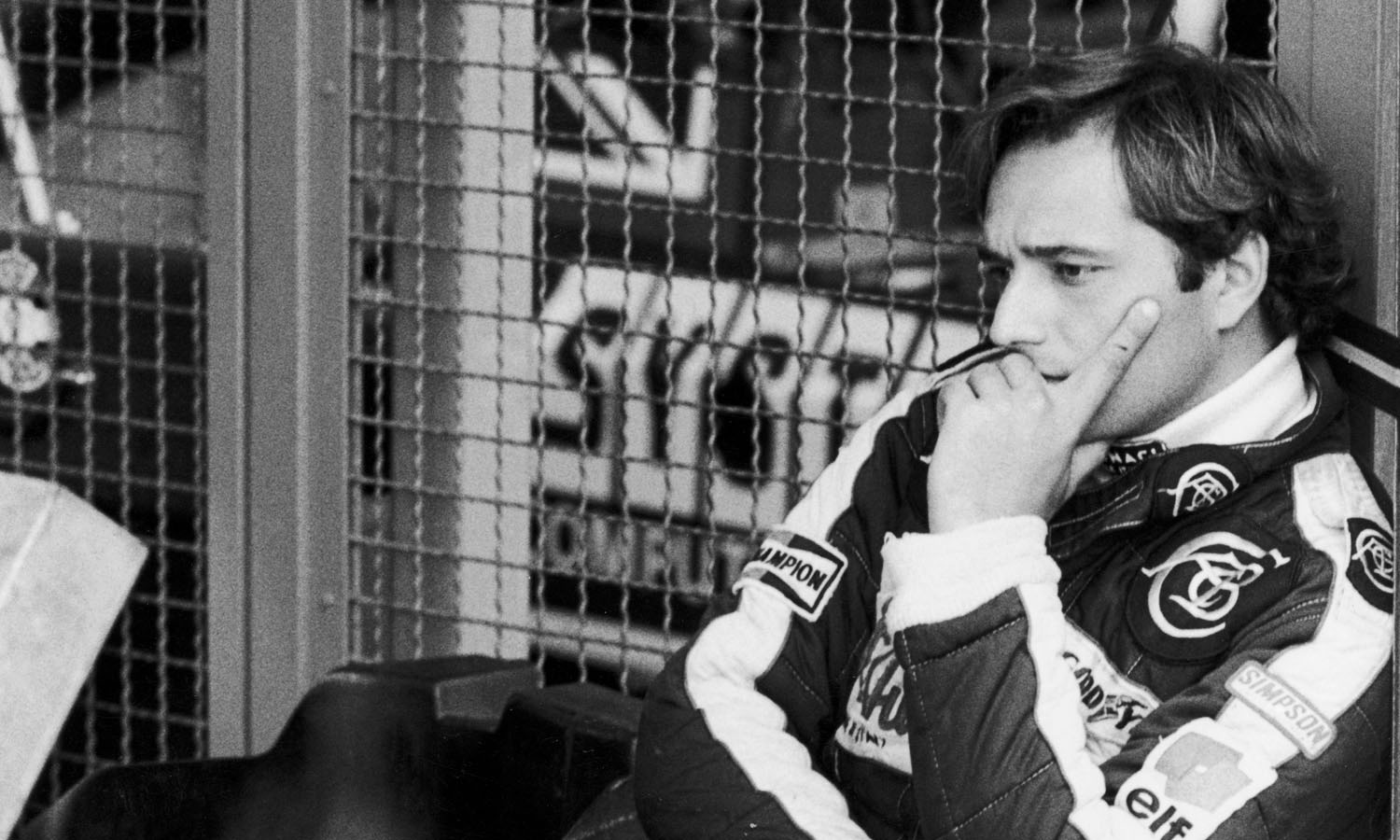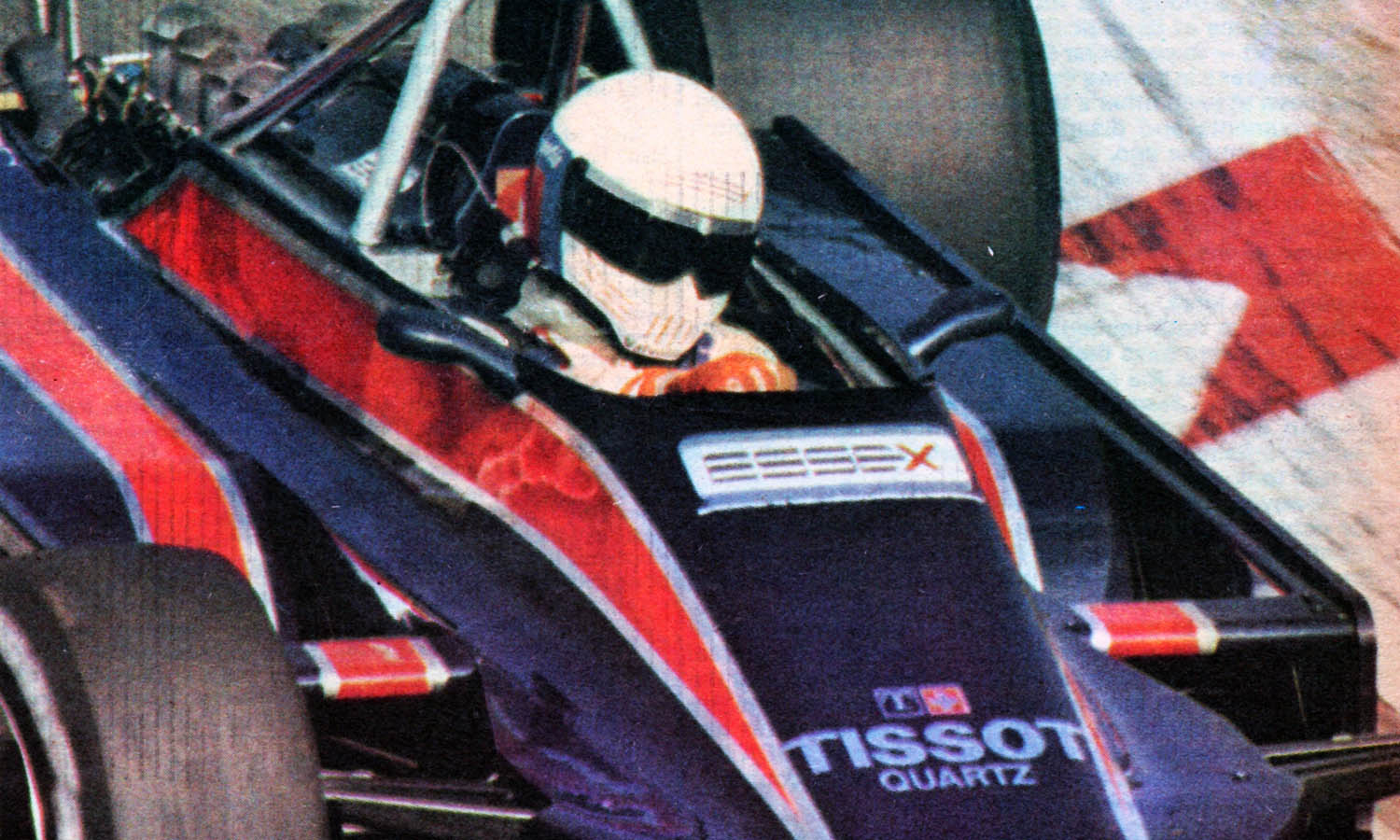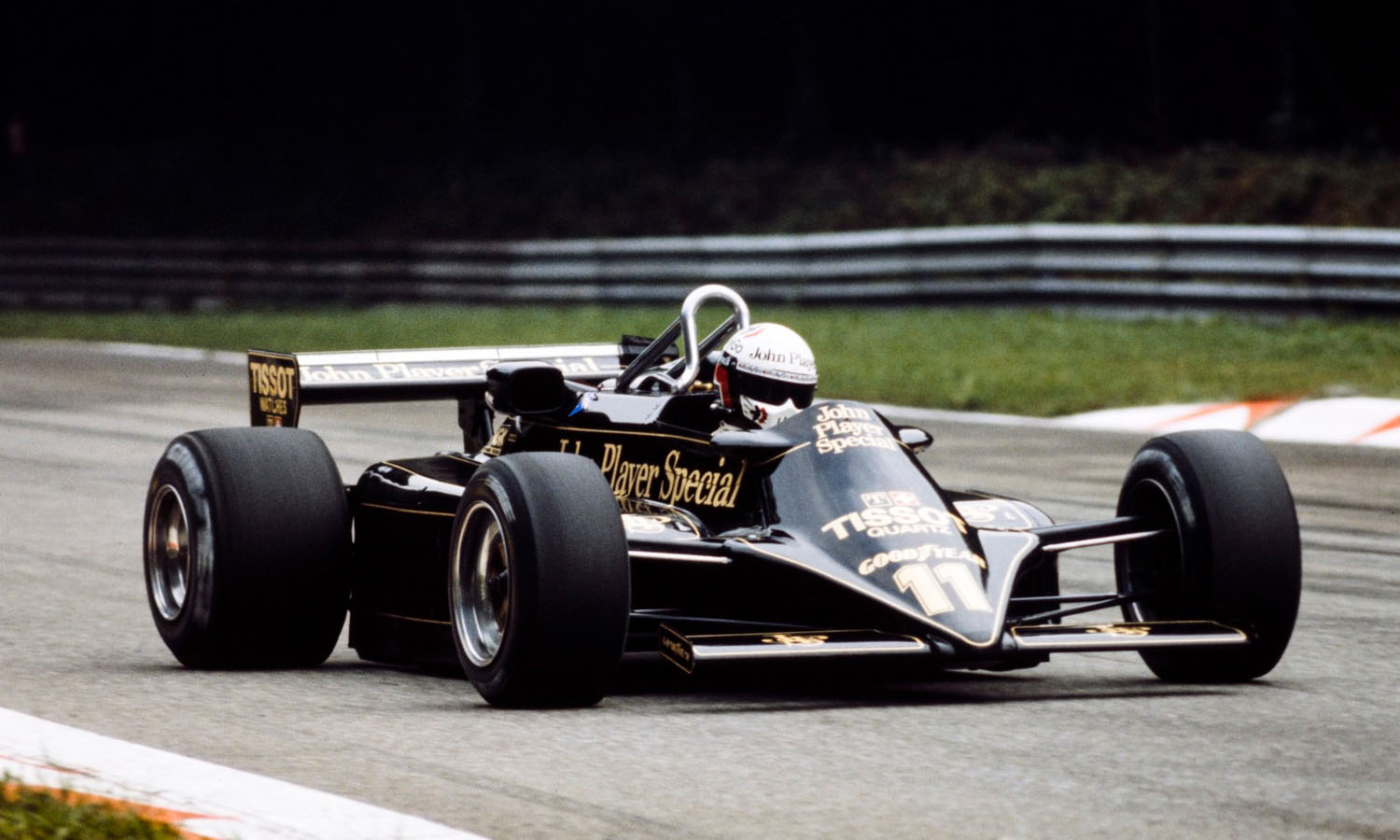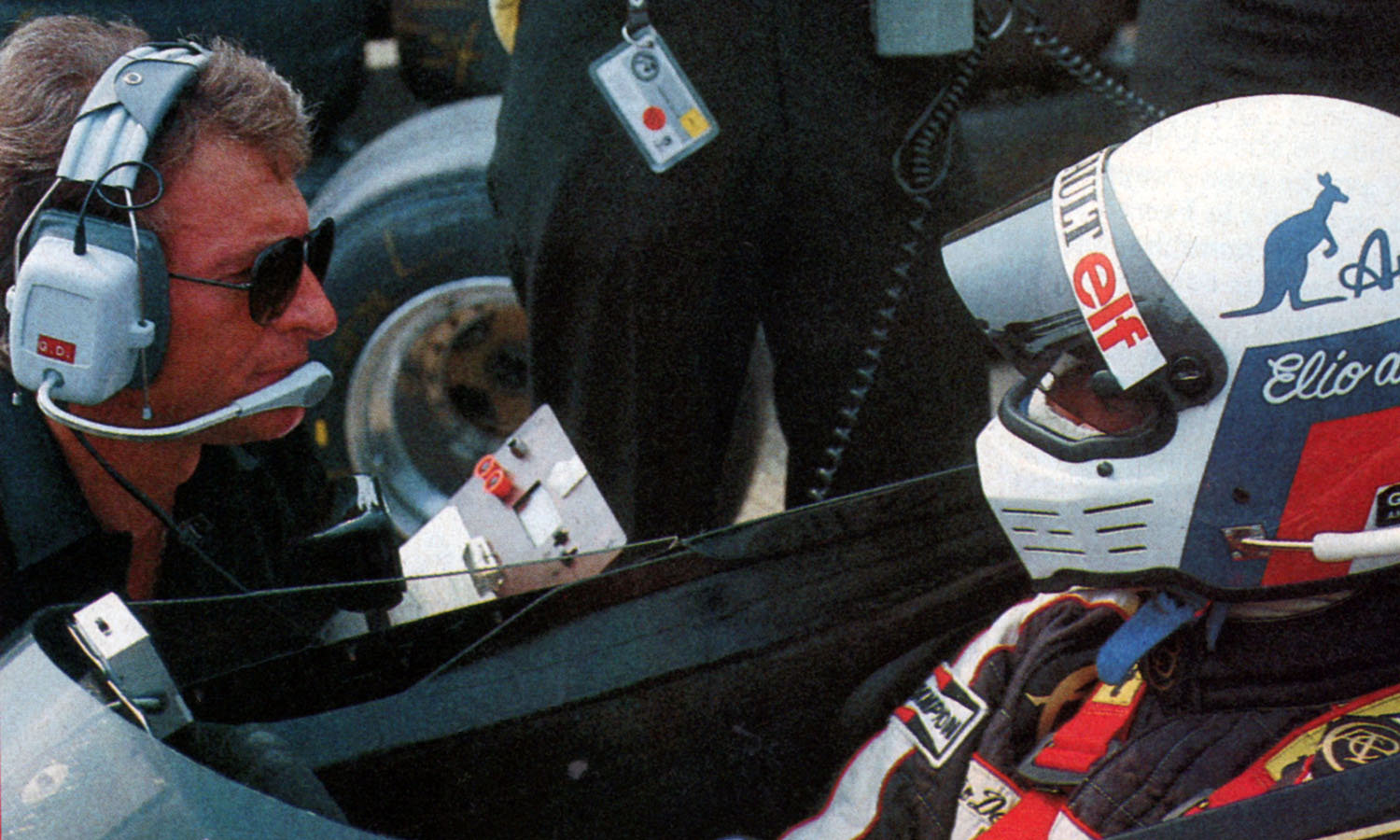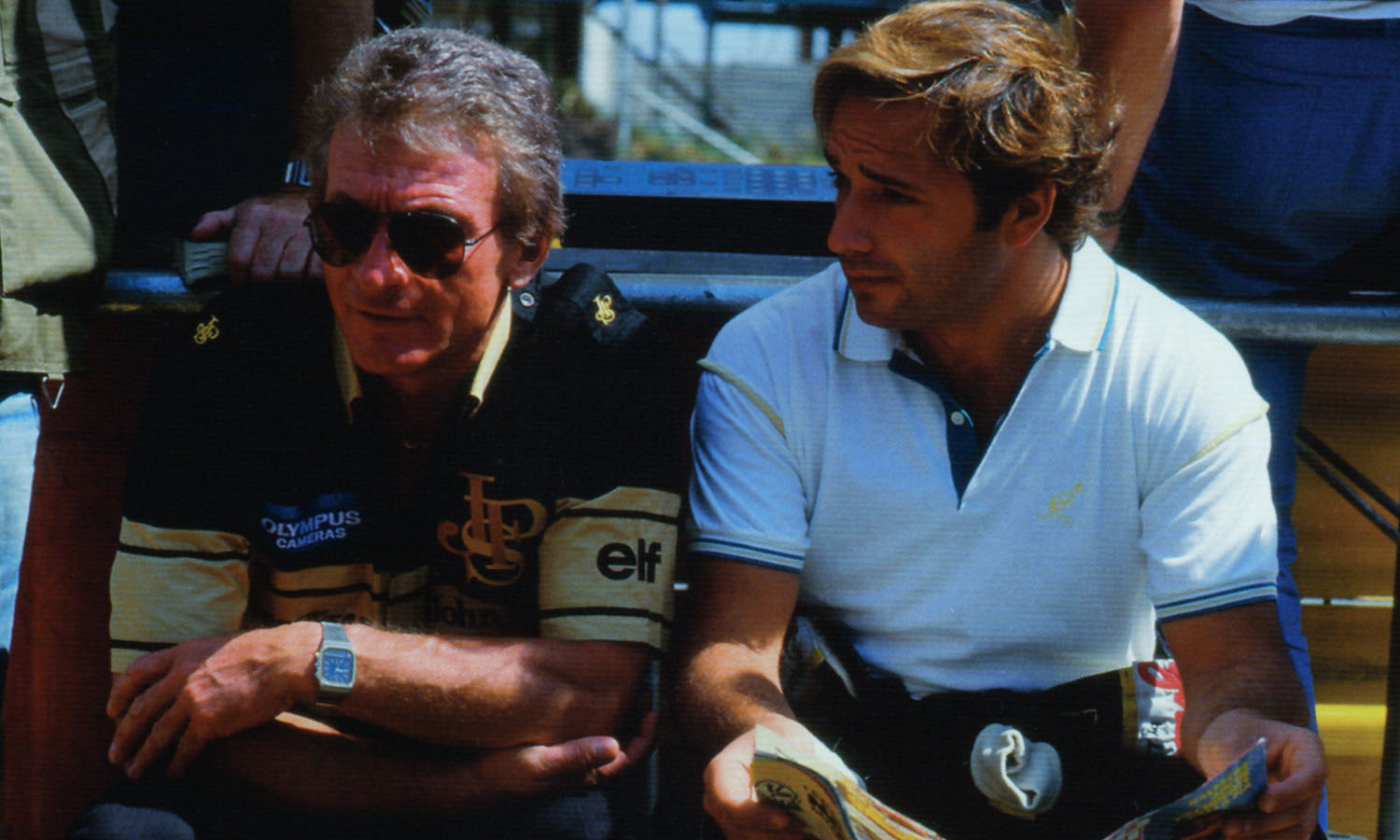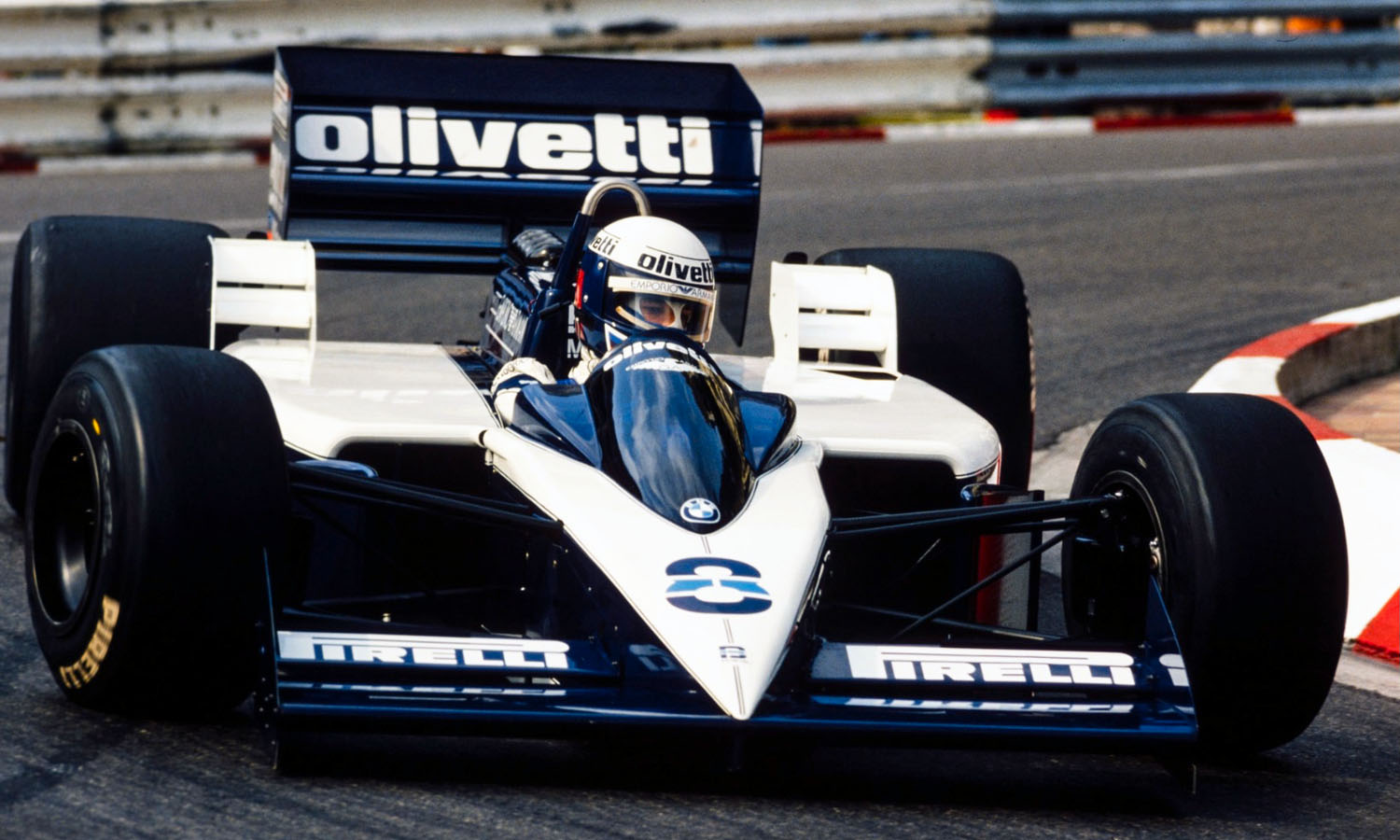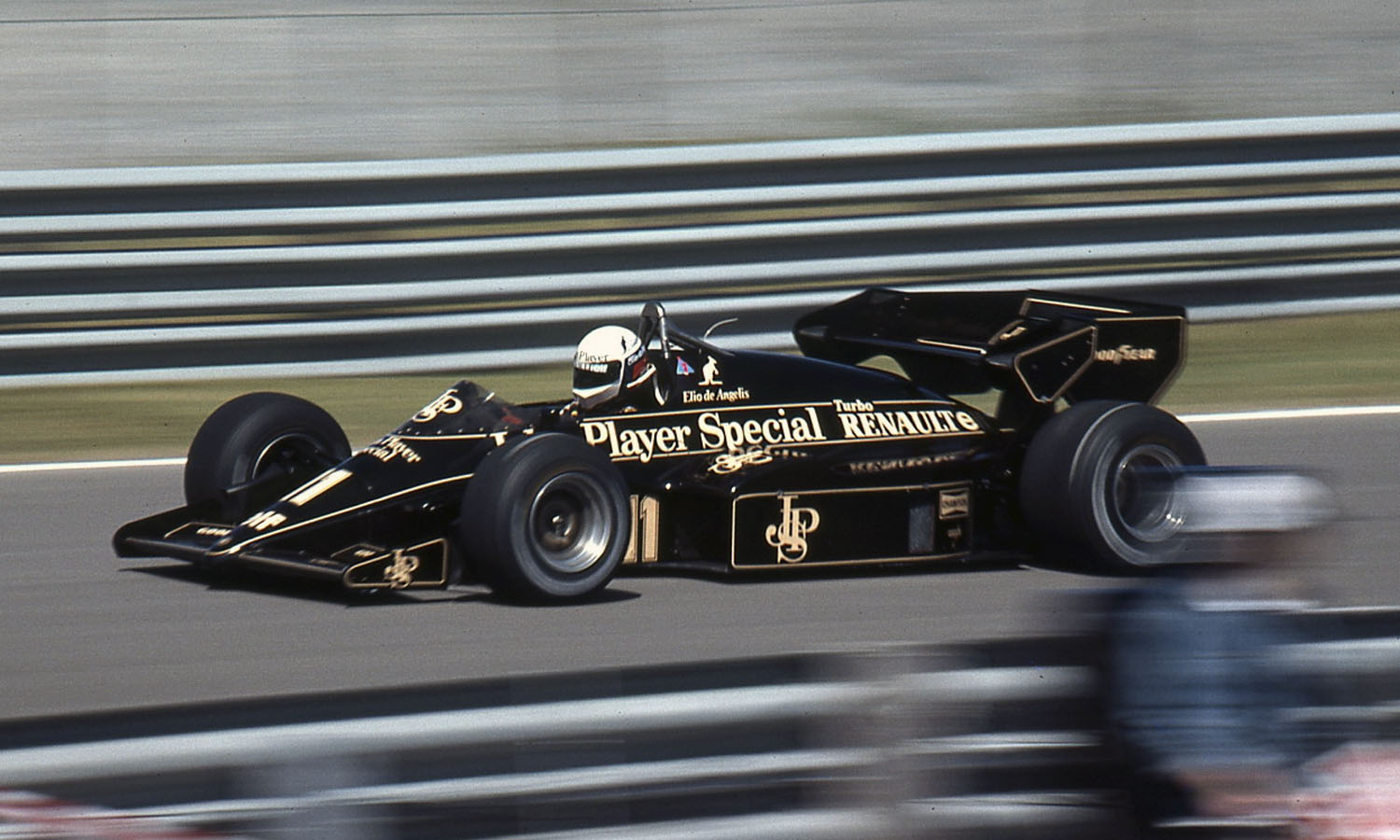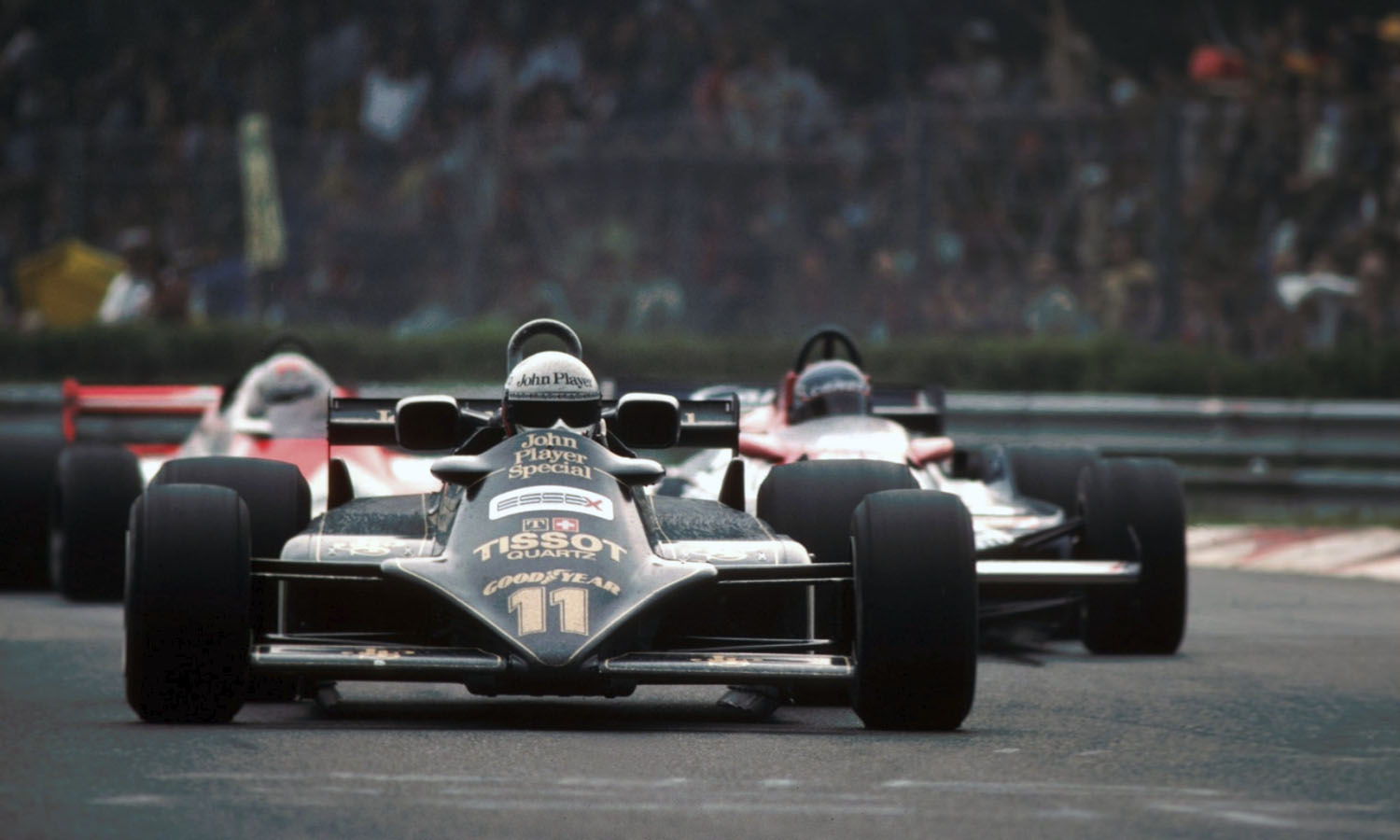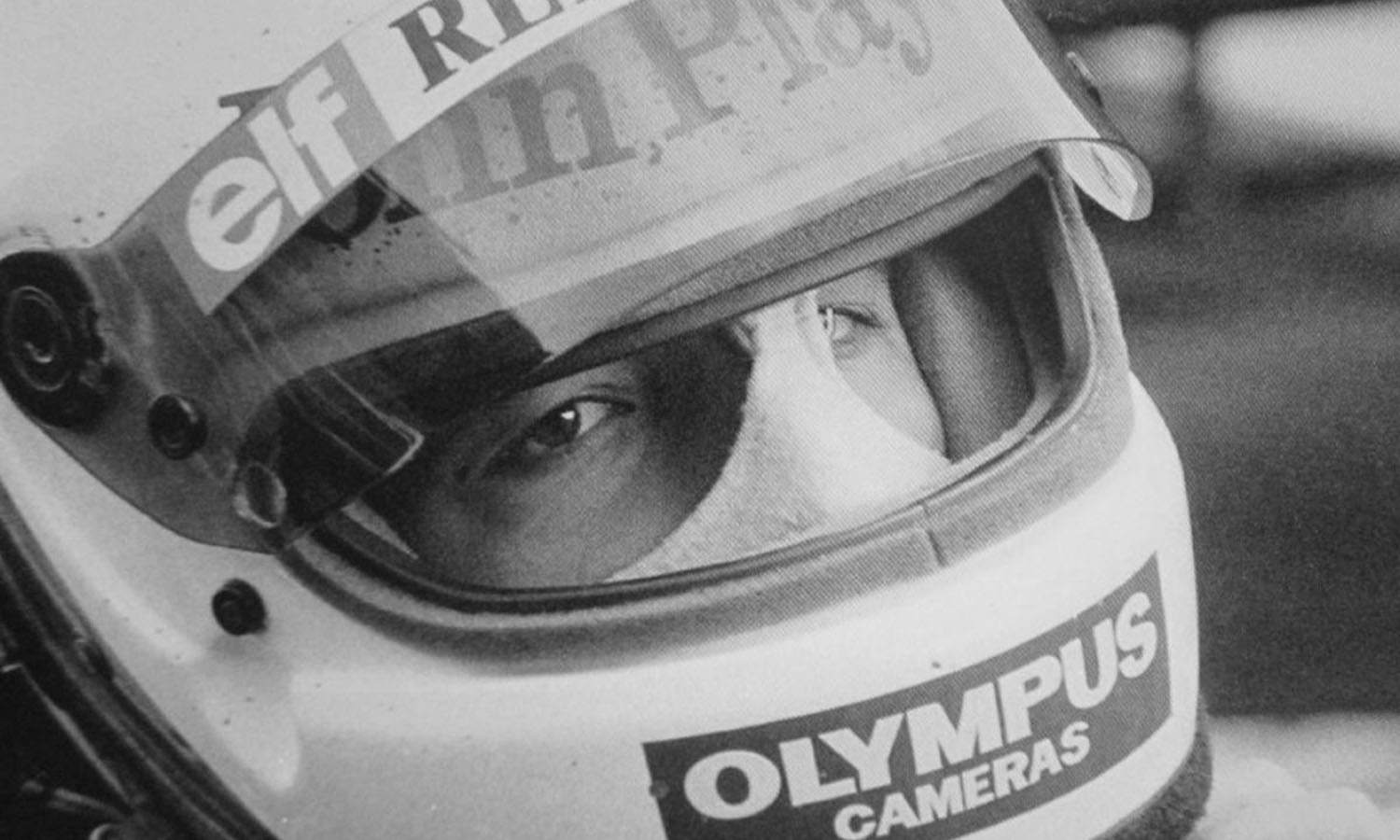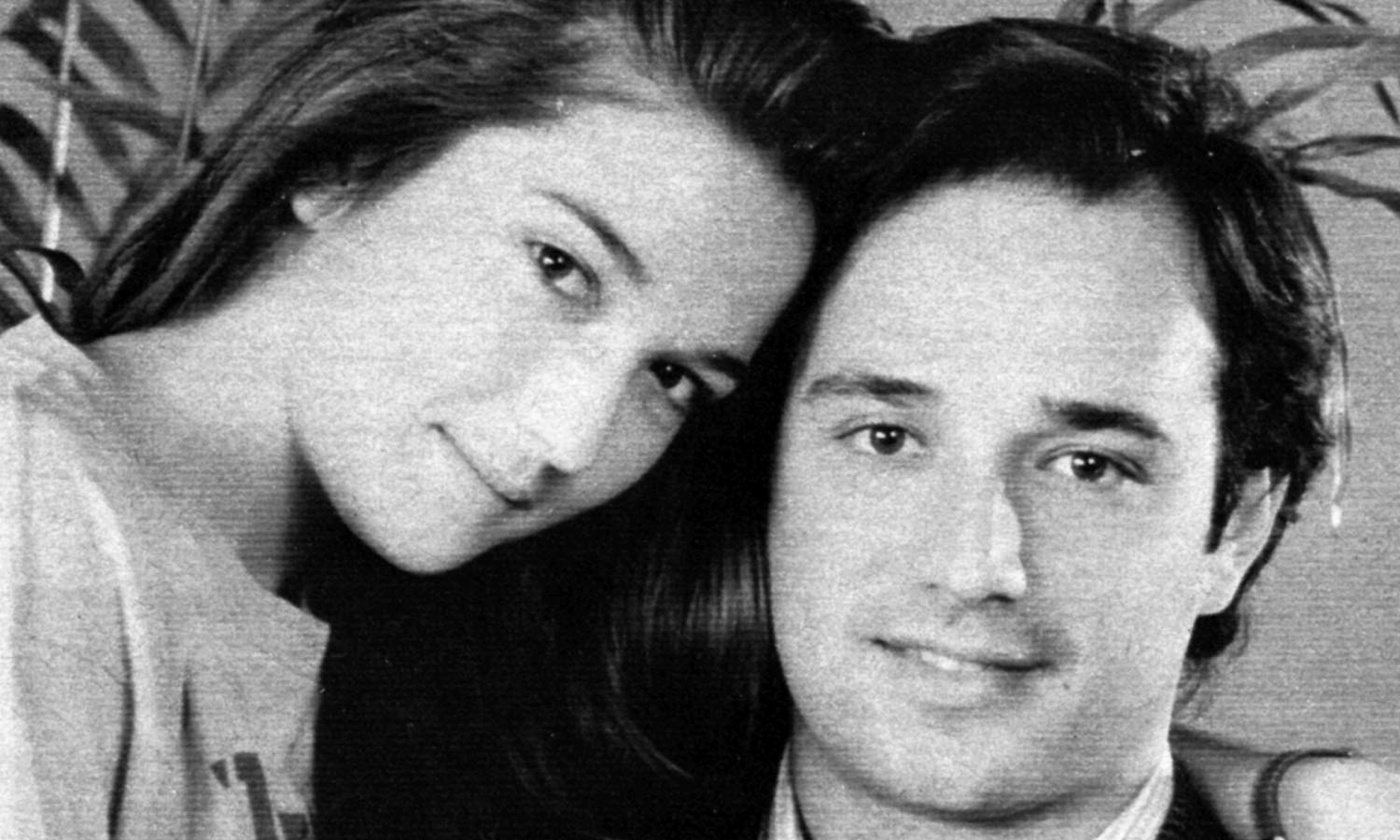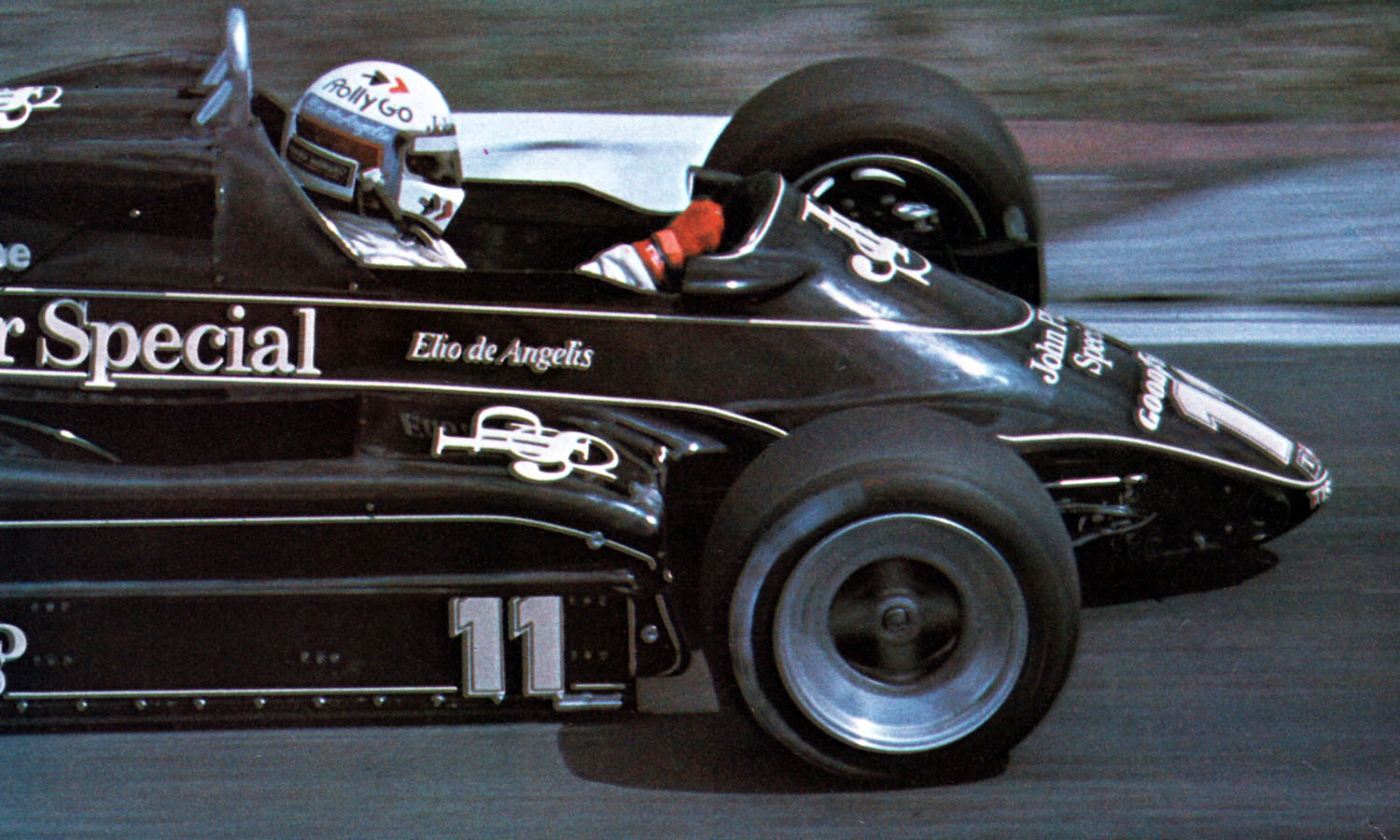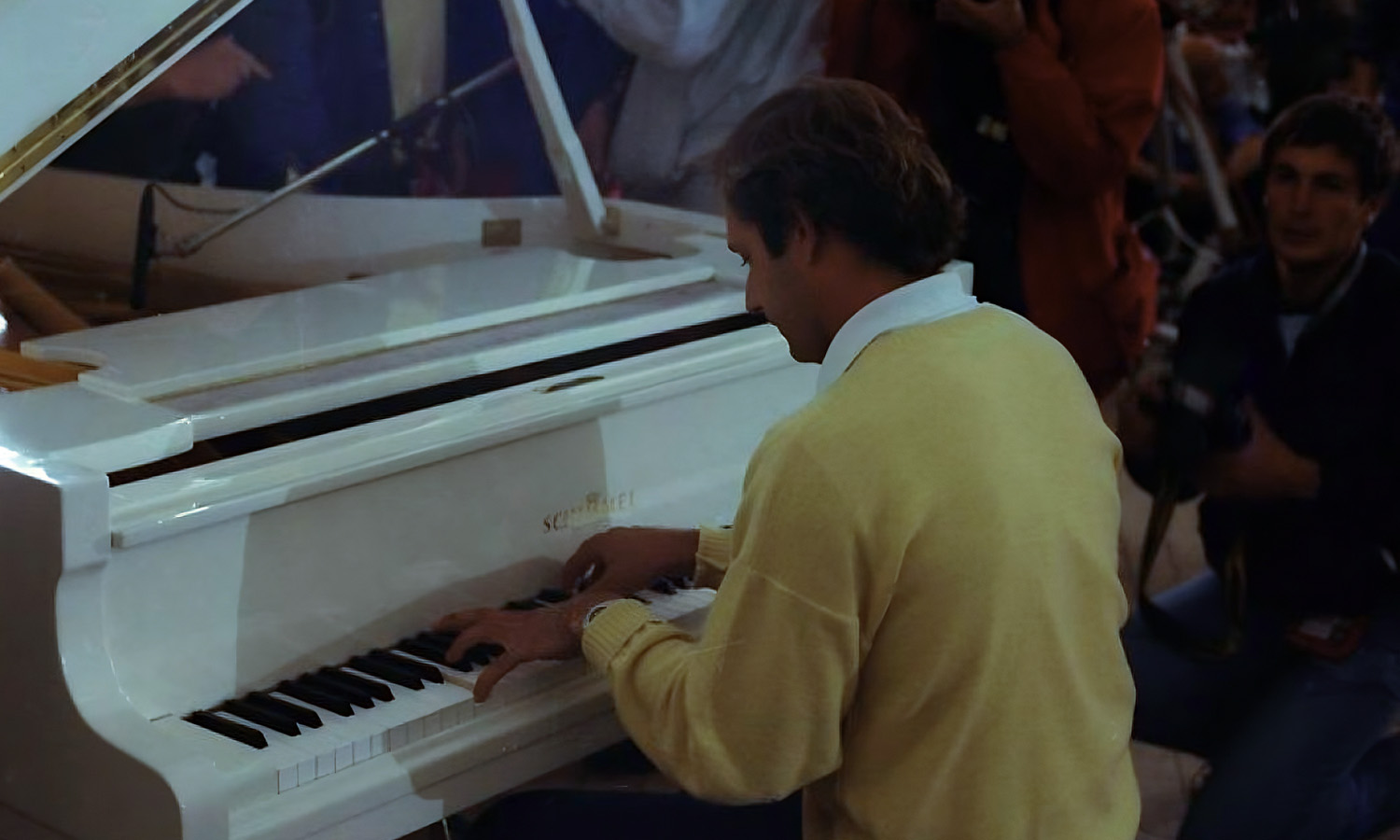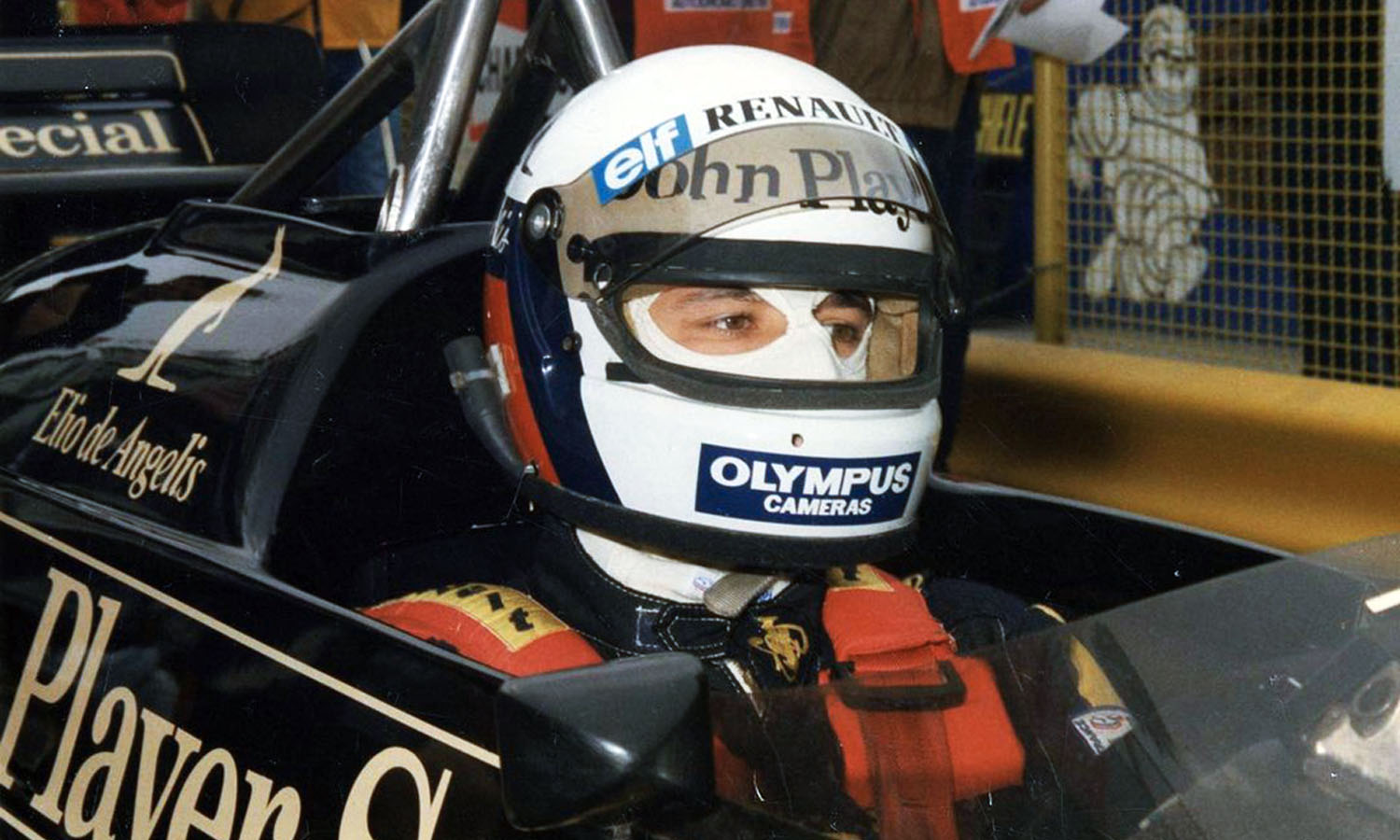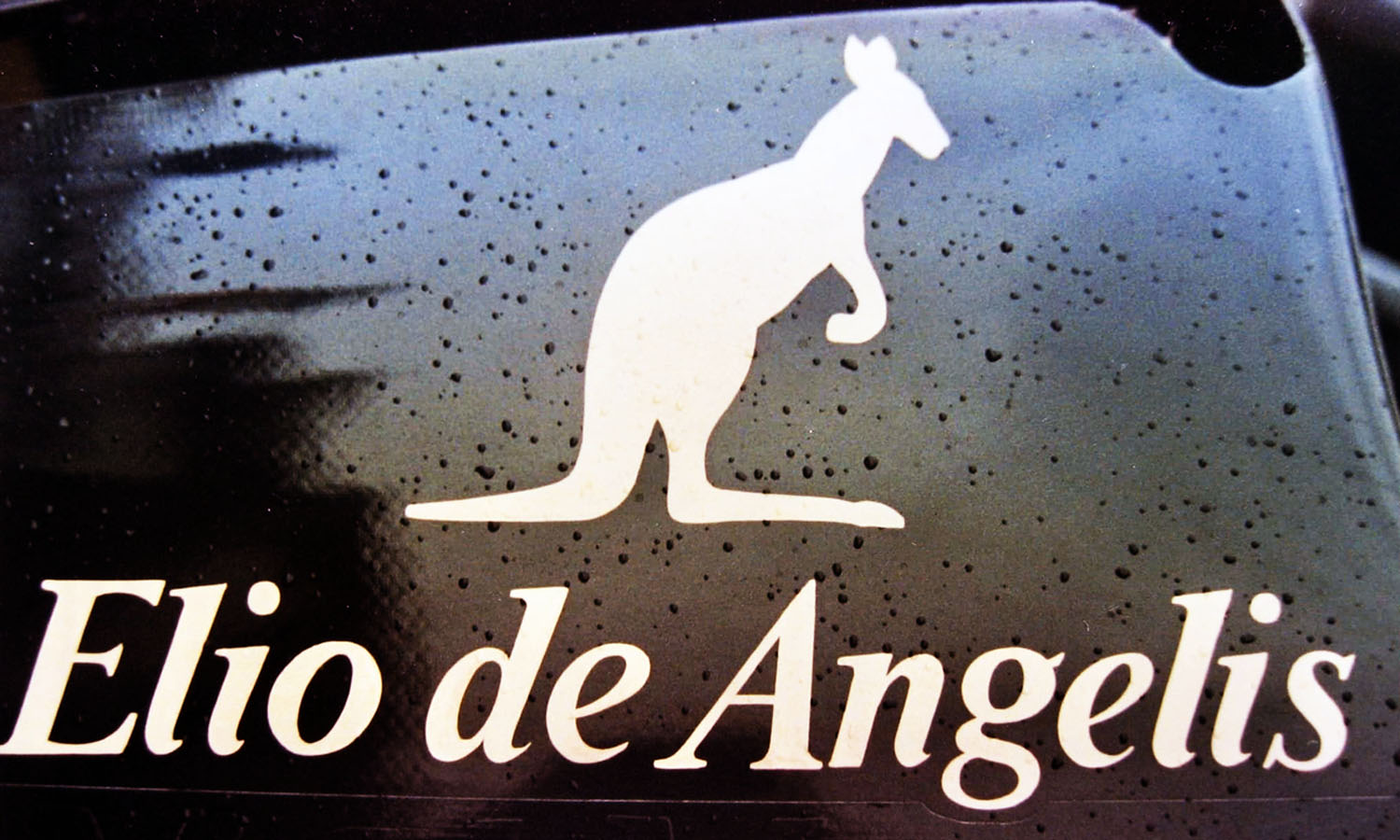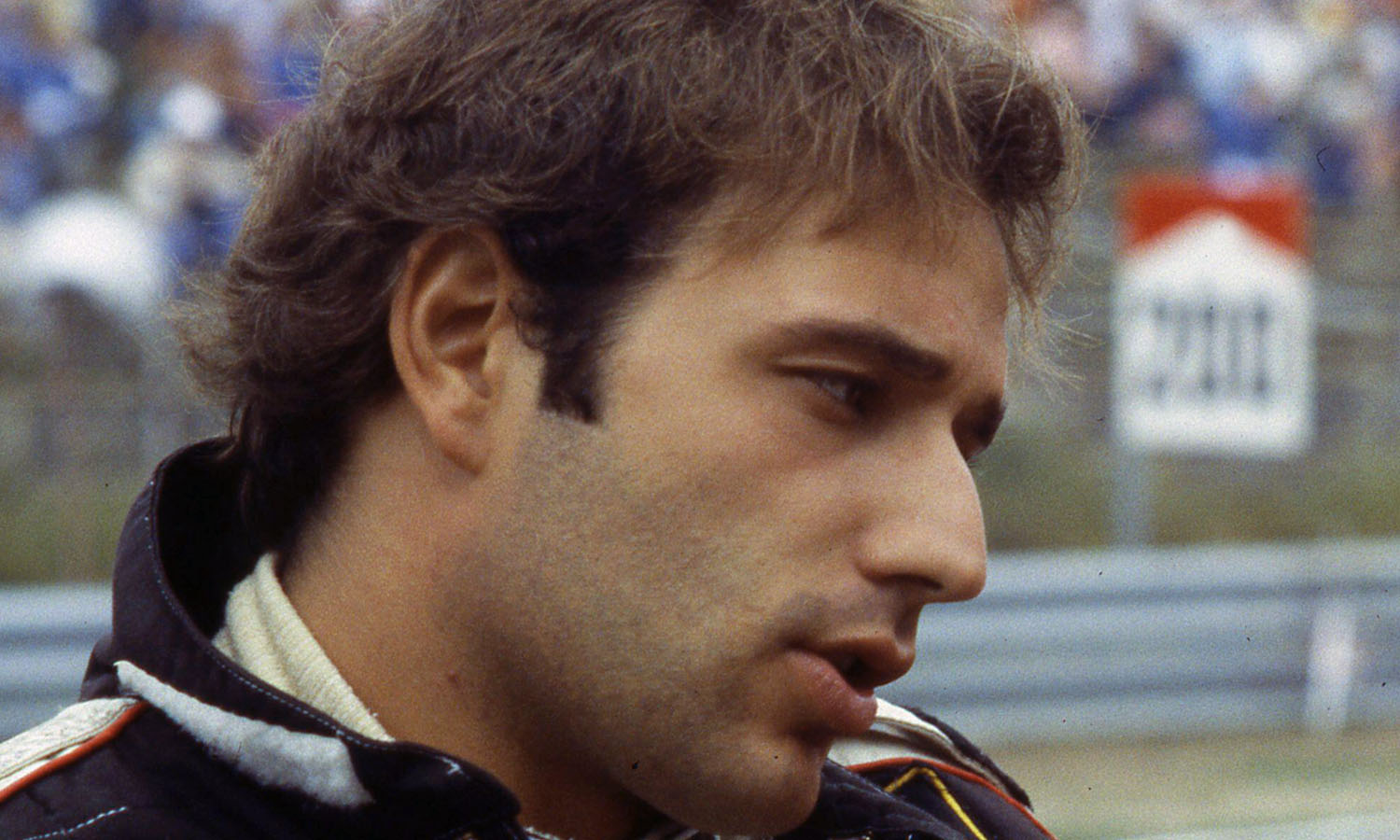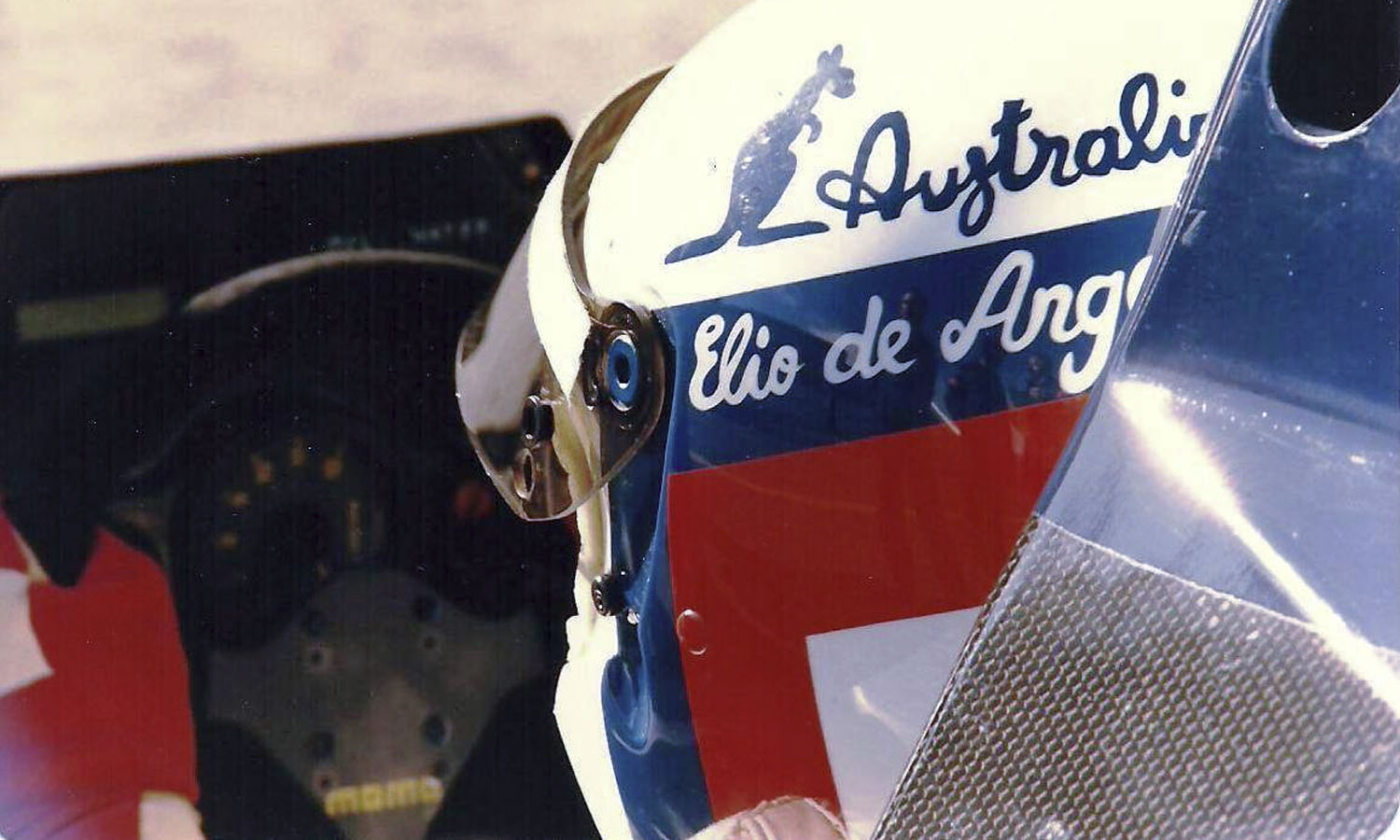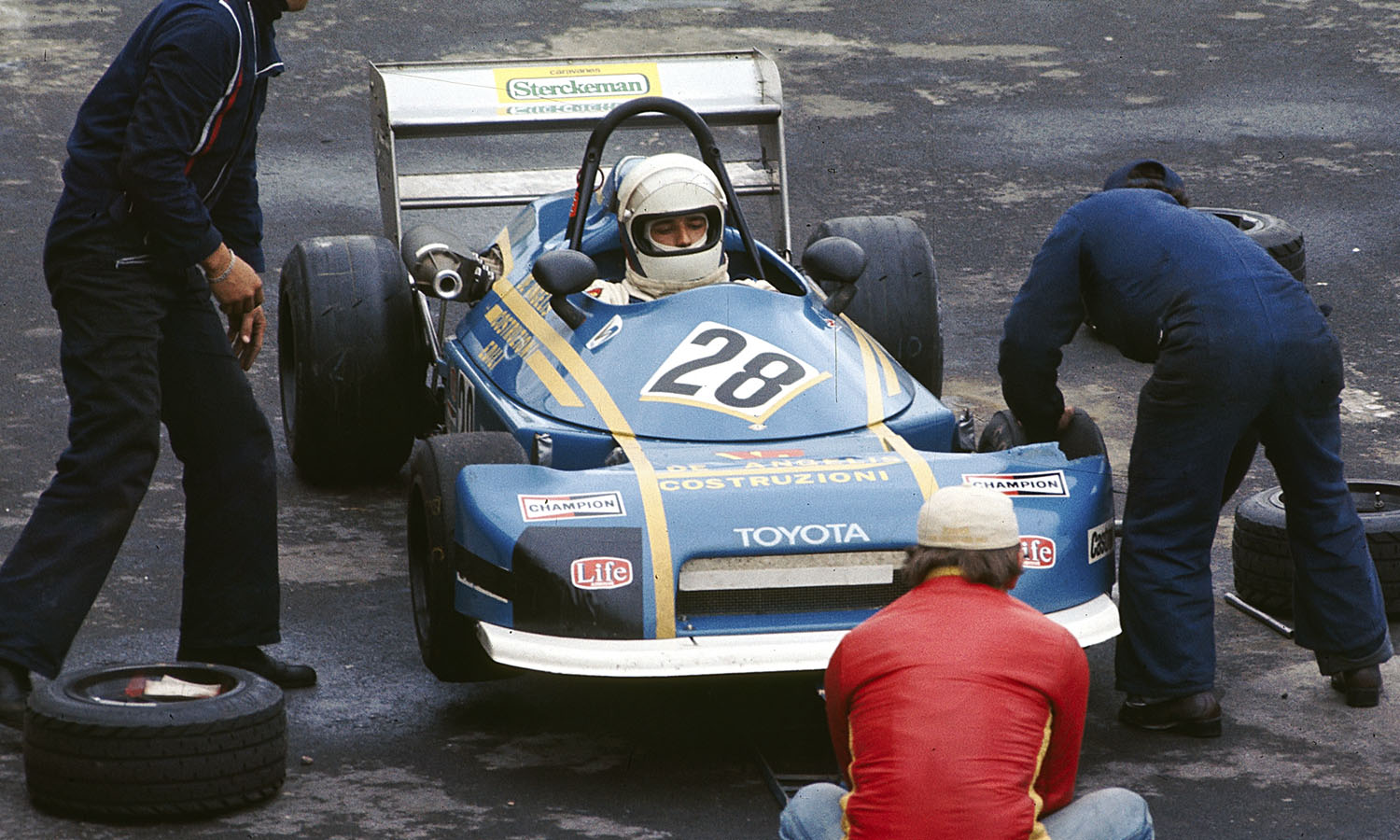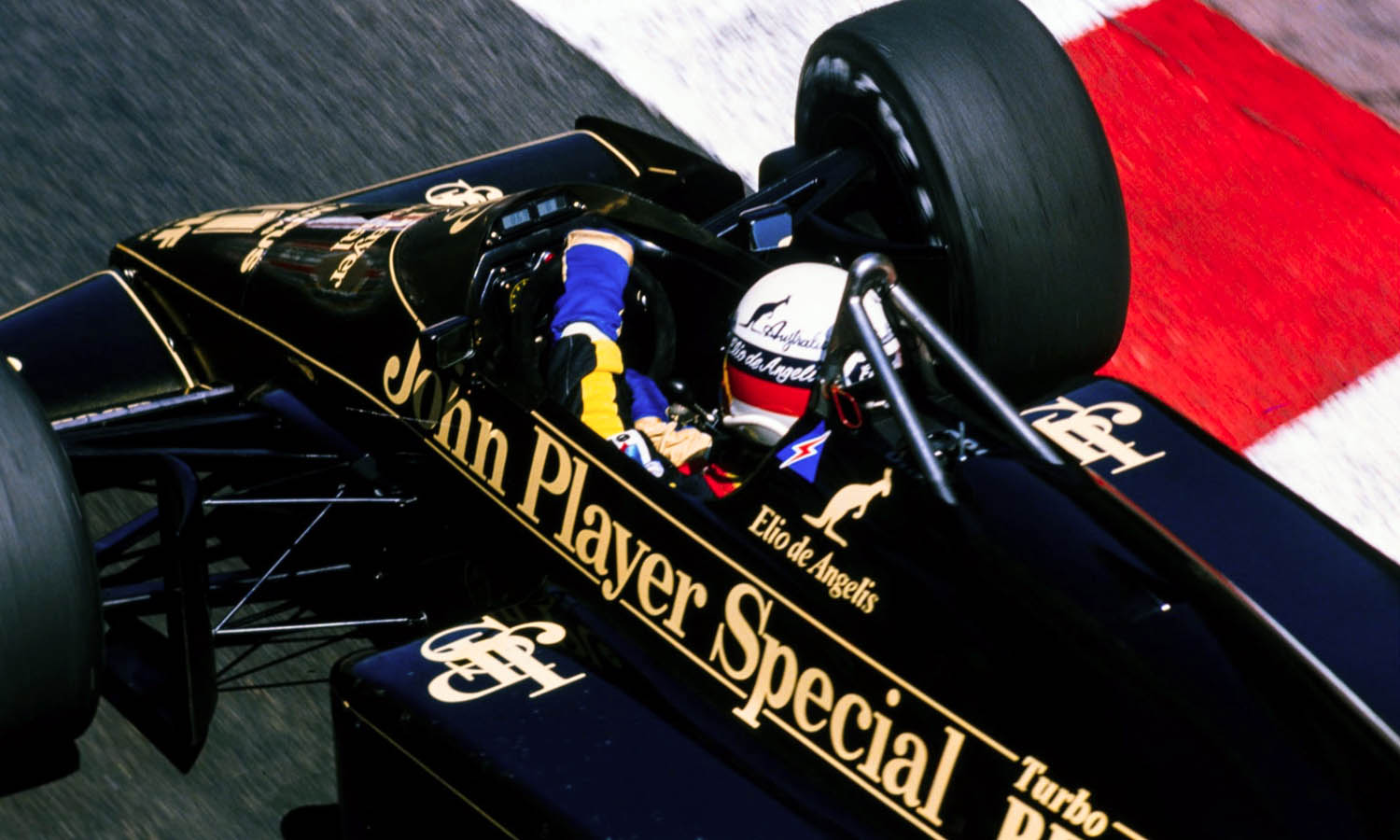A driving artist, Elio had found at Lotus a second family to flourish. Then Senna arrived…
Translated by this website
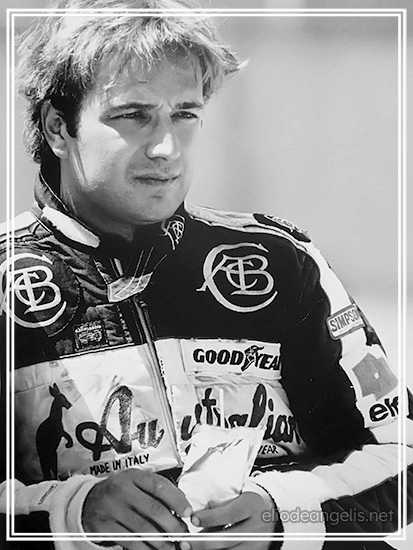
The eldest of a wealthy Roman family of four children, Elio received an education as complete as it was refined: architecture, law, economics and music (he excelled at the piano). His father Giulio, at the head of a flourishing real estate company, pushed him towards motorsports, being himself a passionate and excellent pilot in powerboating.
Fascinated by Jim Clark, the young Elio started karting at the age of 14 and soon reached the top. In 1975, he became vice-world champion at Paul Ricard behind the great Goldstein… But in front of Prost. The following year, Elio competed in a few Formula Italia races while becoming European Karting Champion. An omnipresent supporter of his son, Giulio invested in a Chevron F3 for season 77. Elio quickly felt at ease and won his first race in April in Mugello, before finishing second in Monaco behind the experienced Pironi, then winning the Grand Prix of the Lottery in Monza, against the top of the European Championship. The title of Italian champion goes to him after he won the final race of Magione by starting last! Meanwhile, Scuderia Everest gave him a Ralt-Ferrari F2 in Misano, where he led the race for a long time before being pushed off the track by Cheever. The changes of category or chassis, the discovery of new circuits do not pose any problem to Elio: he is immediately in the game, which denotes an exceptional natural talent.
Meteor
Ferrari is interested in this little prodigy who is entrusted for 1978 with a Chevron-Ferrari F2. At random tests in Fiorano, Elio is invited to test an F1. Gilles Villeneuve’s rating was then at its lowest and the young Roman dreamed awake. His modest results in F2 bring him back to reality: in the absence of a competitive car, the most gifted of drivers can do nothing. He then competed in the F3 Monaco Grand Prix in the hope of restoring his image: a risk that paid off since he imposed himself at the price of a “limit” maneuver that would send Patrick Gaillard into the rail: probably the only time Elio would not have behaved like a perfect gentleman! The hope of a Ferrari seat faded nevertheless, but in September, Shadow invited him for testing at Silverstone, where he “sticks” a second to Regazzoni: “He is an exceptional driver” exclaims Don Nichols.
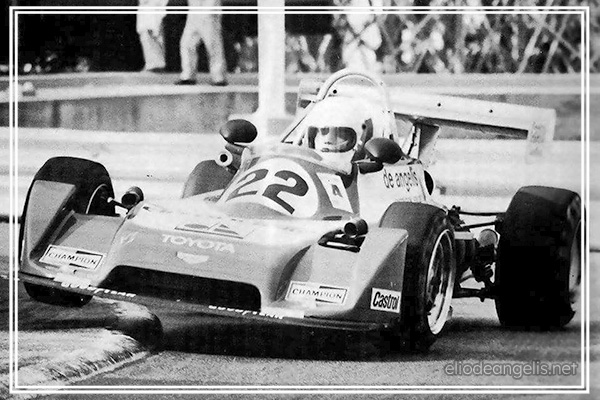
The performance comes to the ears of Ken Tyrrell, who offers a three-year contract to the young Roman before revising, worried by the new criteria of superlicense (unless Ken was impressed by Jarier’s performance at the end of season 78?). De Angelis then turned to Shadow and with the financial help of his father, got a seat in F1 after only two seasons of motorsport. Young, handsome, rich and talented, de Angelis seemed to have been born under a good star. His meteoric rise caused jealousy, but he was determined to succeed in racing and his performance at the wheel of the Shadow attracted the attention of Colin Chapman. When Reutemann left Lotus at the end of the season, Elio found himself alongside Mario Andretti. Great lord, he is not stingy with advice to his young teammate, who does not take long to take over, obtaining a promising second place in Brazil. Lotus chassis were not what they used to be, but Elio finished with an excellent seventh place in the championship. The rather cold relationship with Chapman begins to warm up.
Chapman throws his cap!
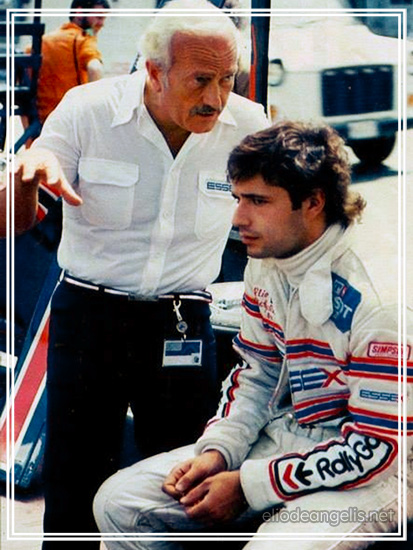
In 1981, debutant Nigel Mansell joined Lotus: water and fire must coexist! Seduced by the temperament of his compatriot, Chapman abandoned Elio somewhat, but it was the latter who brought Lotus back on the road to success: at a memorable Austrian Grand Prix in 1982, he won his first race by resisting Rosberg’s final rush with a muzzle. Chapman throws off his cap and flips his jacket, comparing Angelis to Clark! This time, the two men seem to have a solid and lasting relationship but fate will decide otherwise.
Chapman disappeared, it is with Gérard Ducarouge that Elio will build the relationship necessary for his development as a driver: “Elio is morally quite fragile. He needs to be surrounded, protected, to feel that we are taking care of him and his machine,” said the French engineer of him. After a calamitous ’83 season, Lotus returned to the slope in 1984 and Elio finished third in the championship behind the invincible McLaren-Porsche of Lauda (his model) and Prost. Although he is still young, Elio is now very experienced. If he is not the man of the blows of brilliance, he is fast, good transmitter to the point and commits a minimum of mistakes. No doubt because of the criticism he suffered in his early days, this sensitive boy appears more detached and lonely than his Latin colleagues.
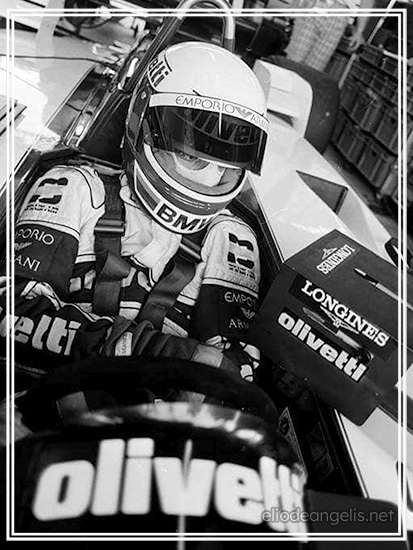
But his image as a somewhat nonchalant romantic hero hides a serious approach to racing. He is now ripe to become world champion and the Lotus-Renault 97T that he develops with Gérard Ducarouge during the winter of 84-85 should allow him to pick the fruits of his loyalty. Because Elio considered Lotus as his second family, he begins his sixth season under his colors, which have earned him the nickname of “Black Prince”. He even turned down a proposal from Williams. As for Ferrari, he is still waiting… Elio still thinks of racing in F1 for about ten years, after which he would be devoted to real estate business and why not to music… But before that, he set himself a goal: to win the world title with Lotus. When landed in Brazil, de Angelis met his new teammate: Ayrton Senna. He is barely recovering from facial paralysis that deprived him of testing during the off-season and the entire Lotus team is focused on the newcomer. Kind but proud, de Angelis takes umbrage. His start to the season was nevertheless satisfactory: the disqualification of Prost in Imola even allowed him to add a second victory to his record and occupy the lead of the championship. Despite this, the boss of the Lotus team, Peter Warr, bets everything on Senna and even if Elio manages to save his friendship with Ducarouge, his morale takes a hit and the gap widens with his teammate, whom he calls “Little Machiavelli”.
De Angelis has only one solution: leave Lotus to join Brabham, where Gordon Murray designs a strange flat single-seater like a flounder: the BT55. This one, alas, is not a success and the beginning of season 86 is very disappointing for Patrese and de Angelis. The day after the Monaco Grand Prix, the Brabham team went to the Paul Ricard circuit for a Foca test session. A new wing, of imposing size, is mounted on the BT55. On May 14, Elio lies down in the tiny cockpit of his Brabham and begins a series of laps at the large 5.8km track. Suddenly, in the esses of the Verrerie, the new wing breaks, the Brabham spins, flies away and falls upside down on the rail before coming to rest in the safety lane and catching fire. The efforts made to save Elio will be in vain. Transferred to the Timone hospital in Marseille, he succumbed to irreversible brain damage. Thus disappeared the last gentleman of Formula 1.
© 1999 Auto Hebdo • By François Hurel • Published for entertainment and educational purposes, no copyright infringement is intended

